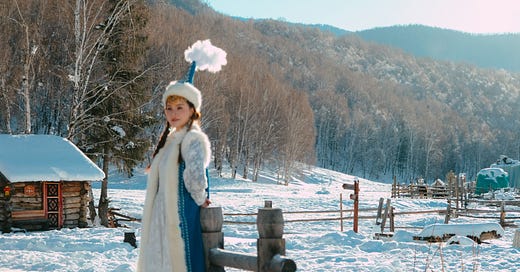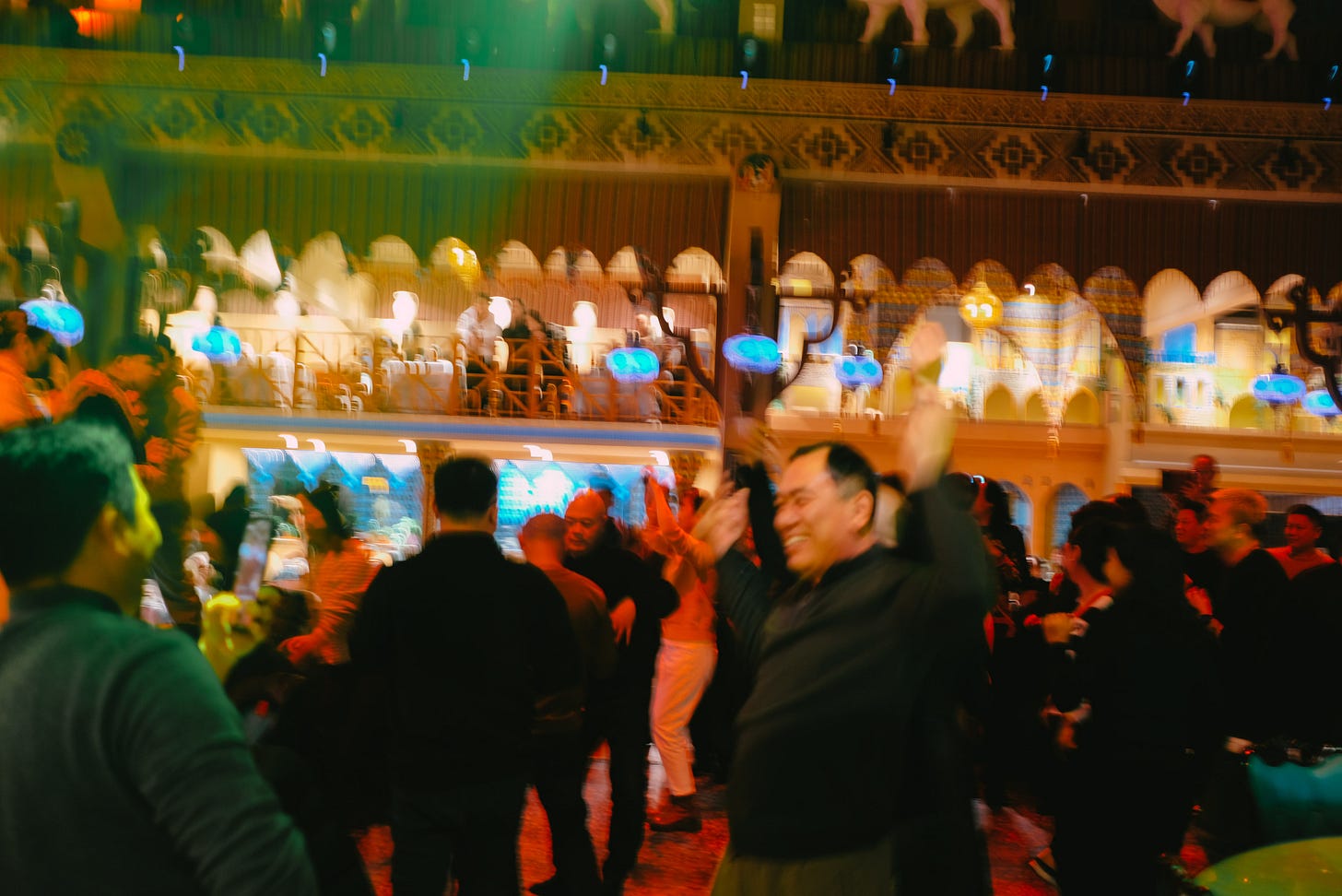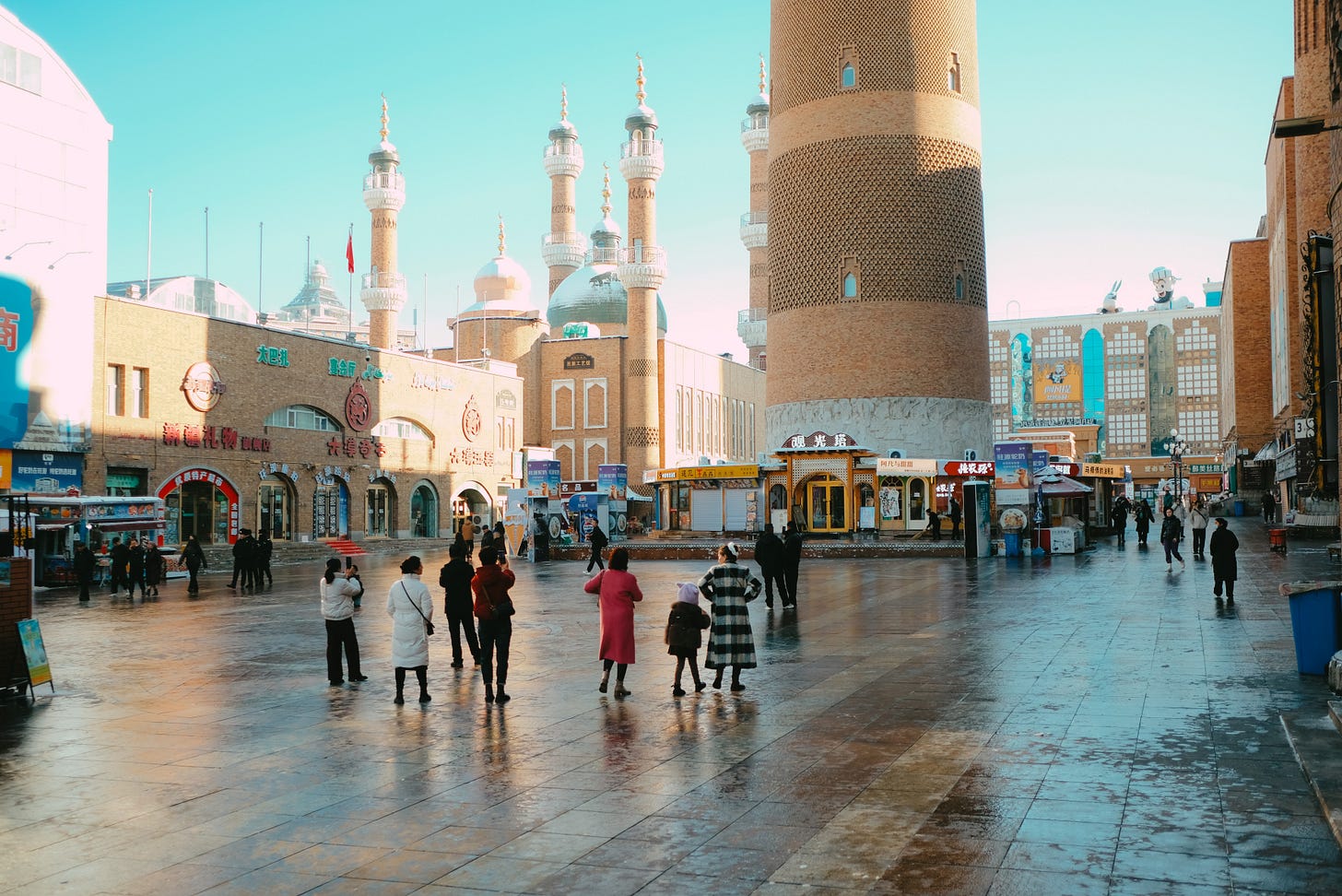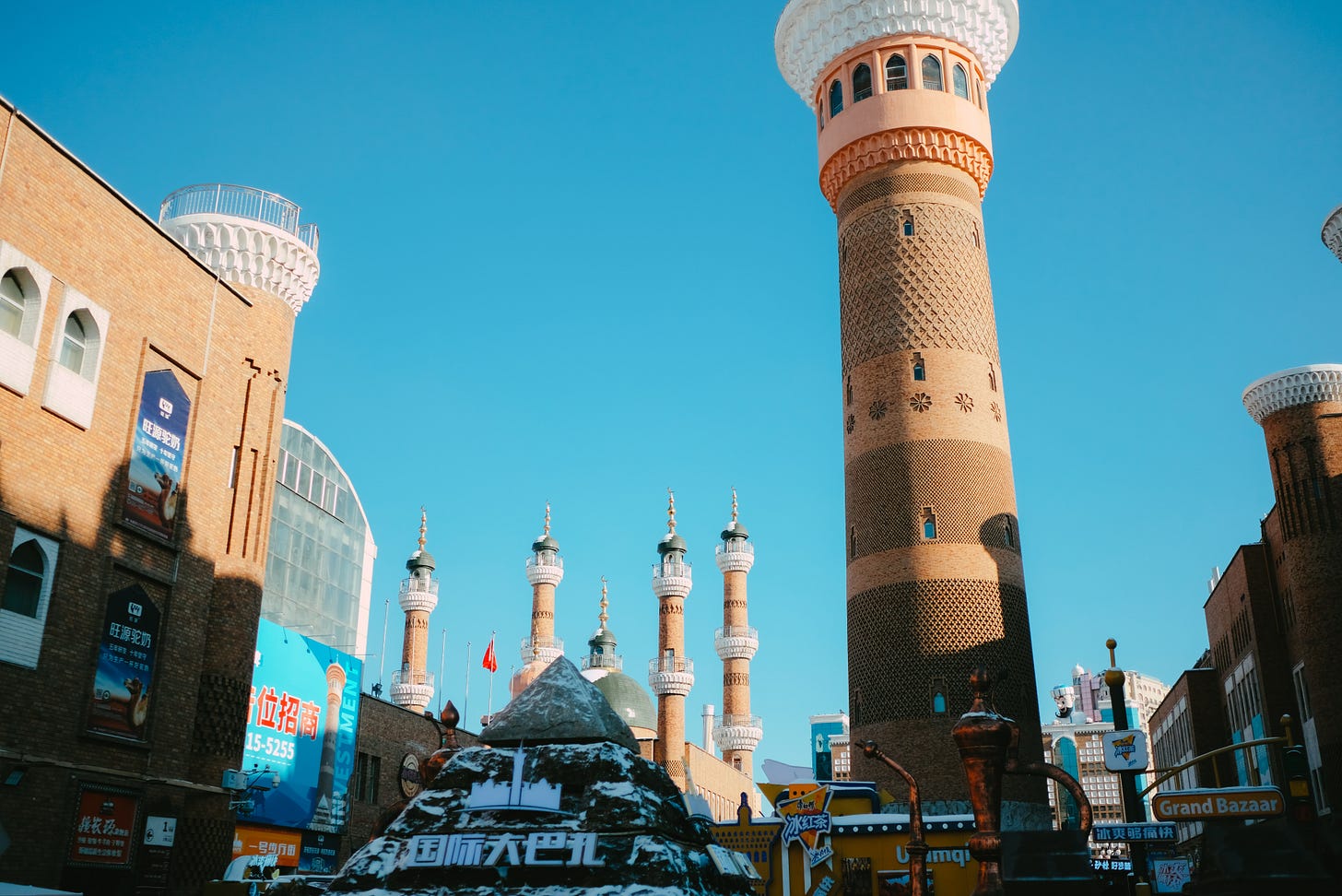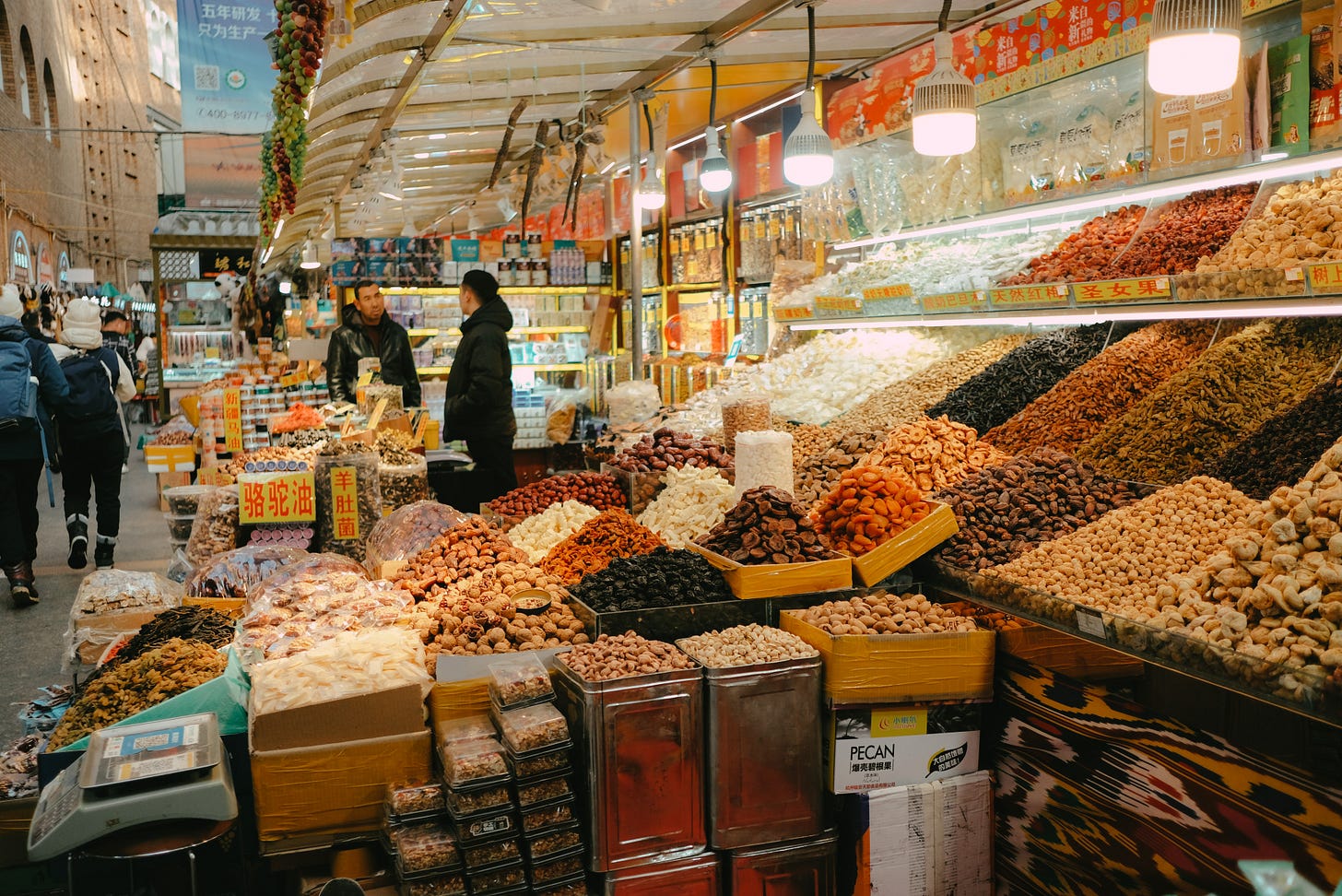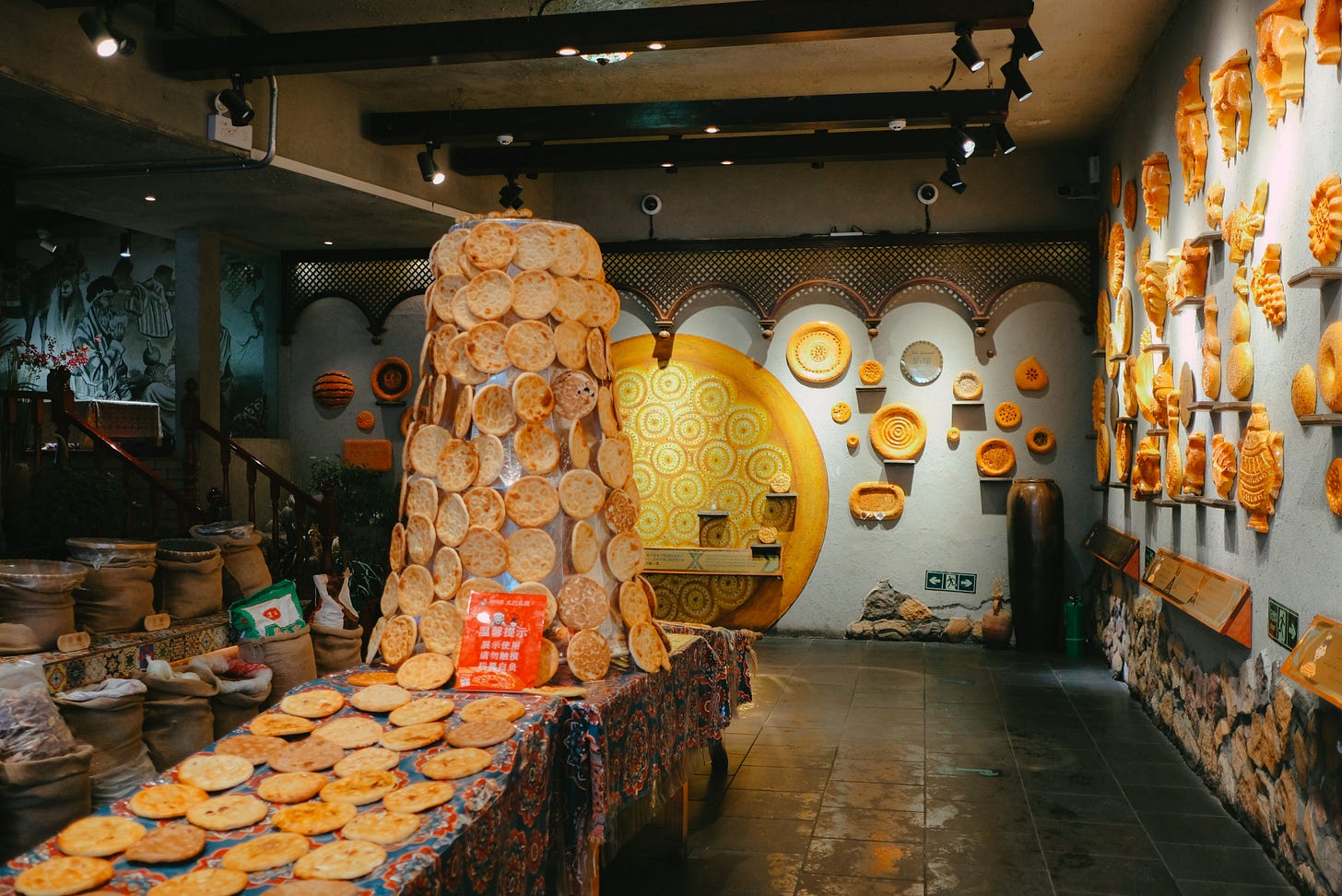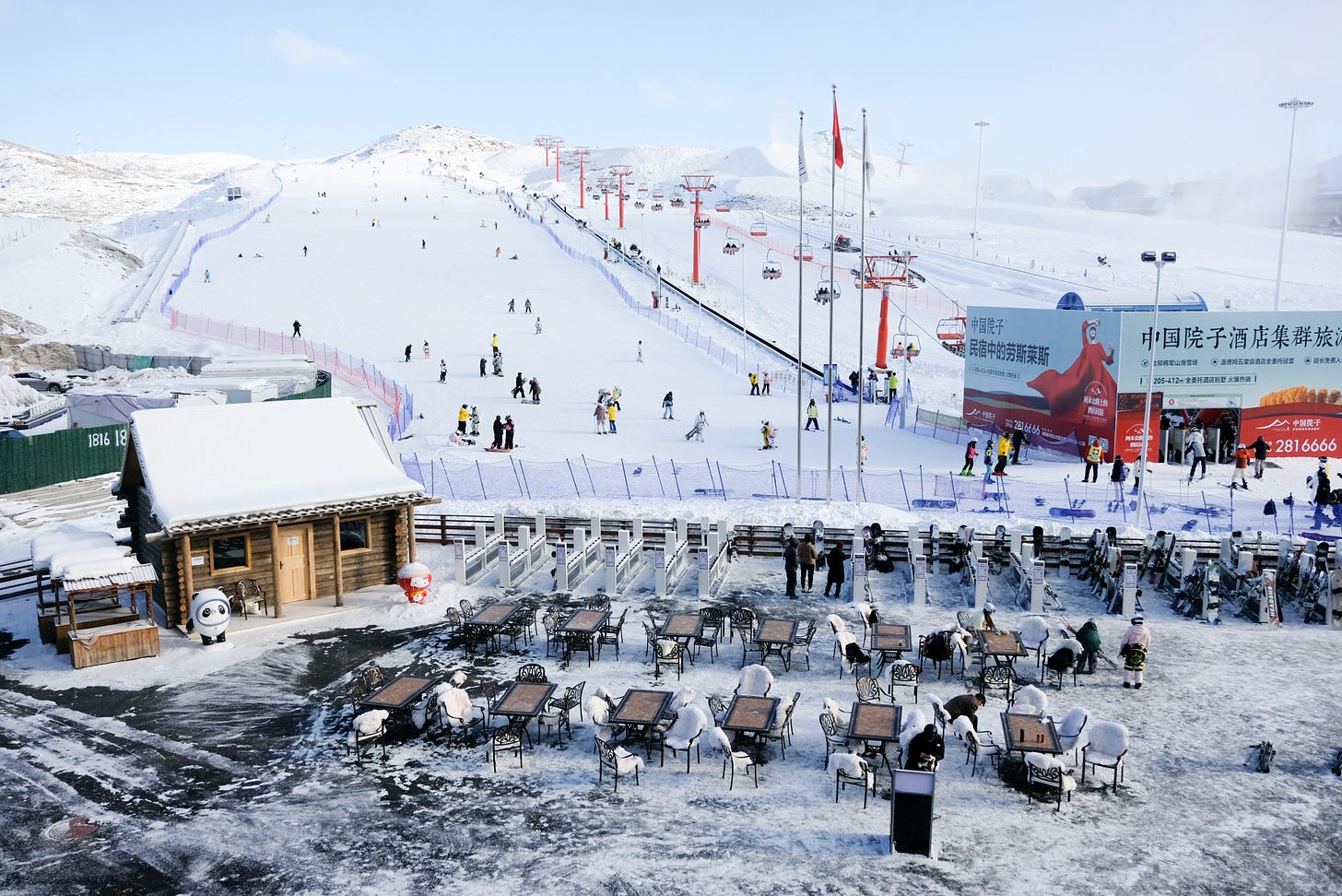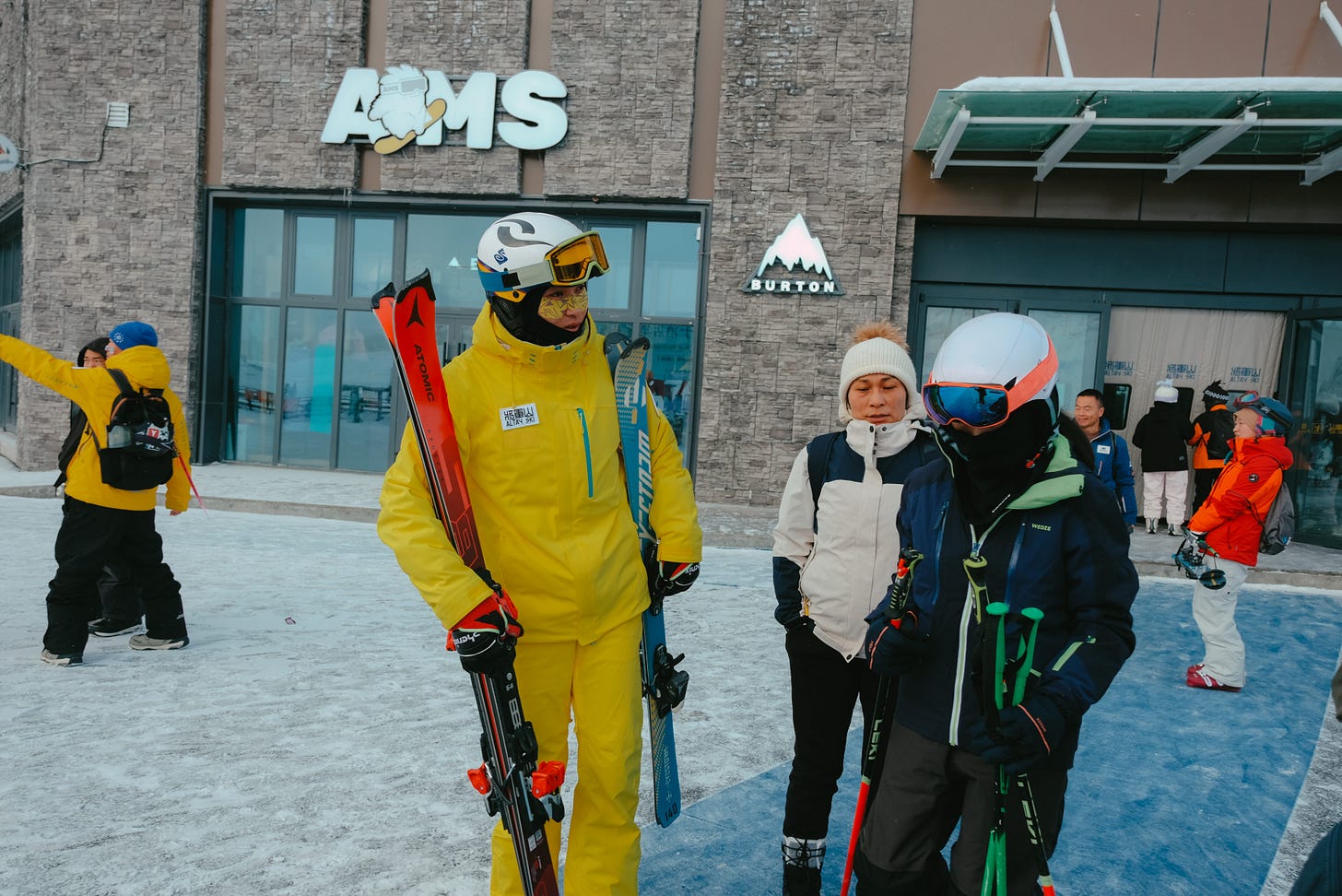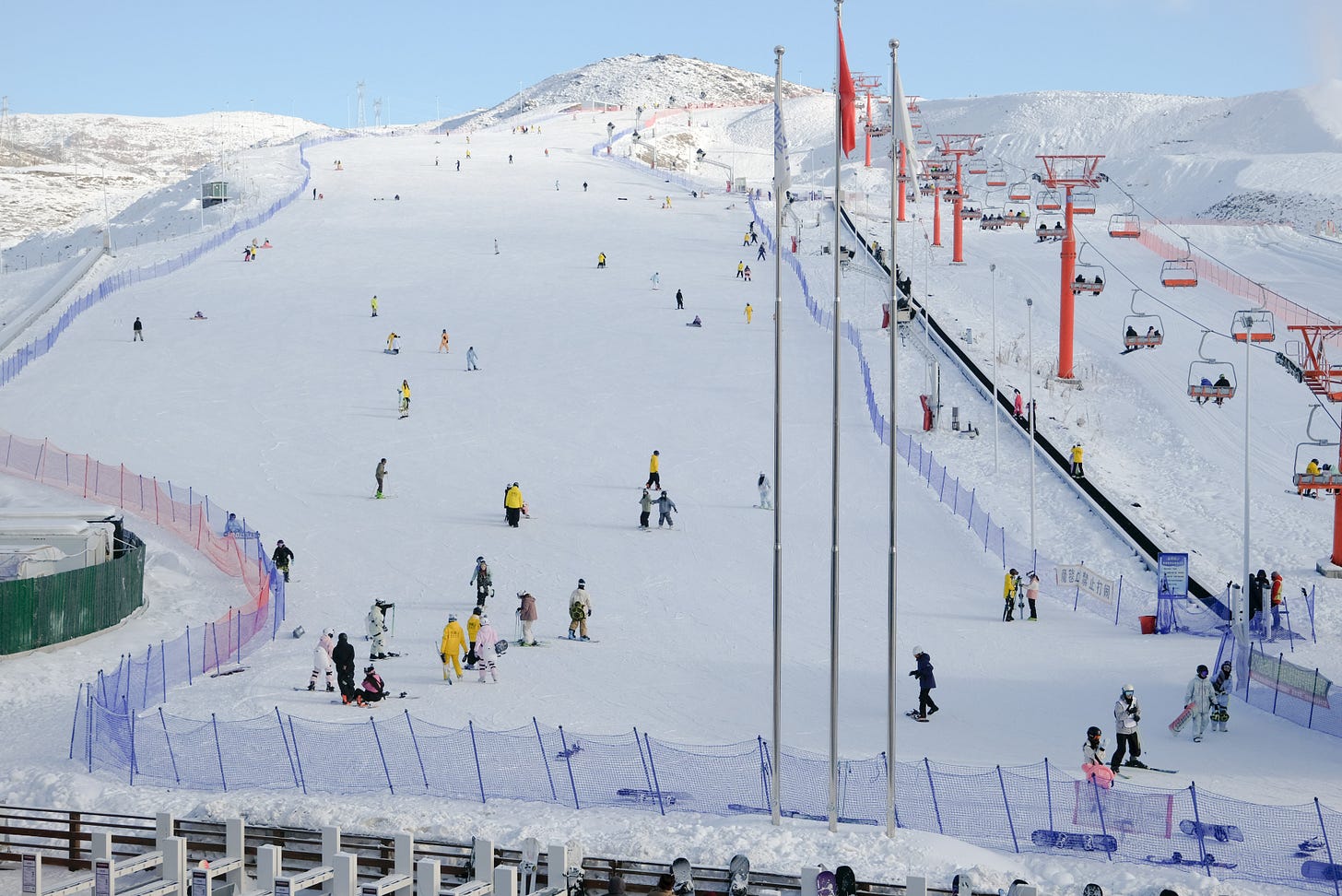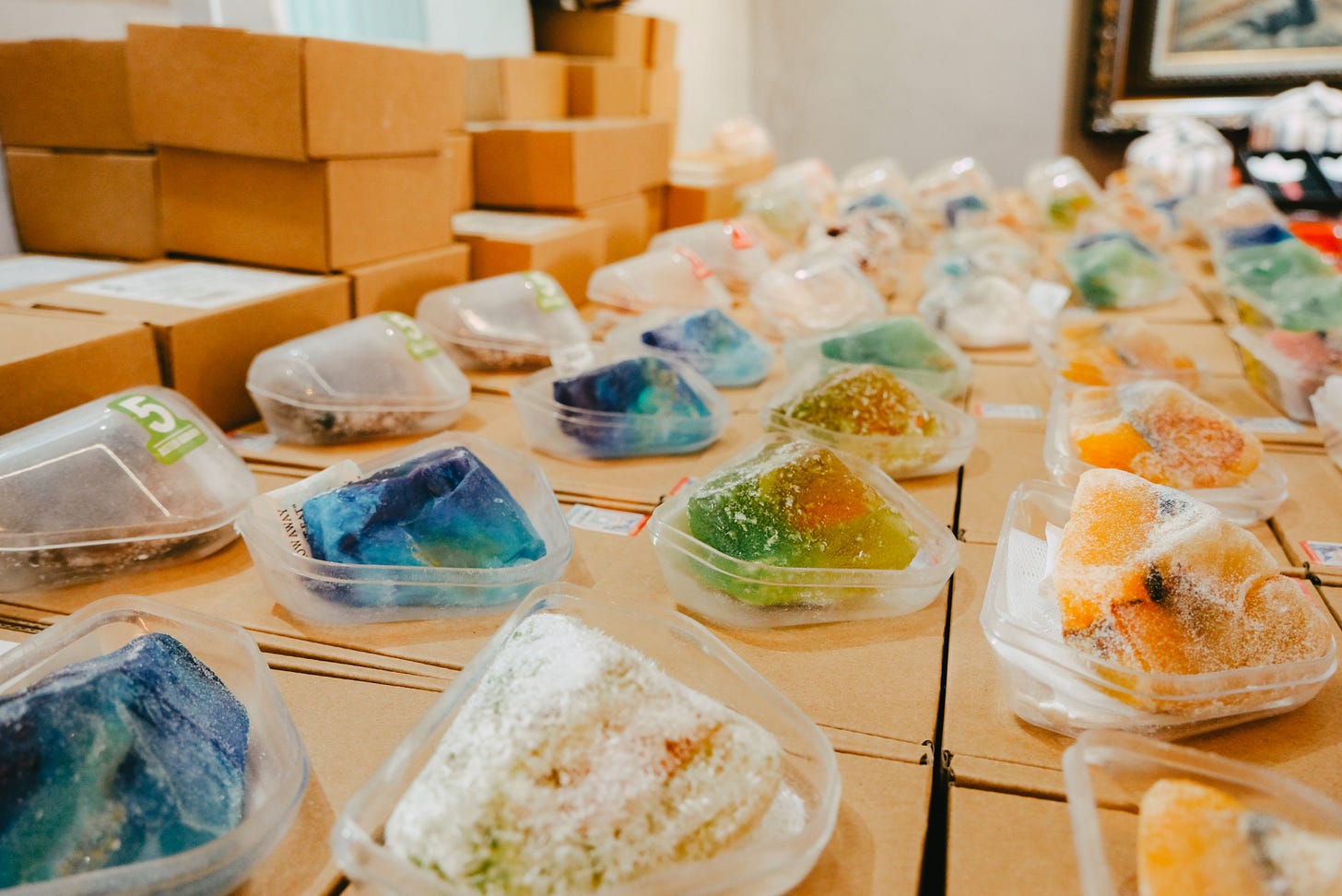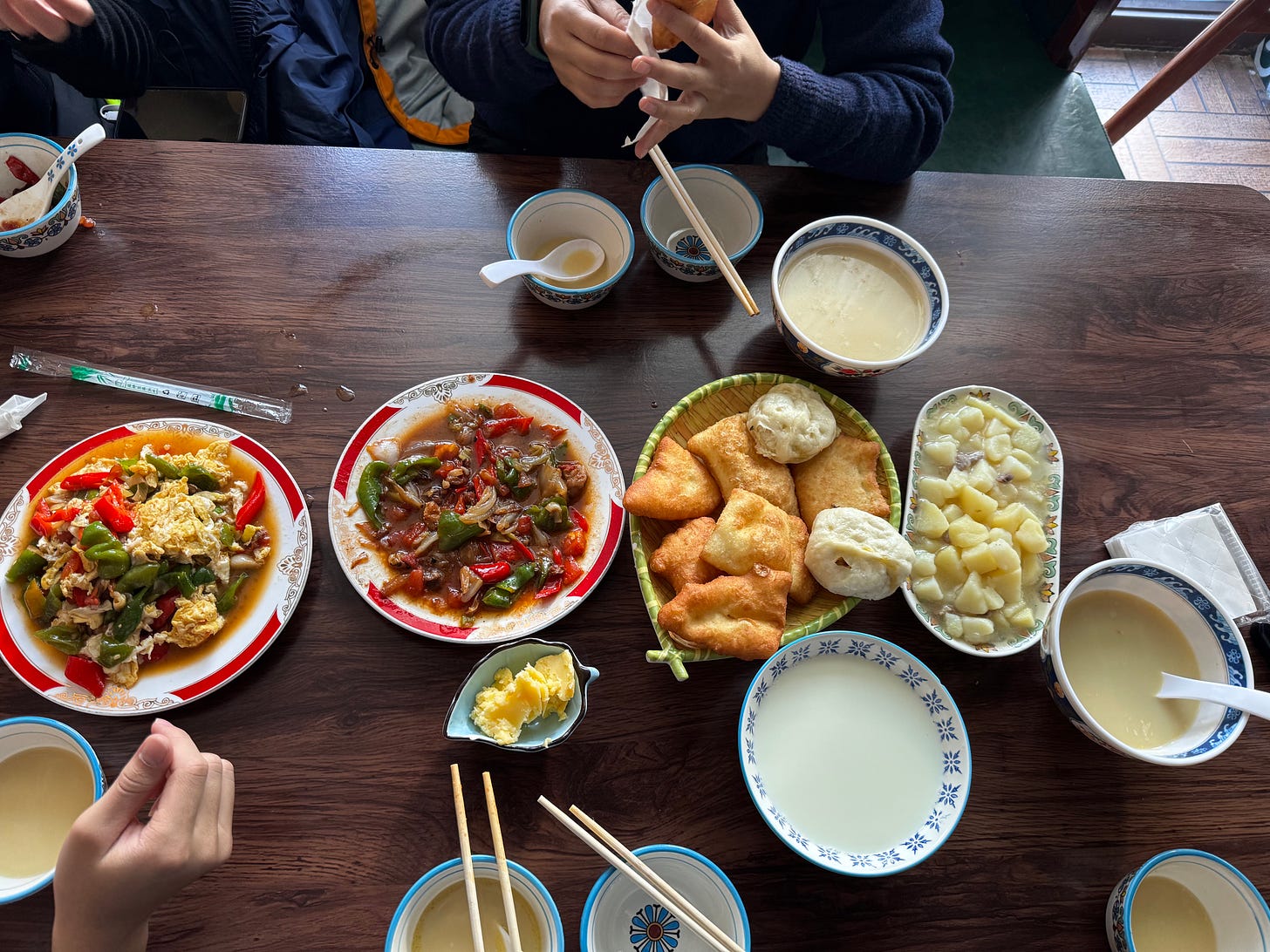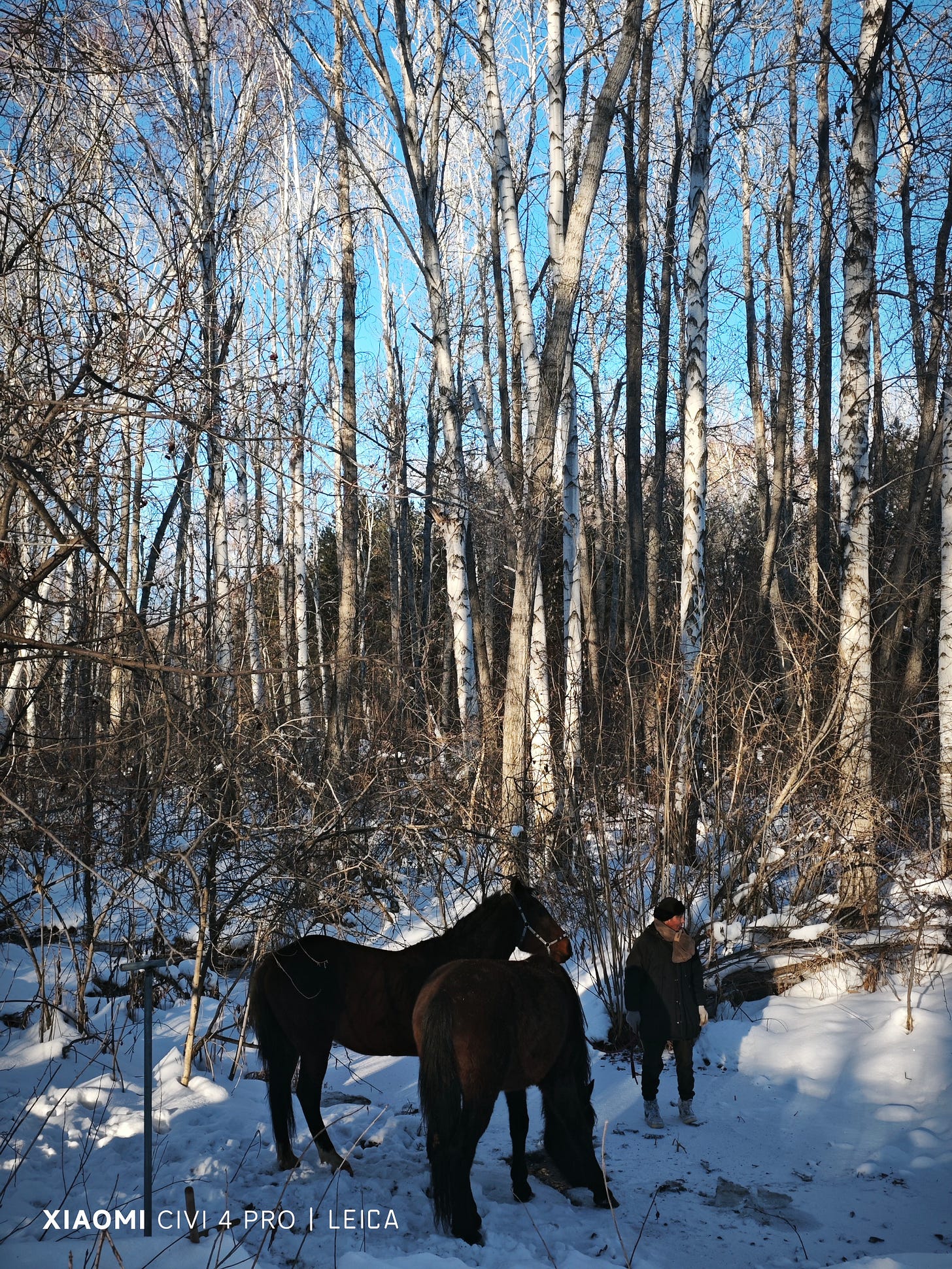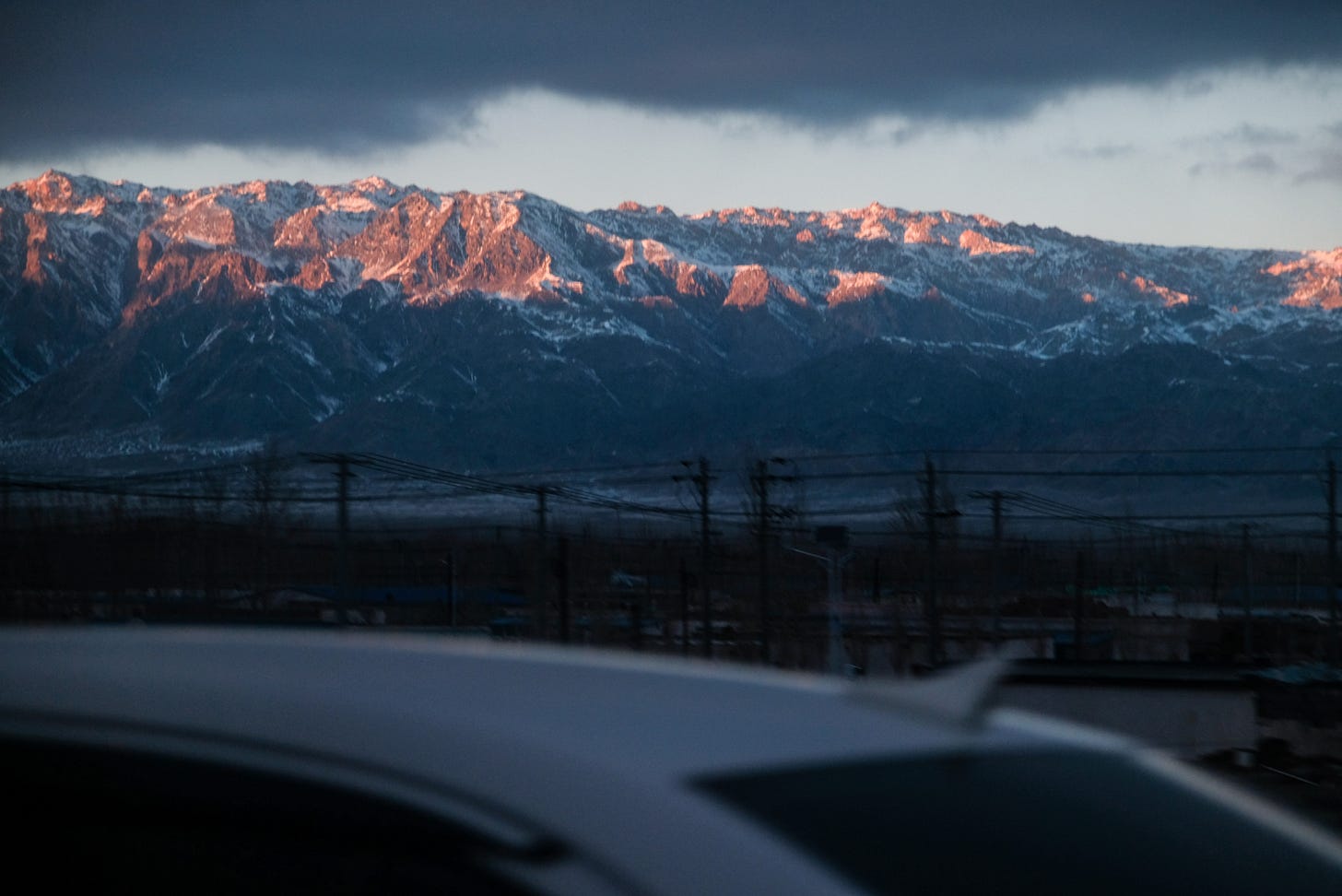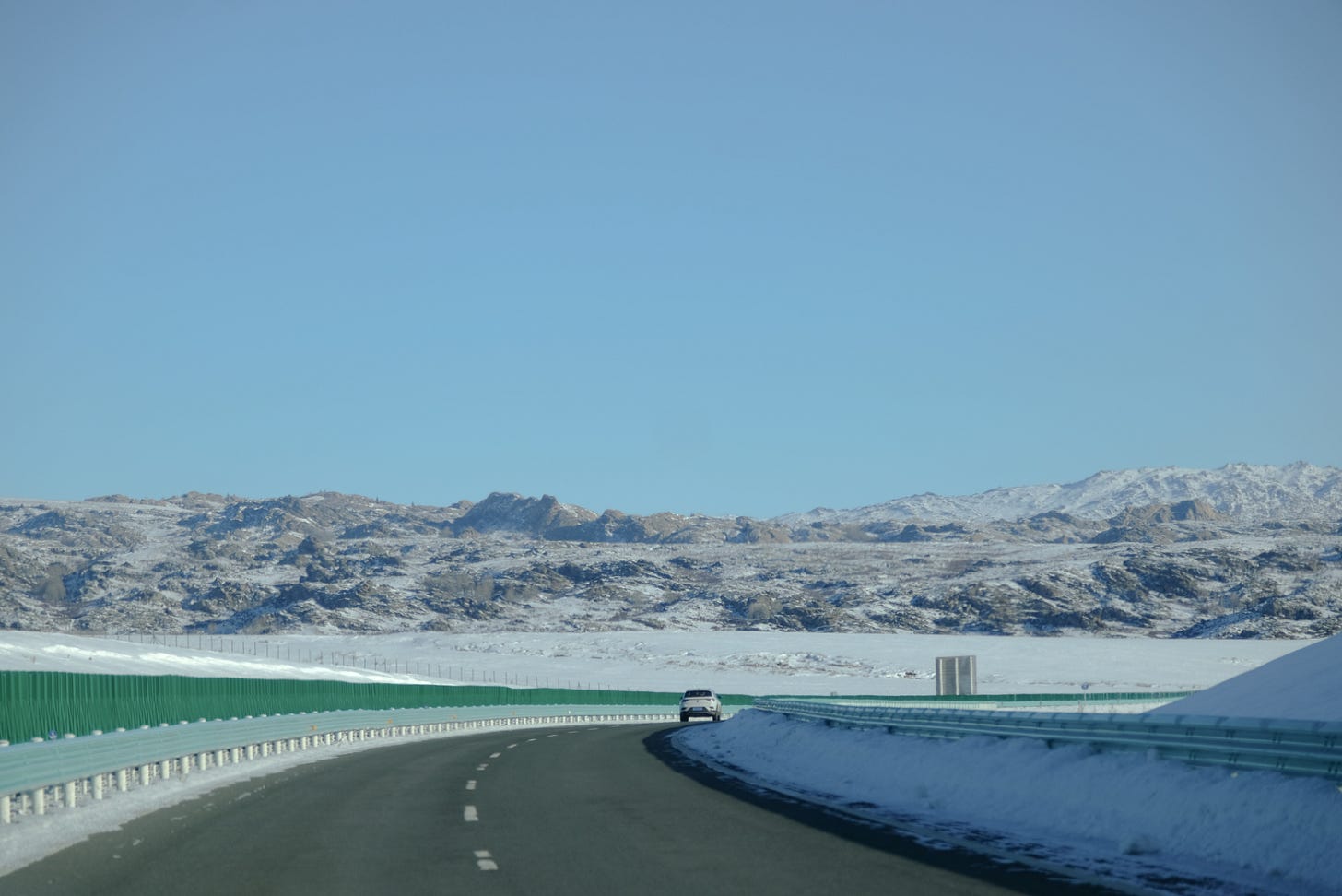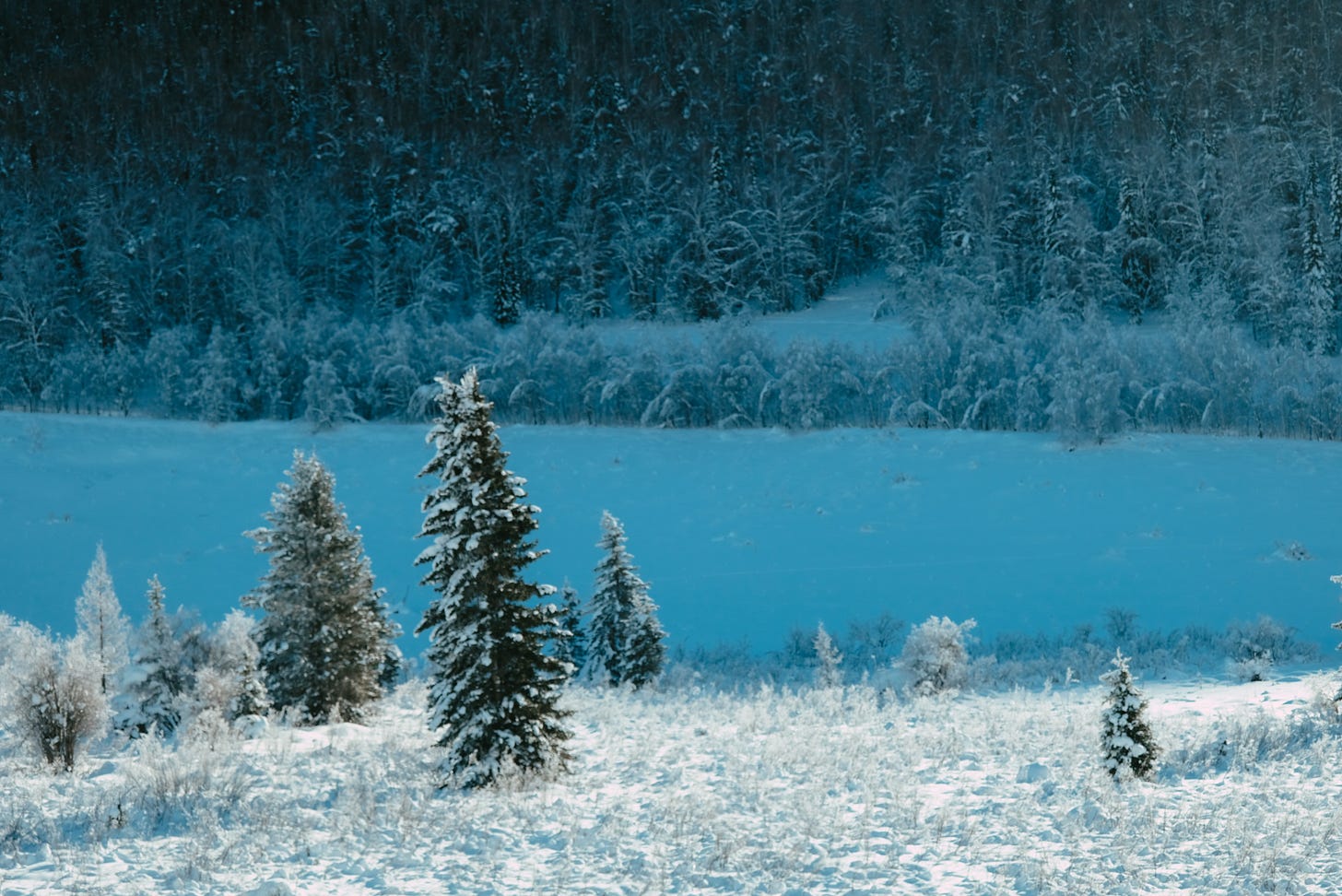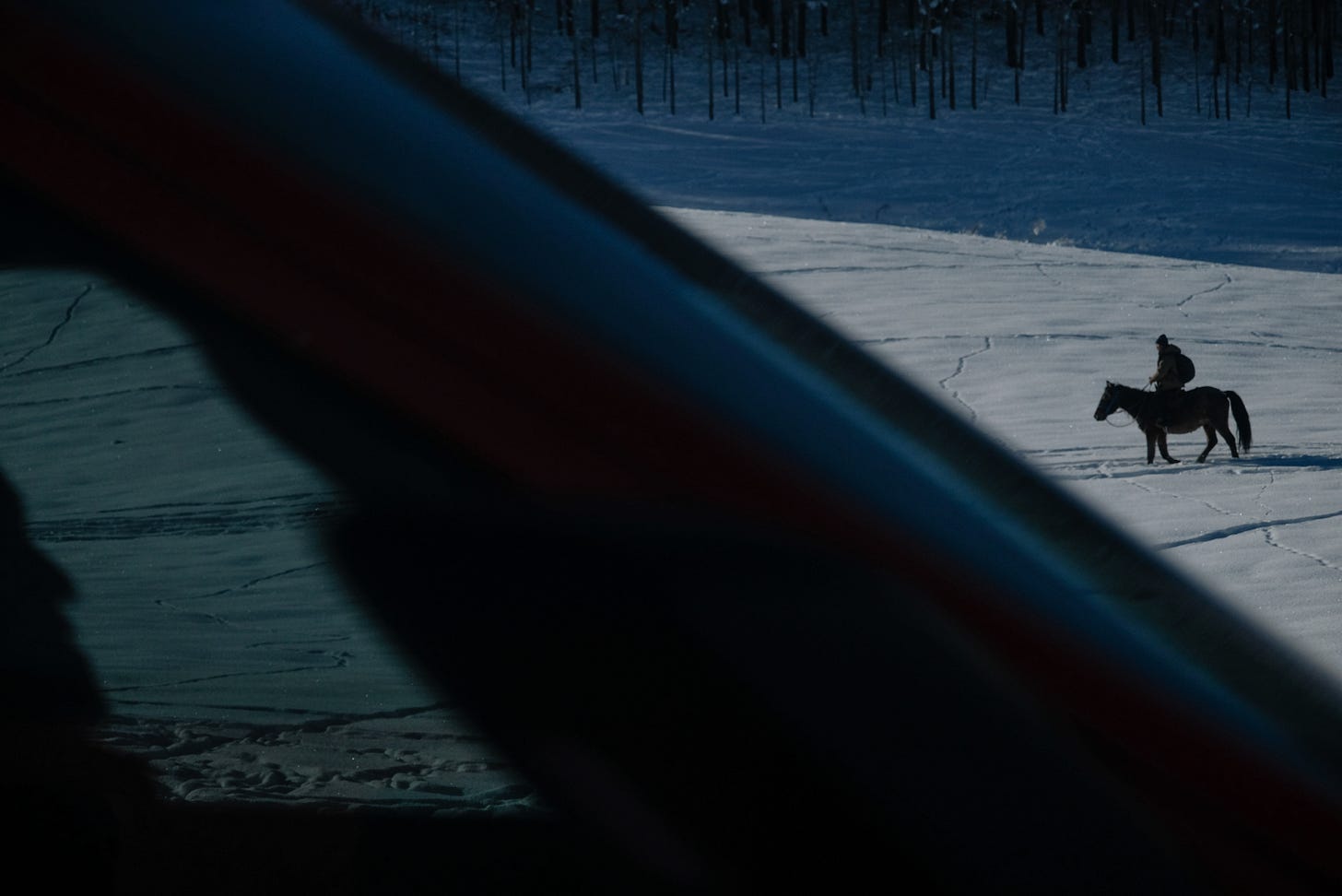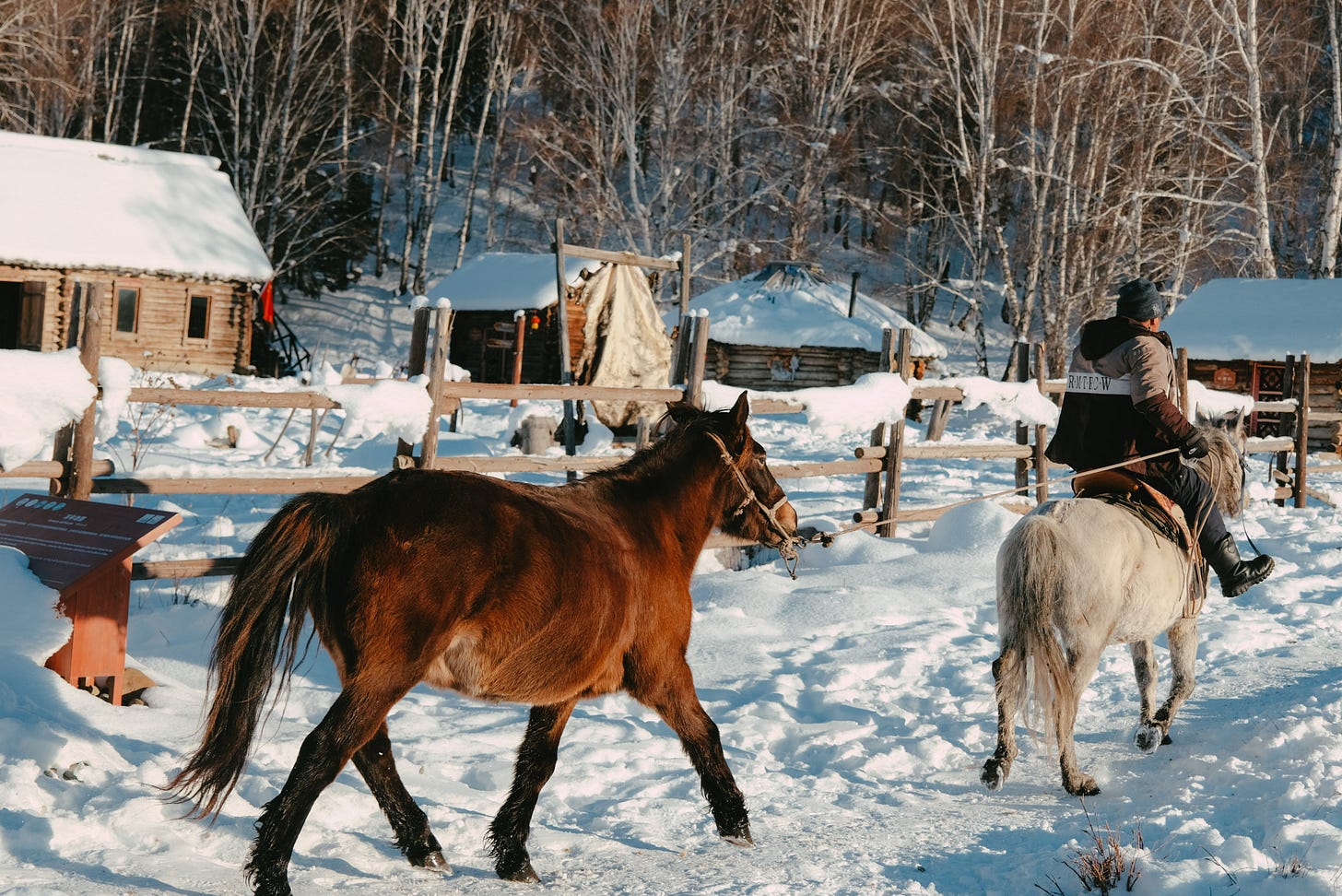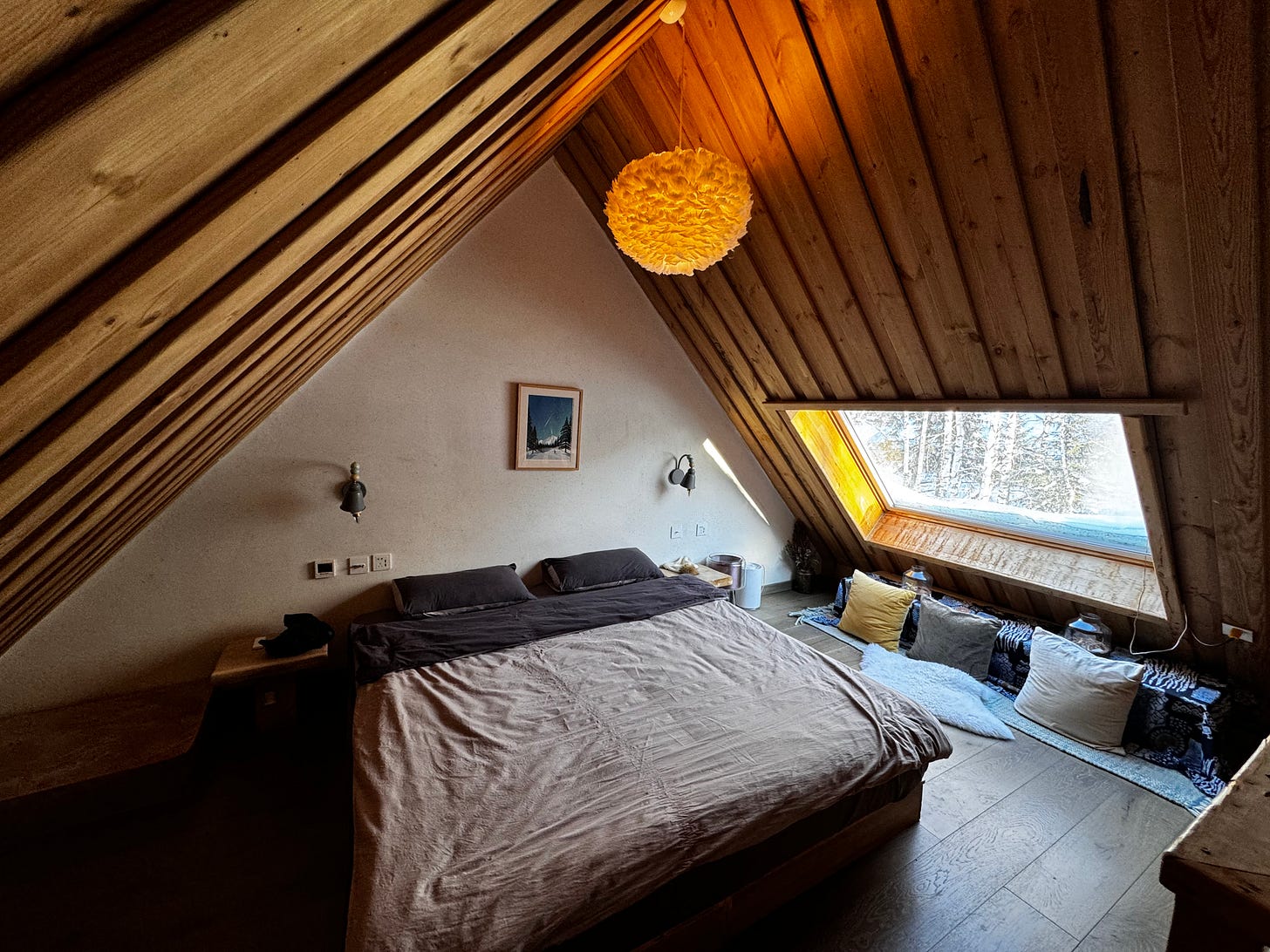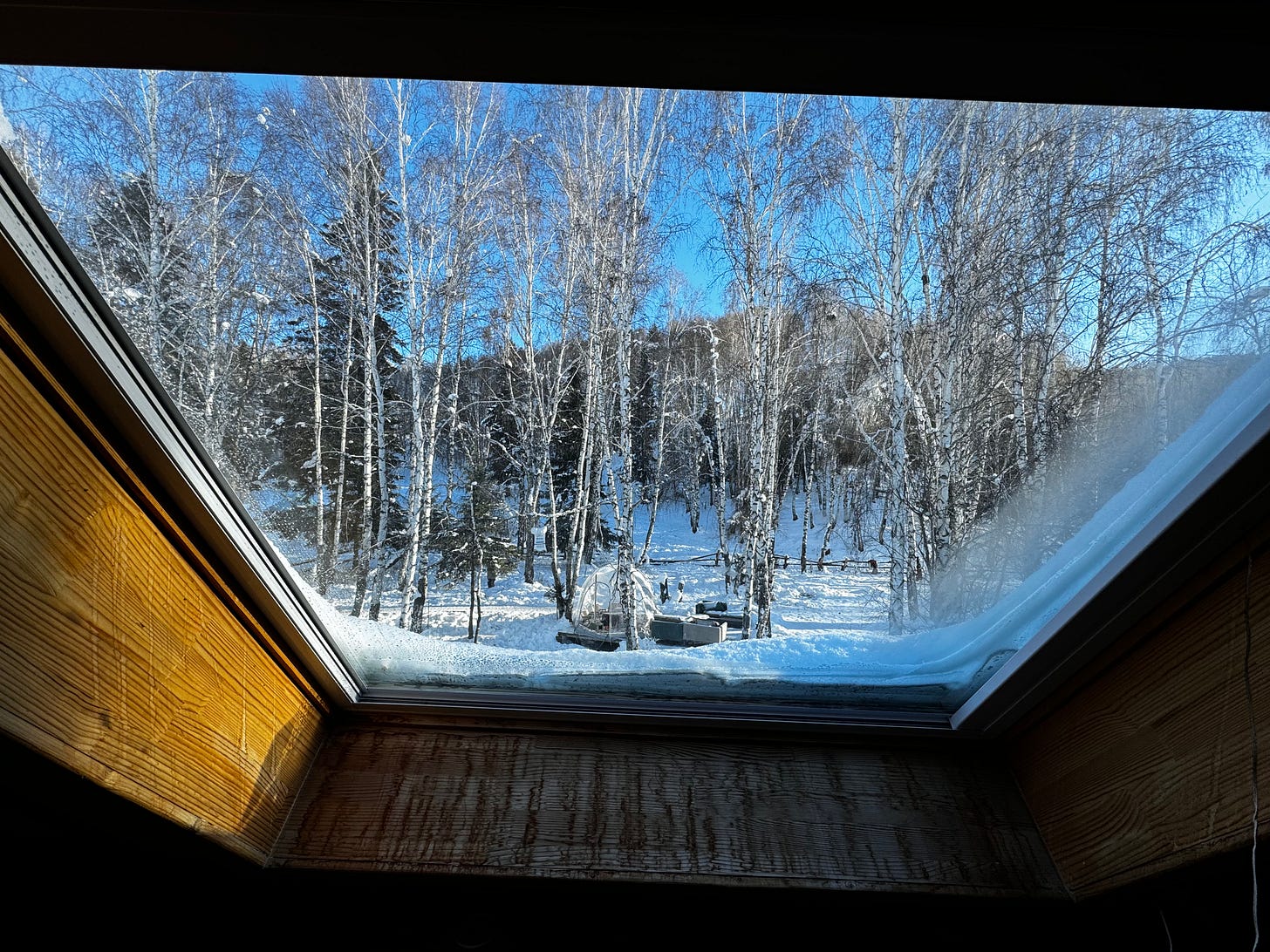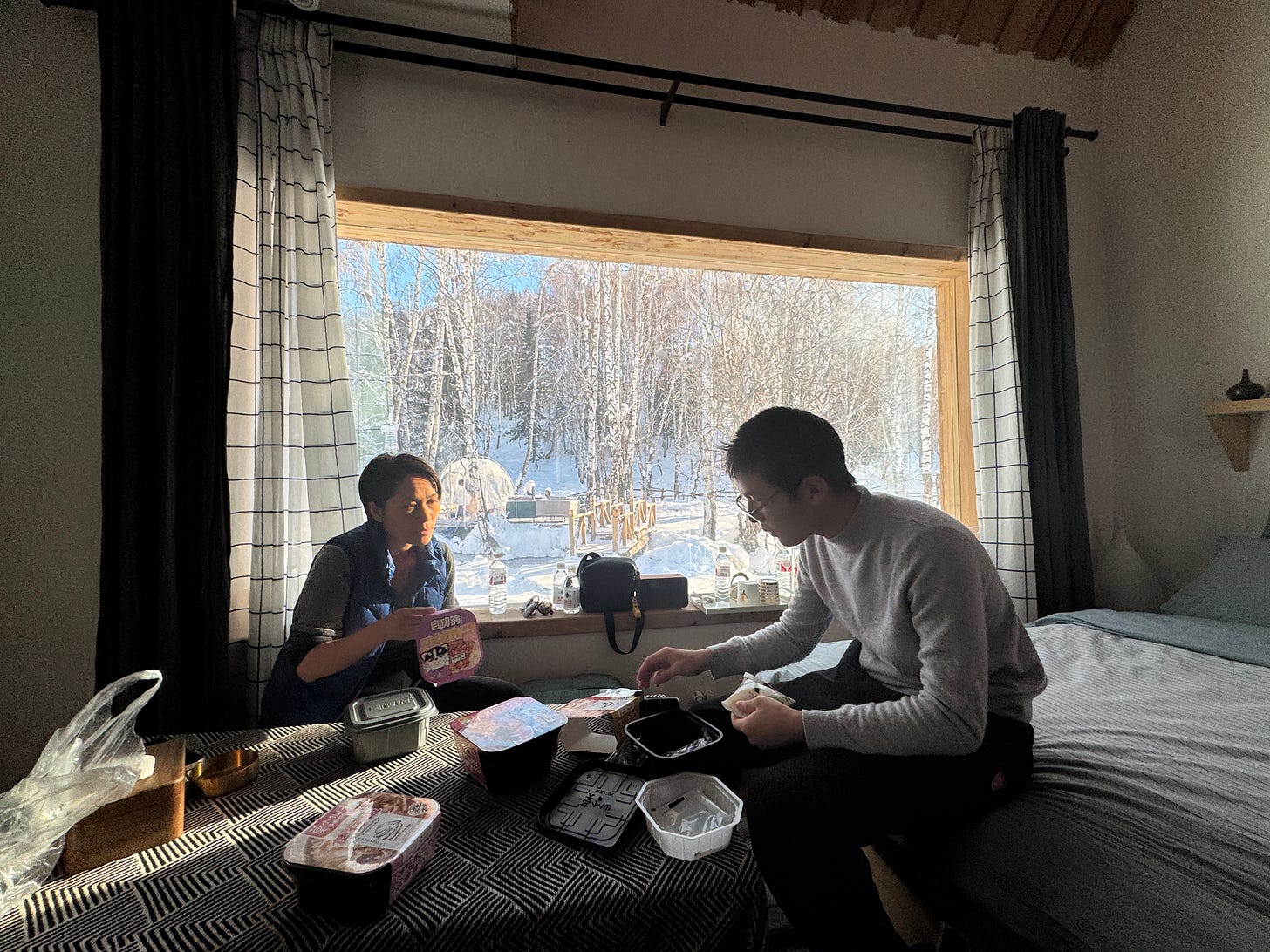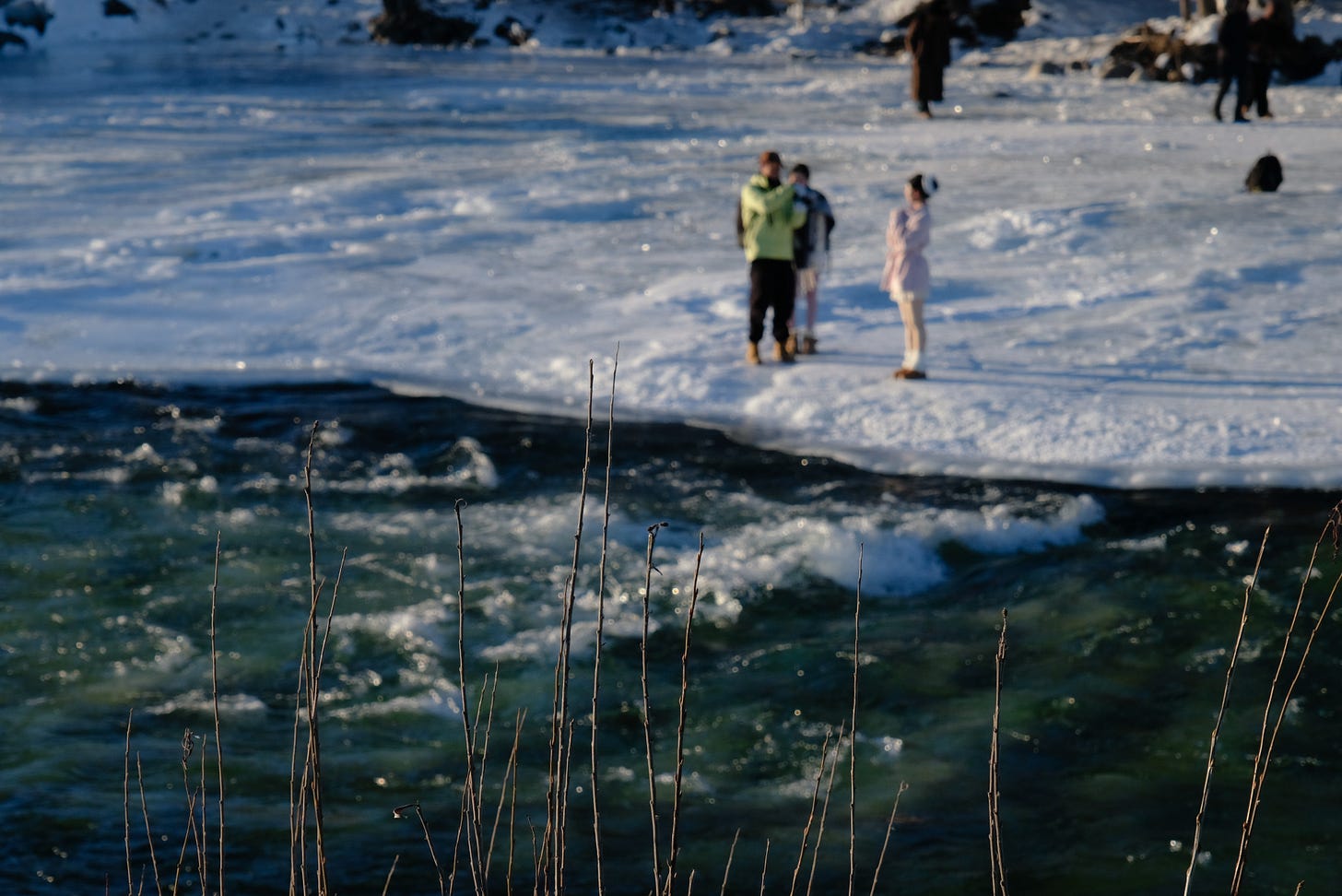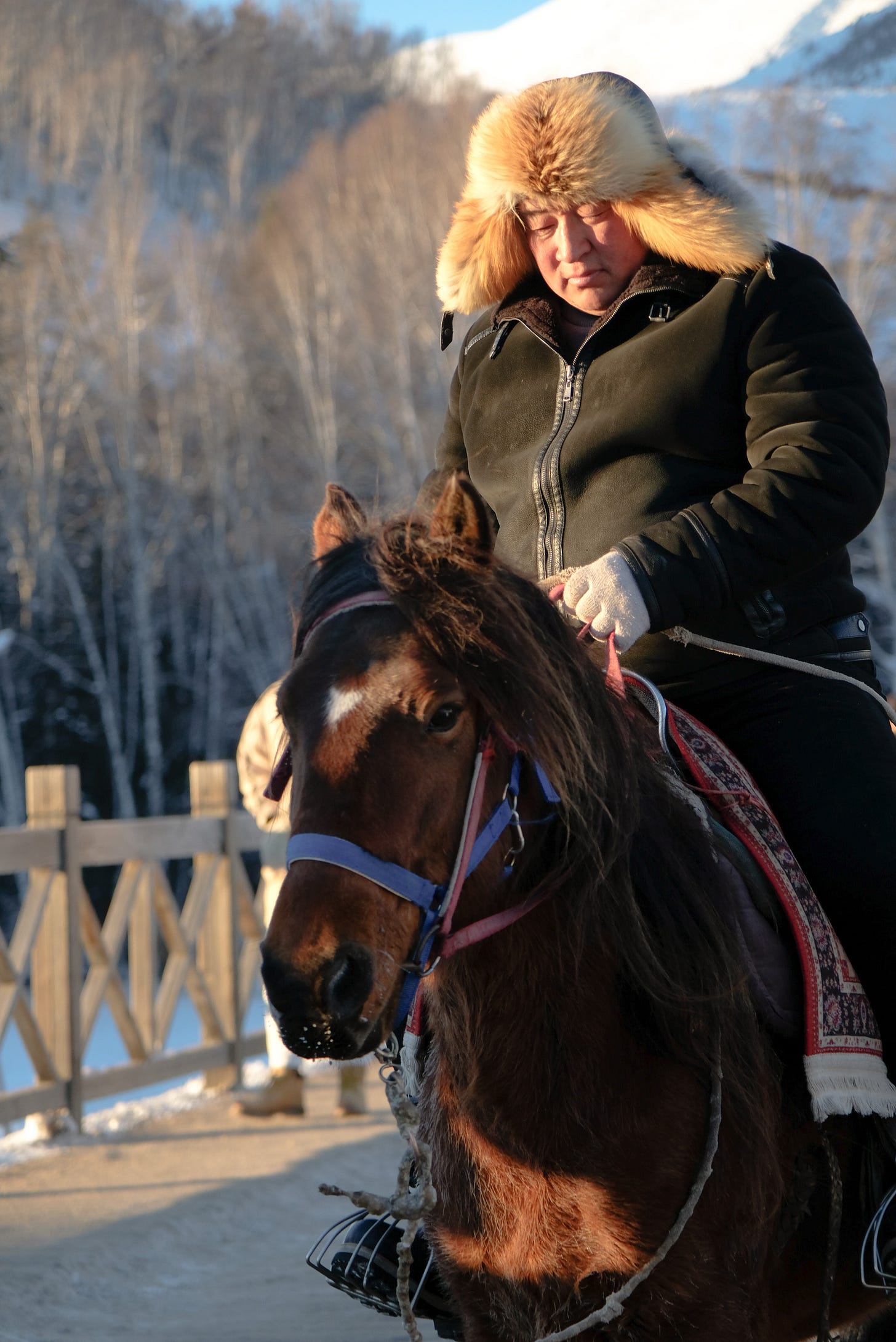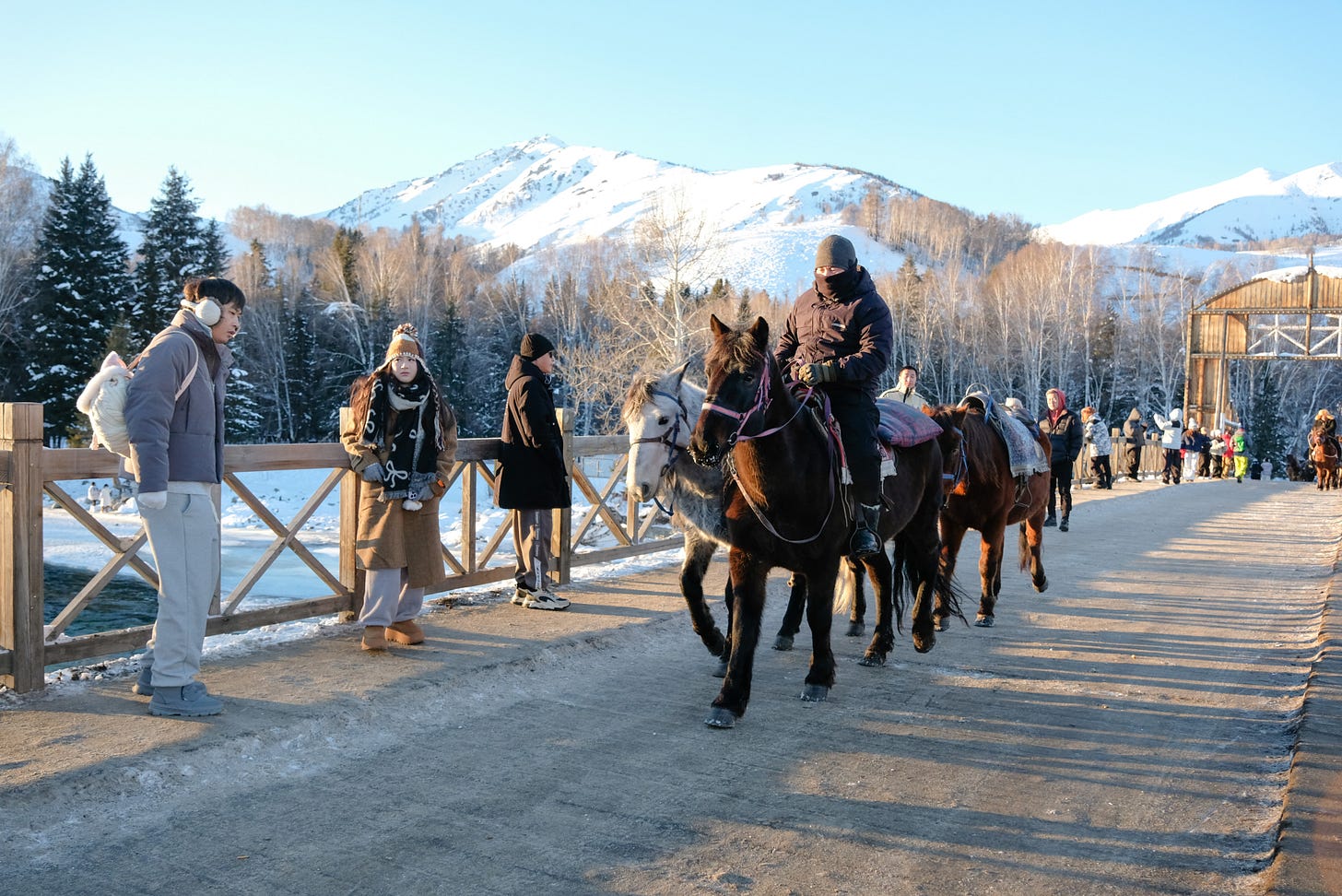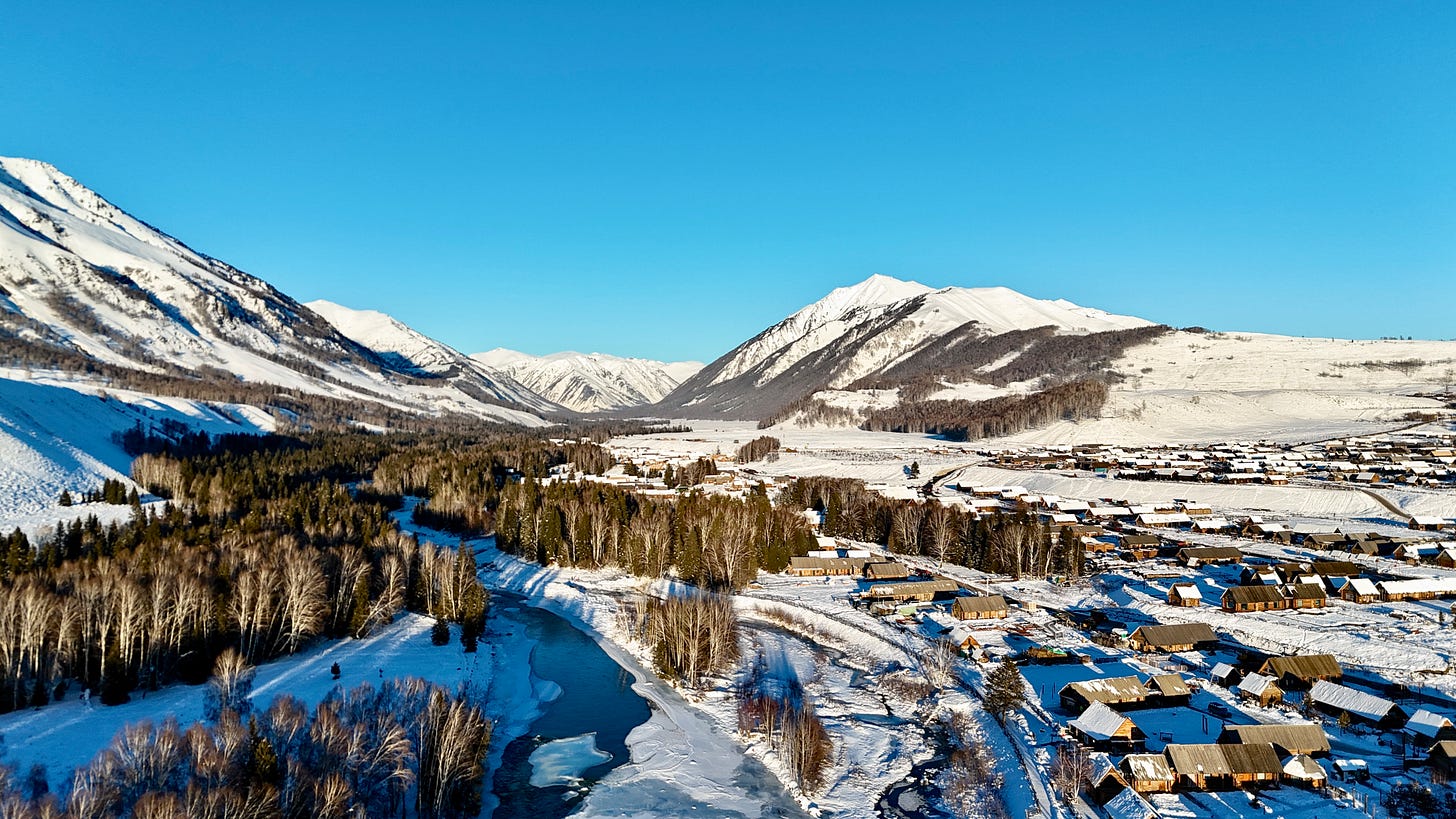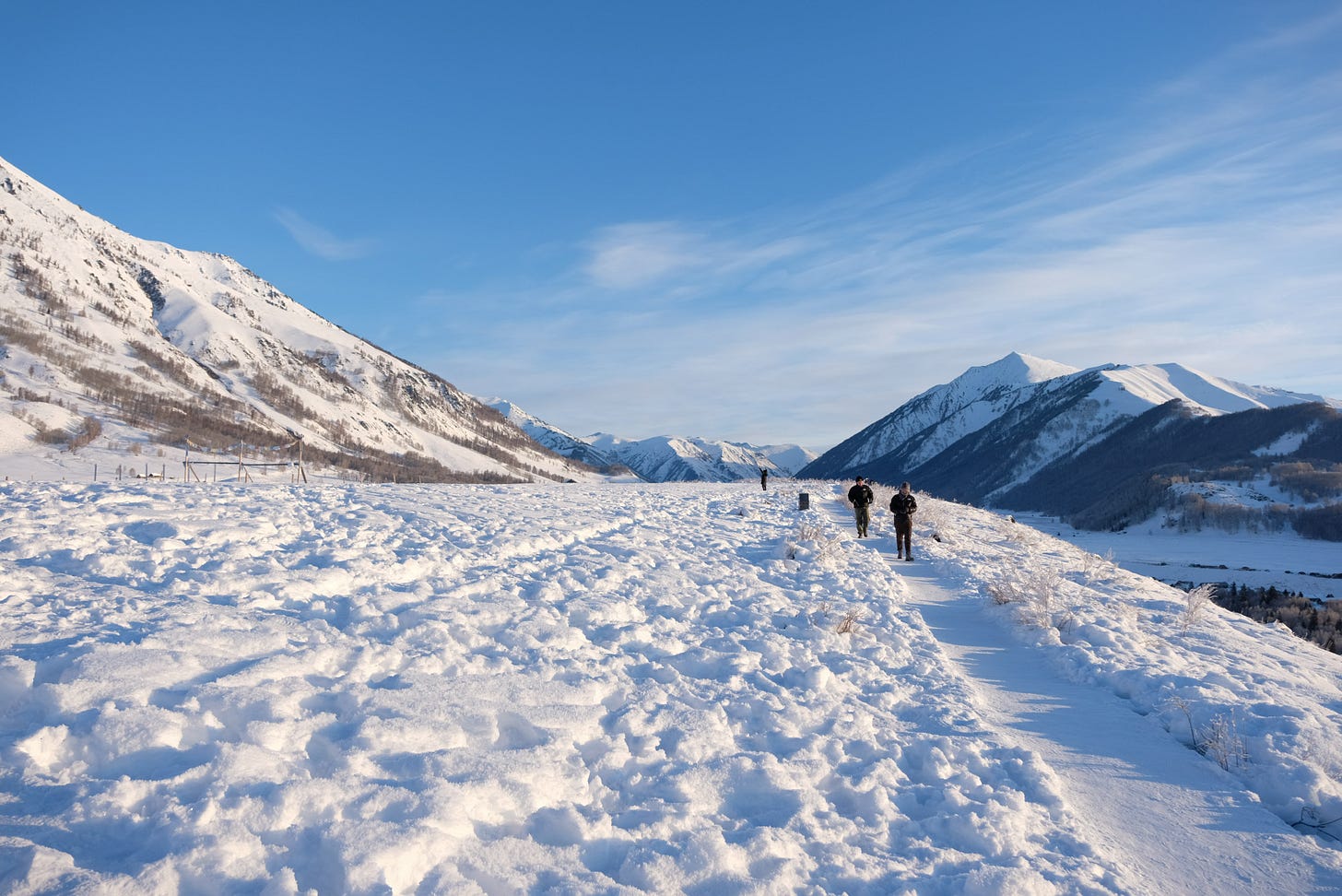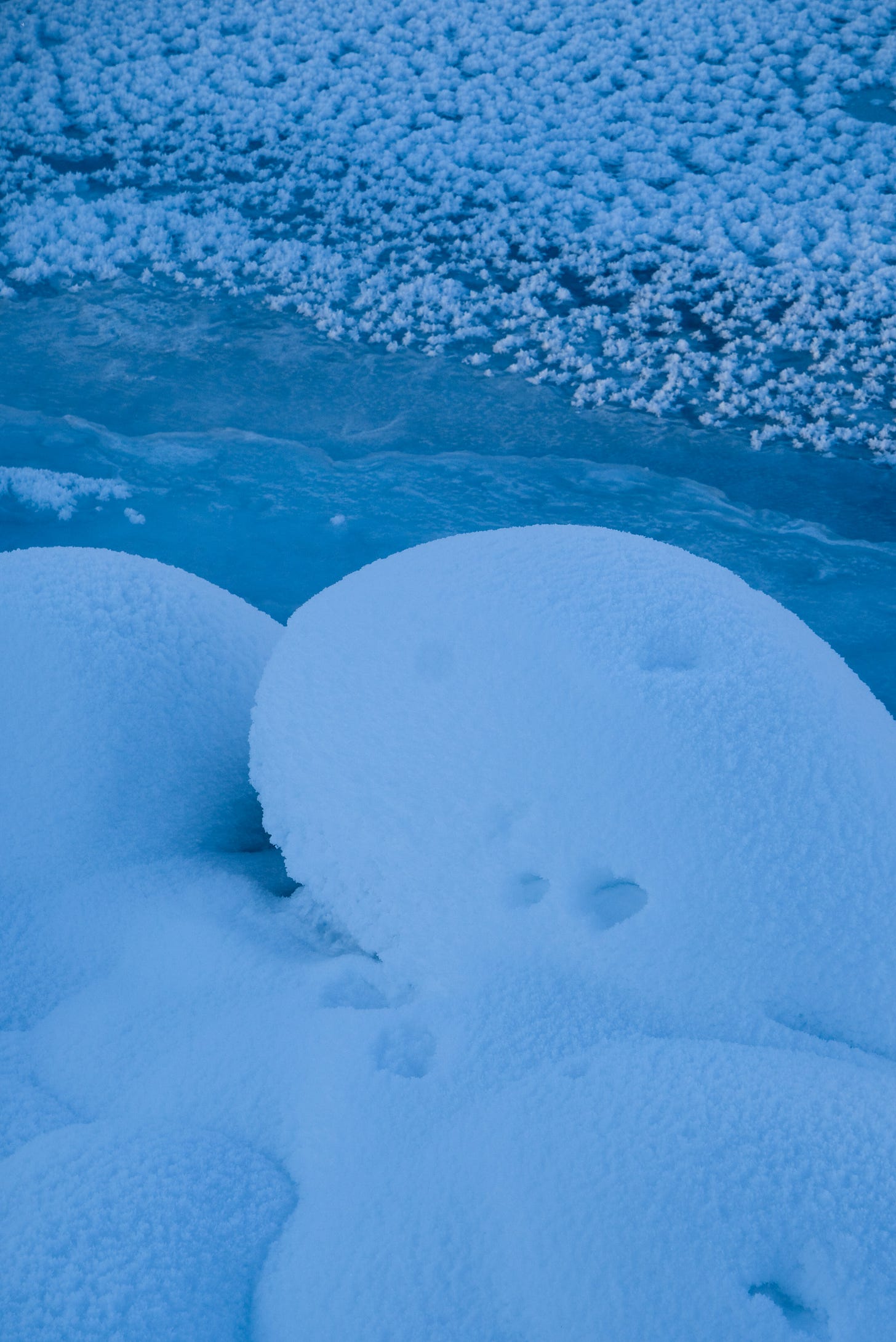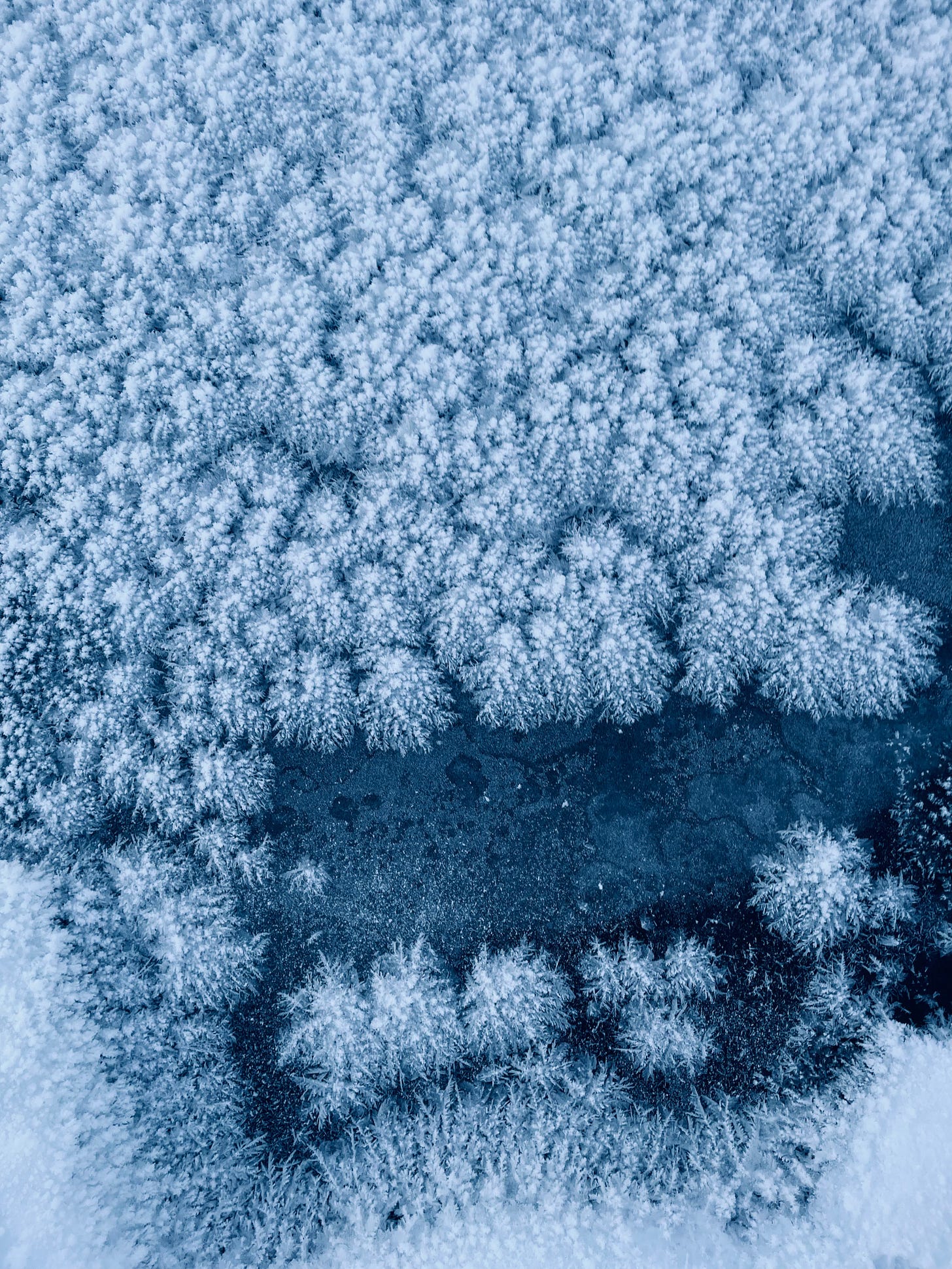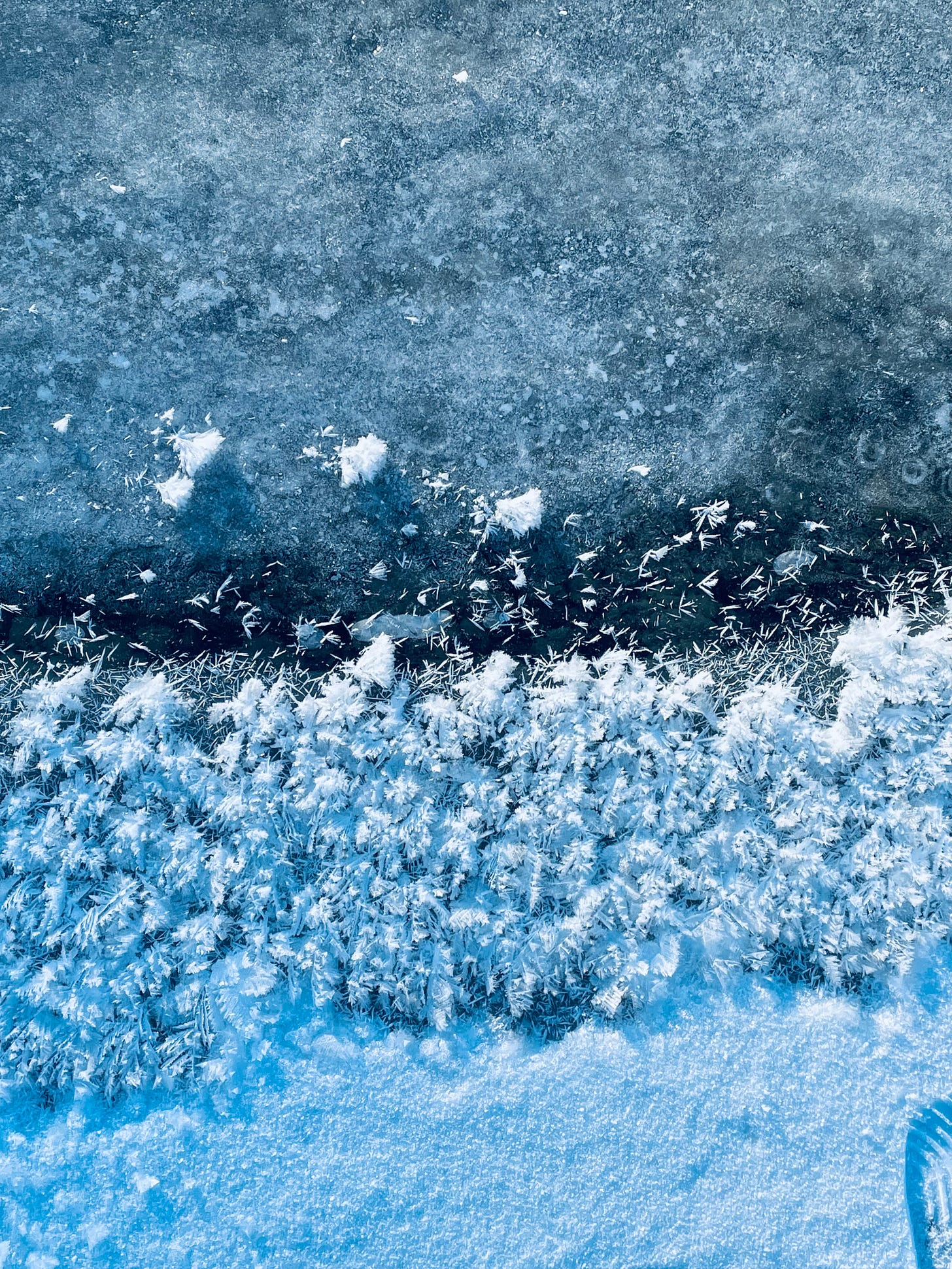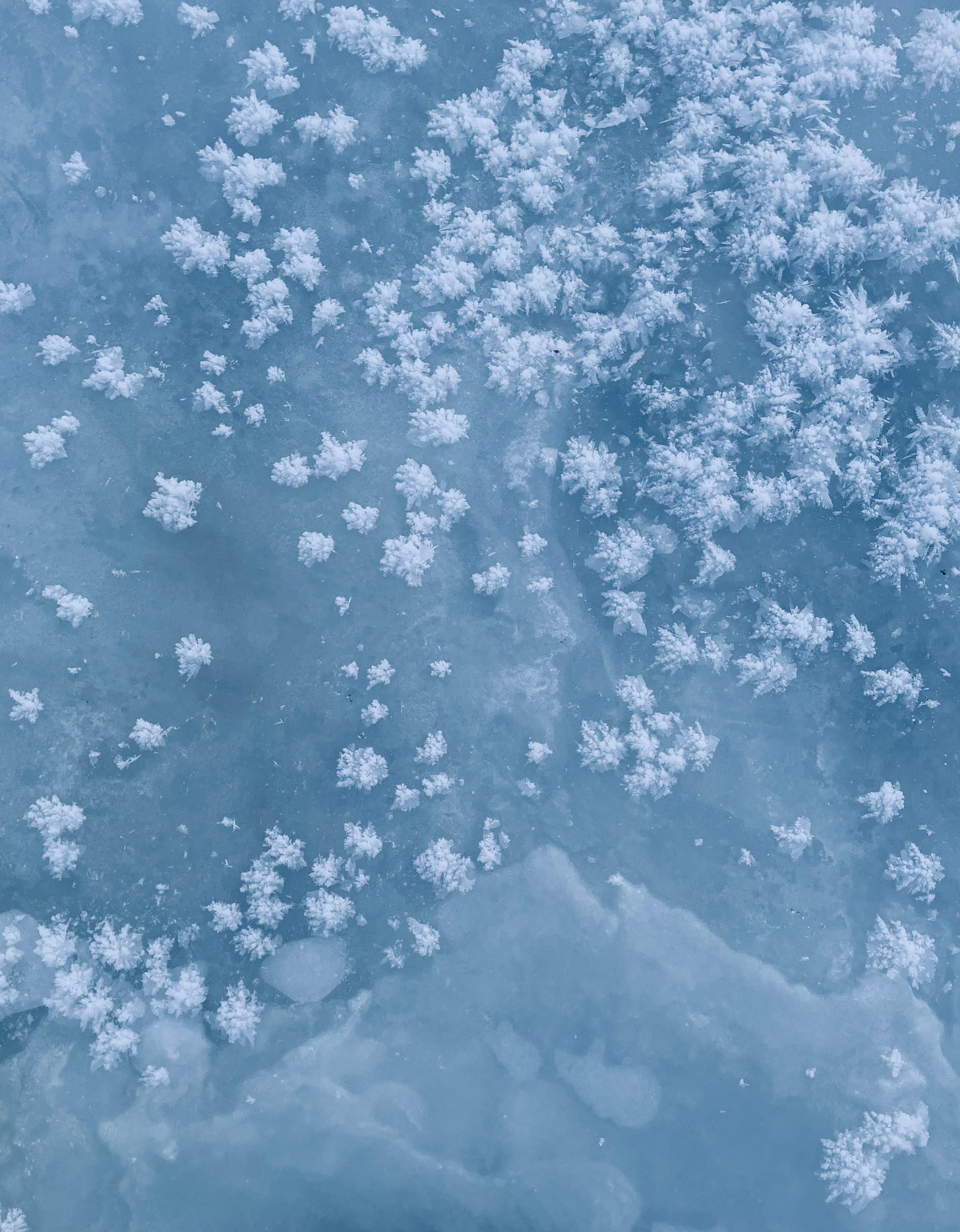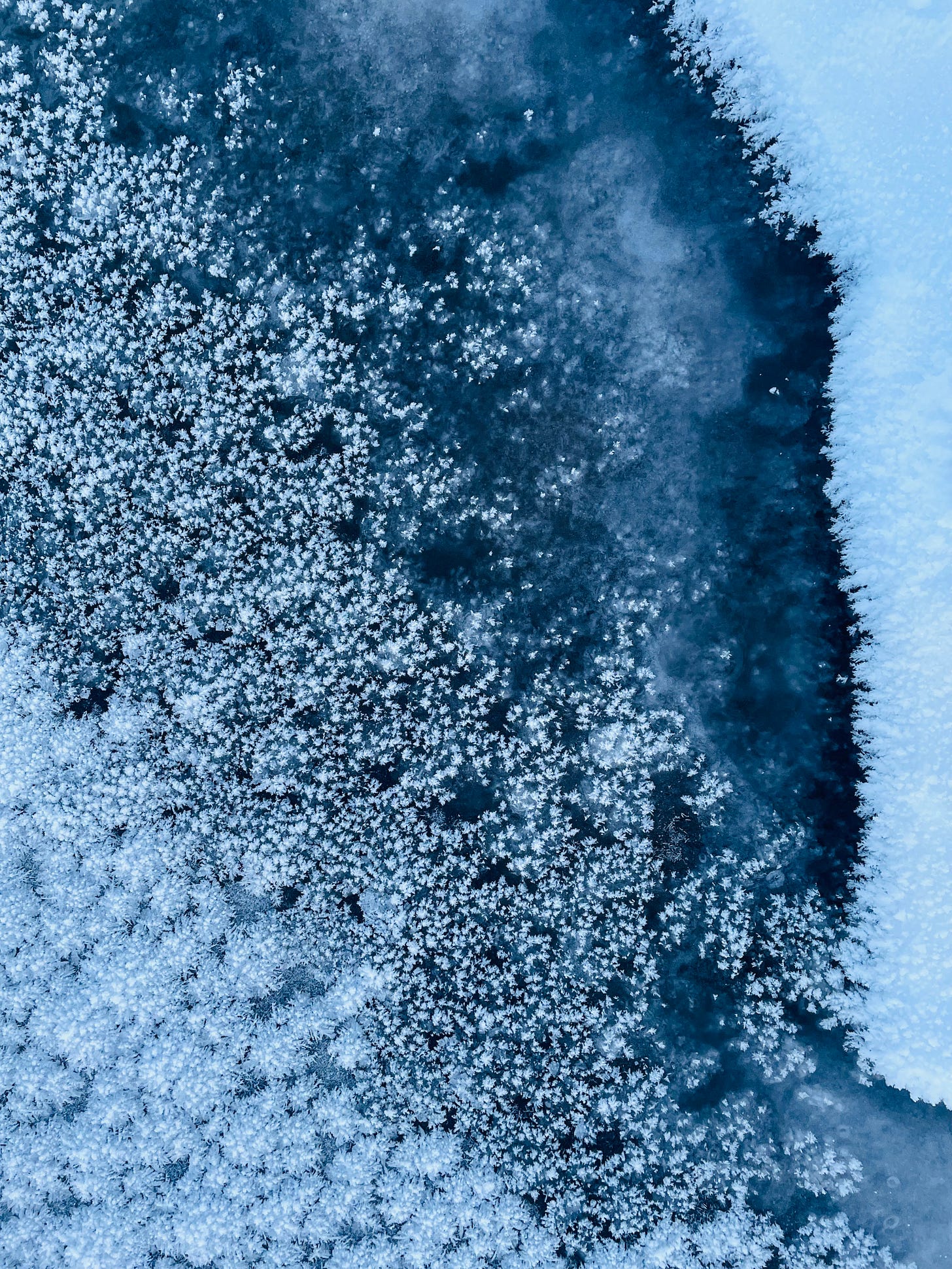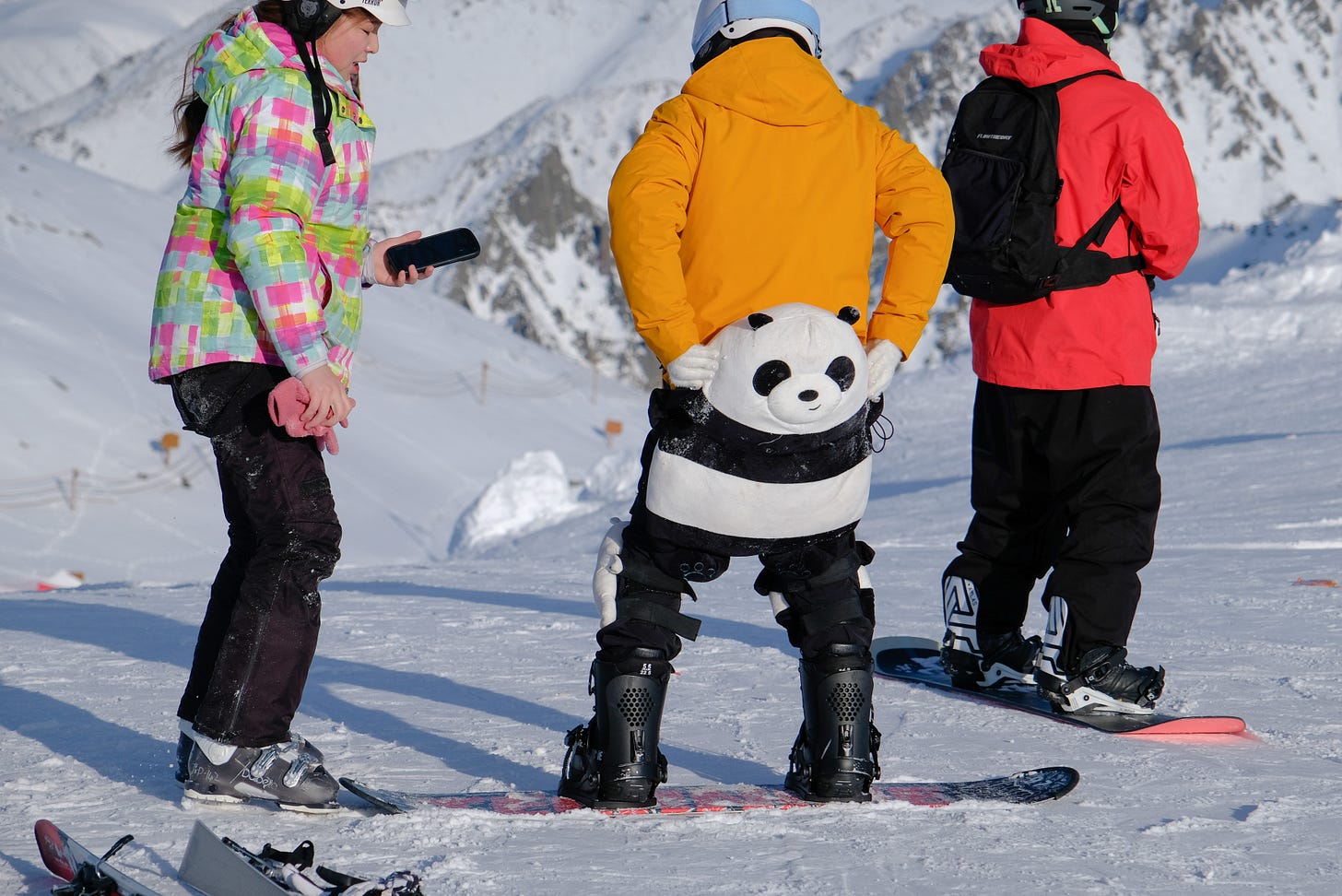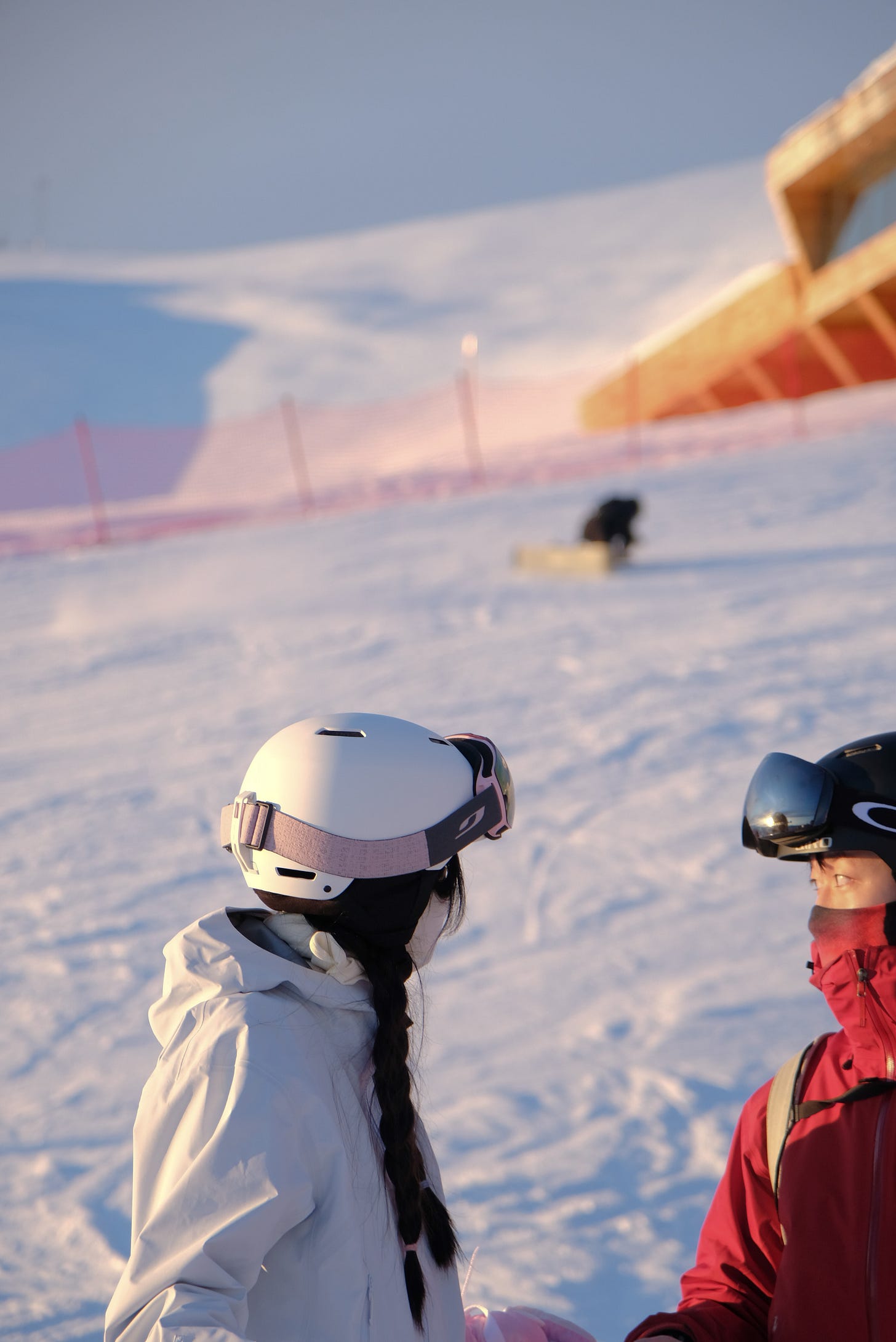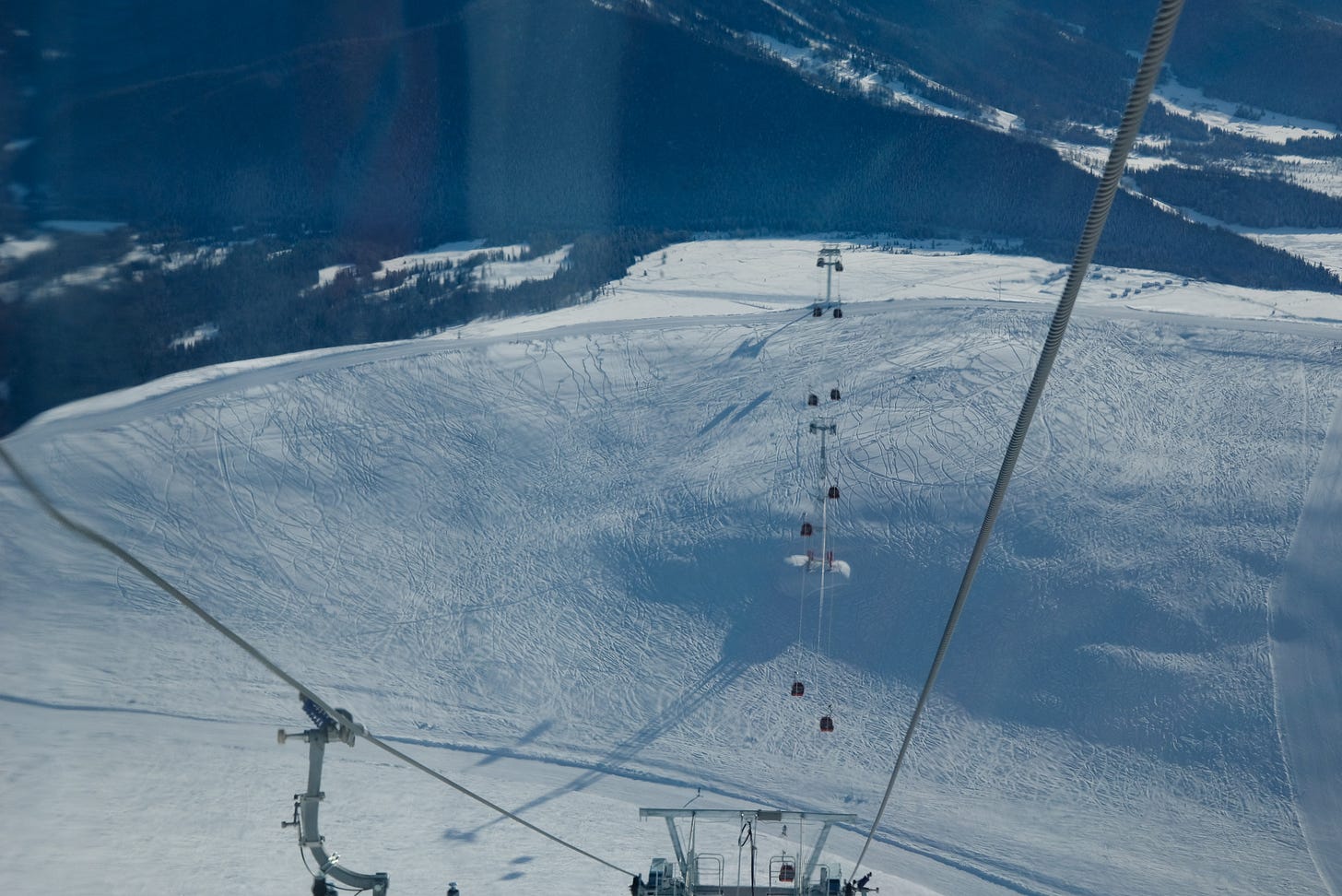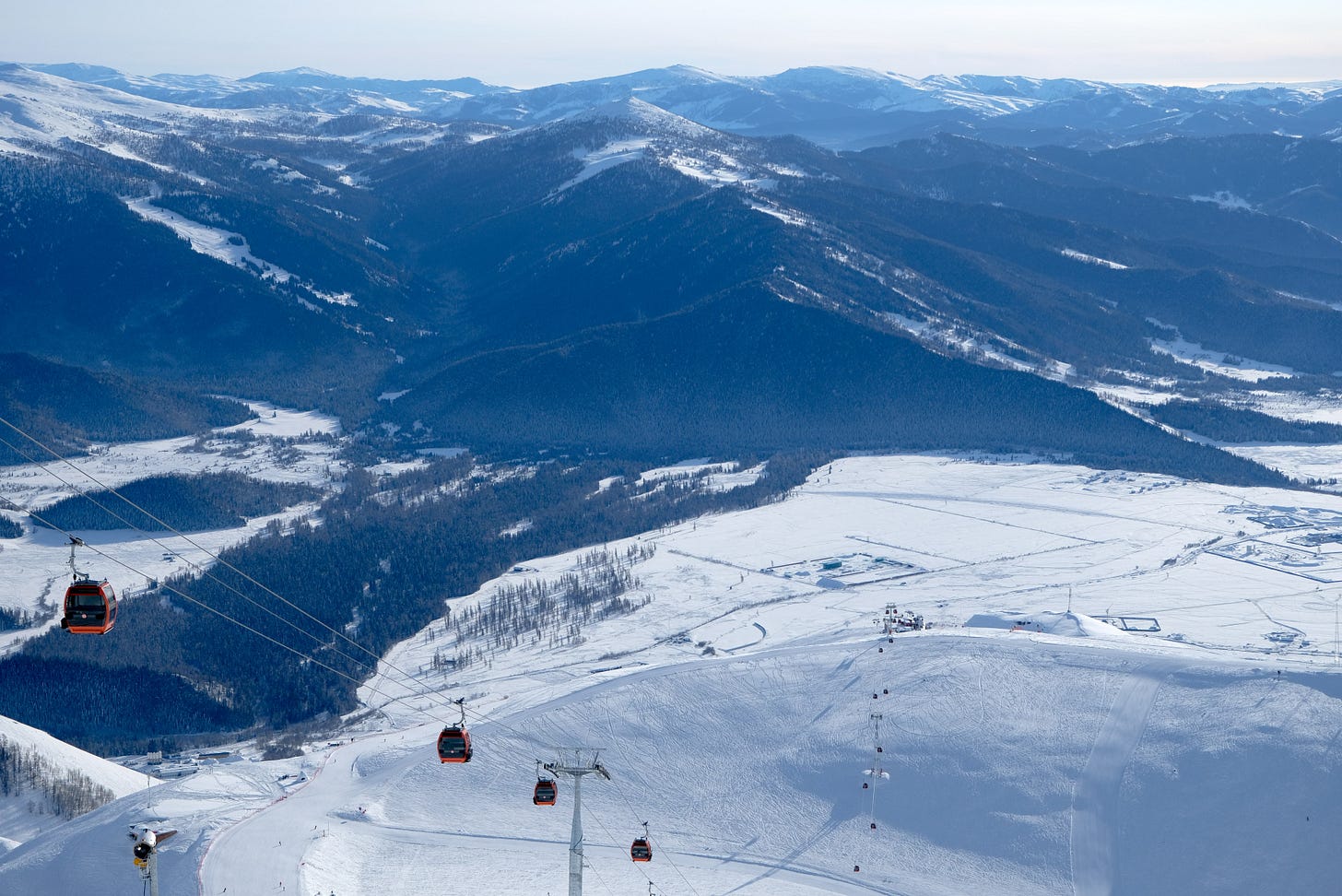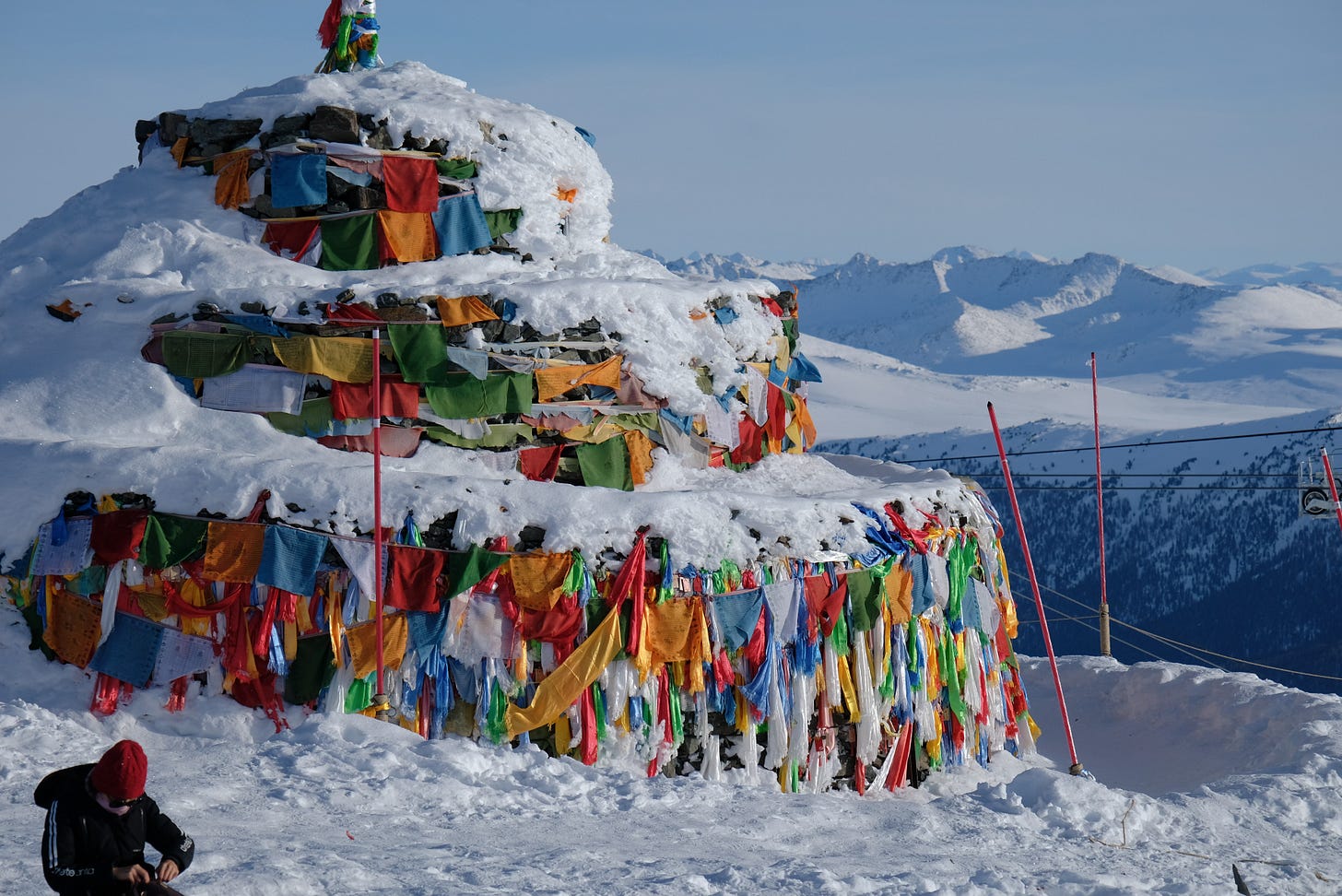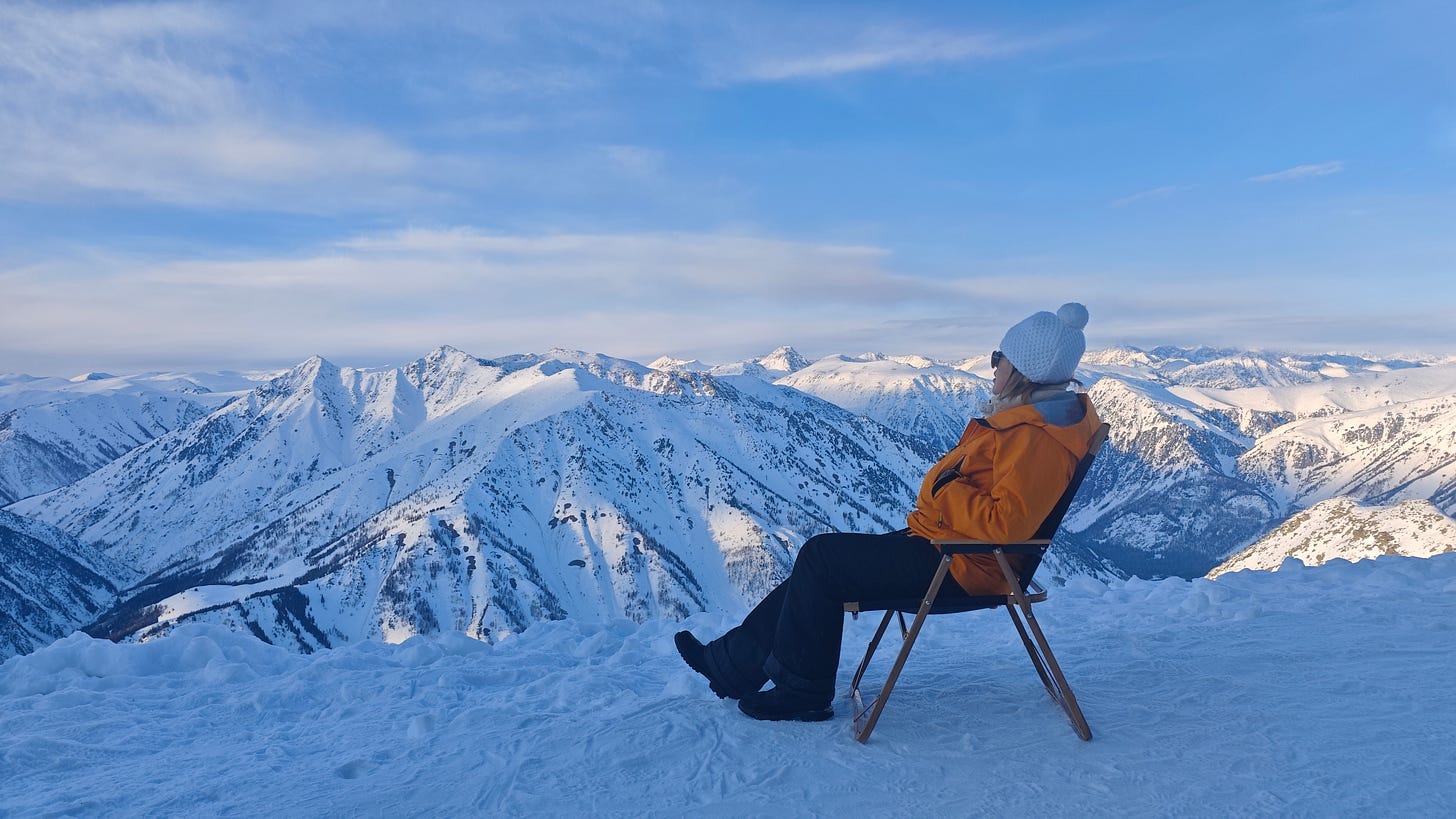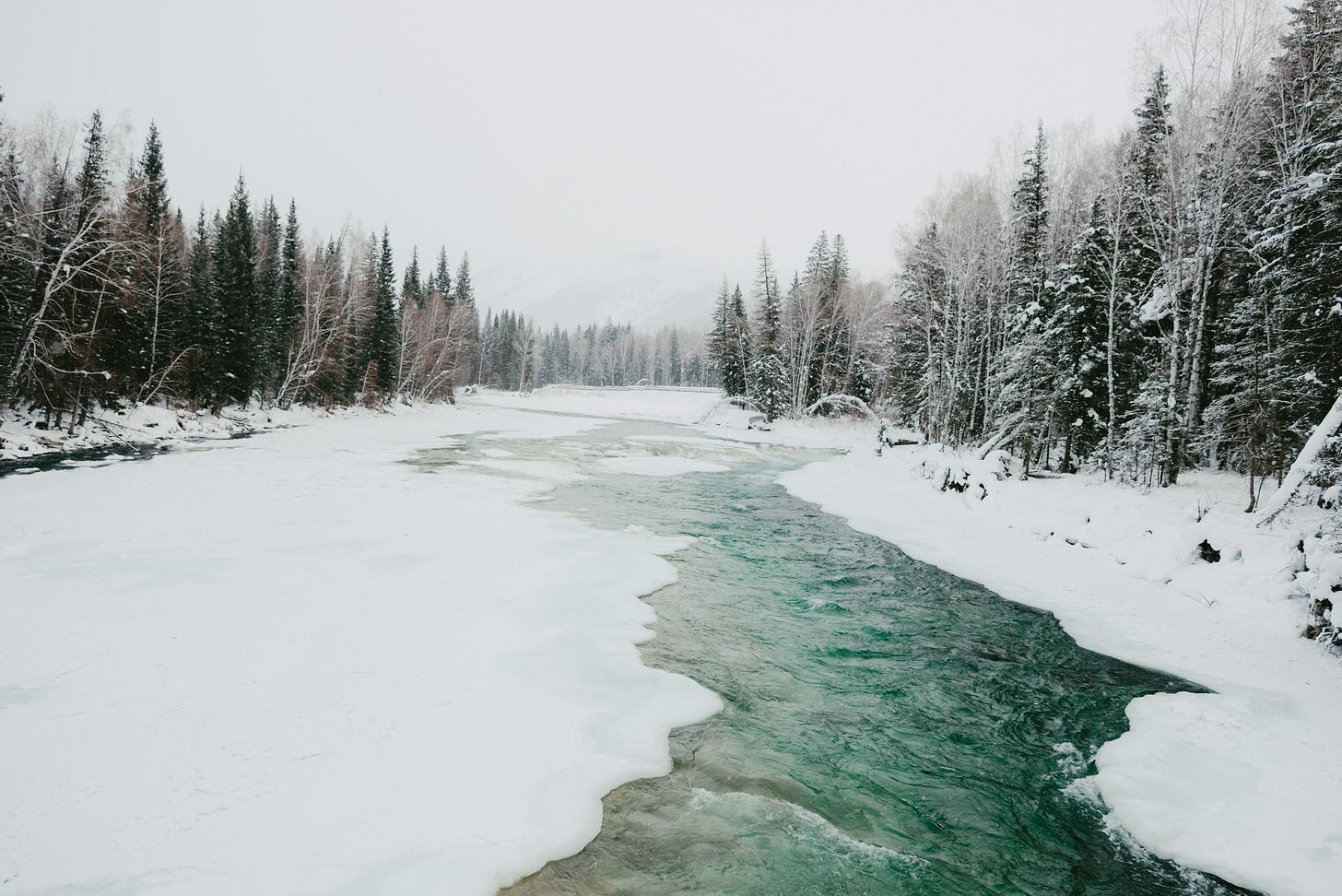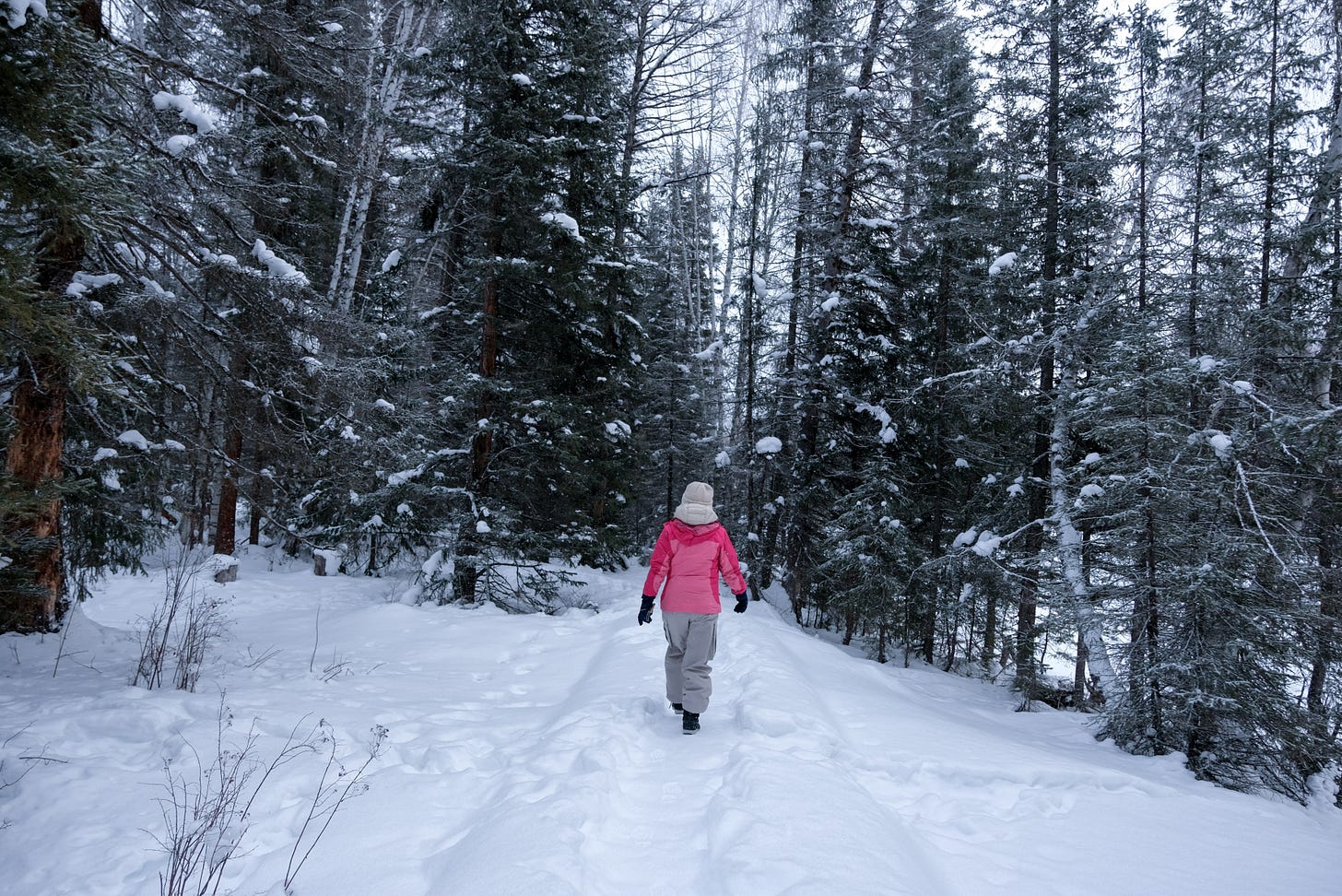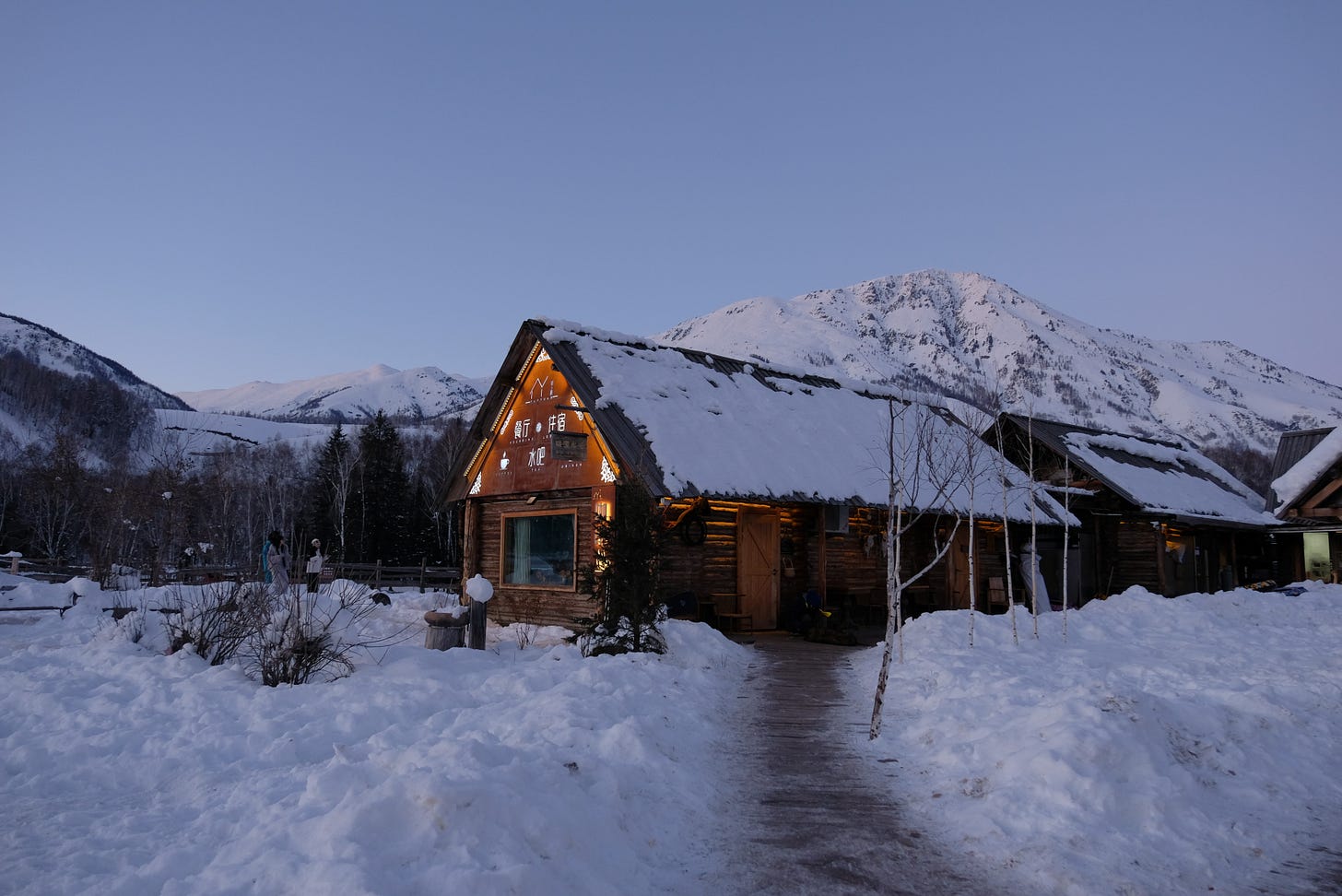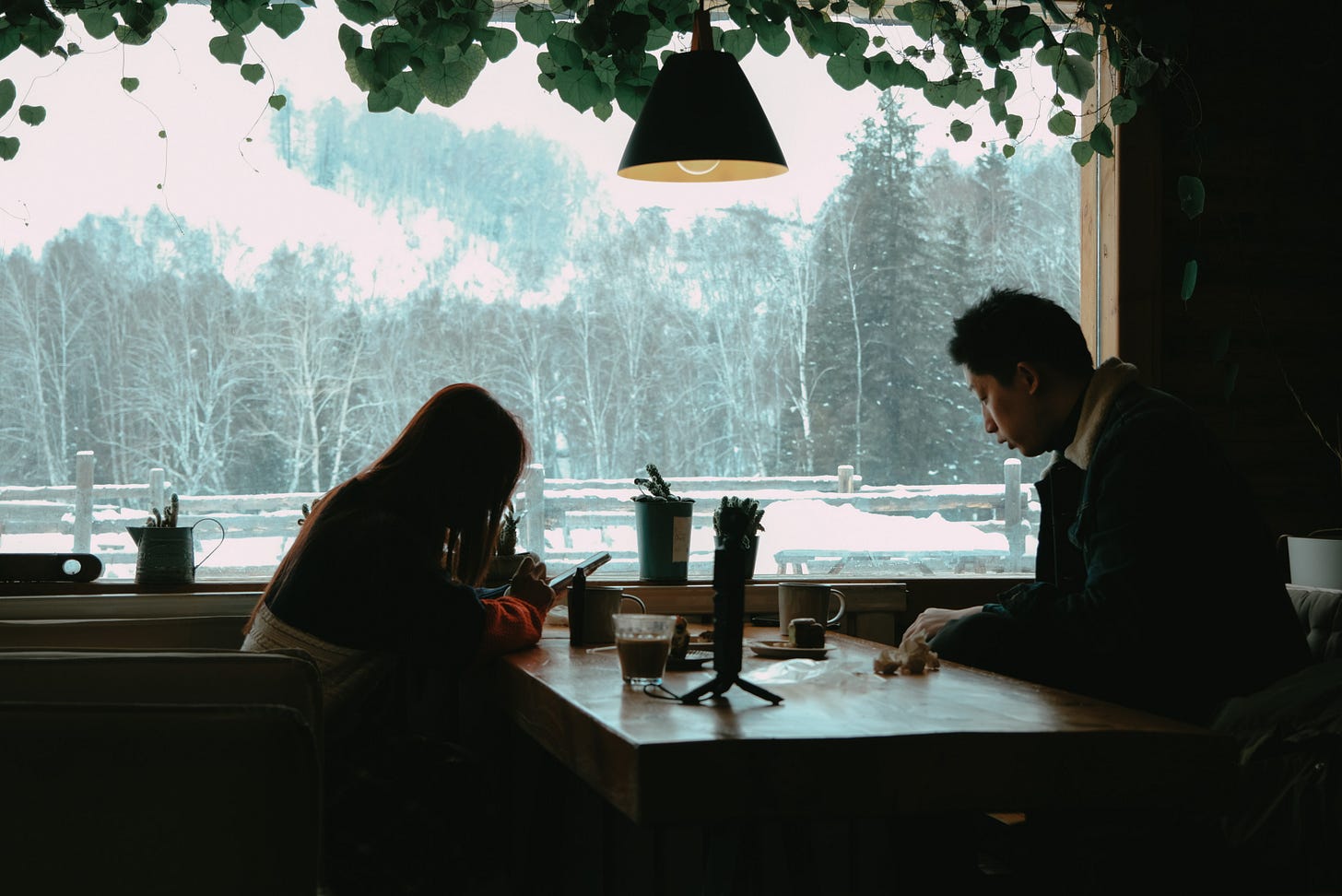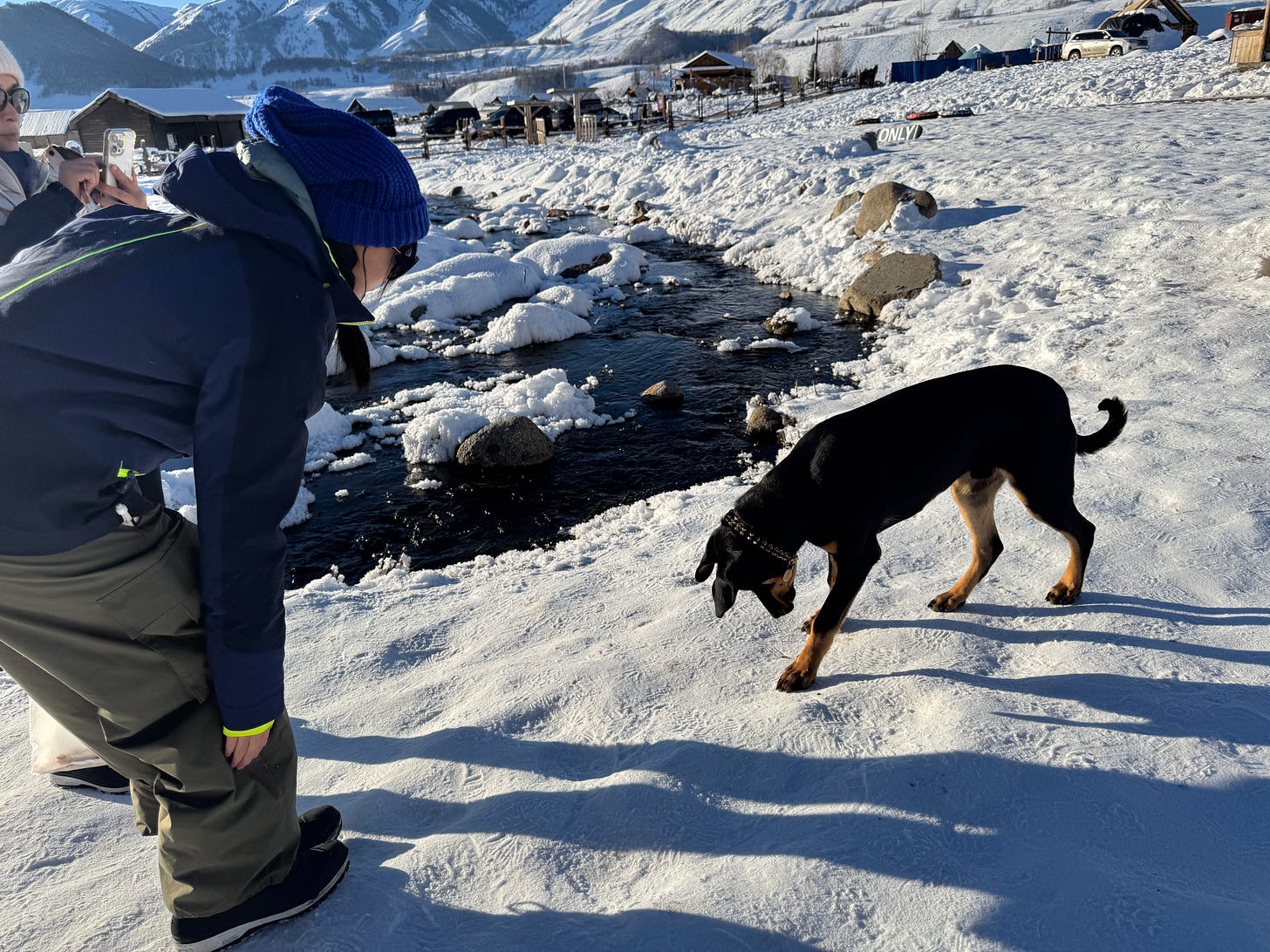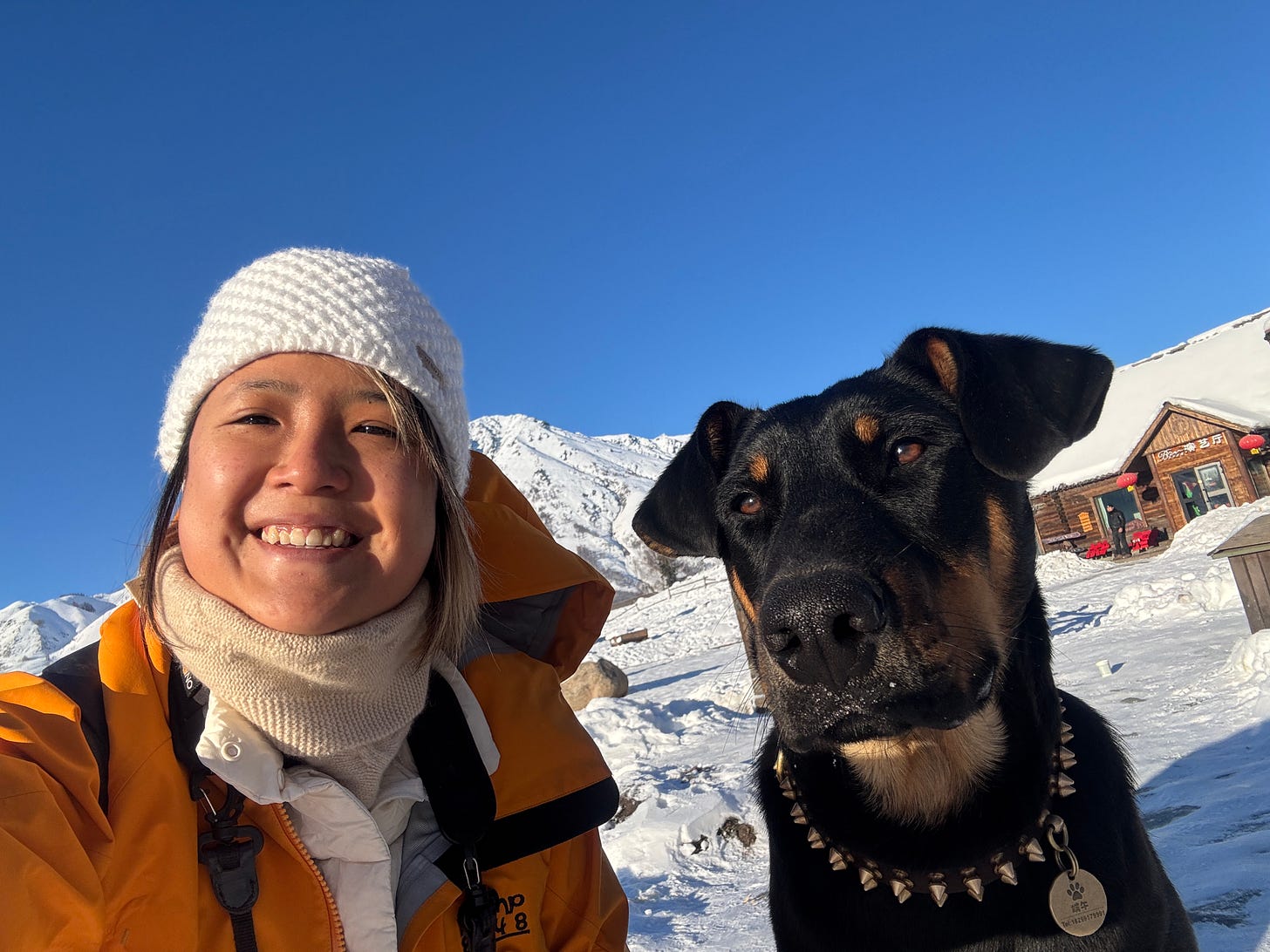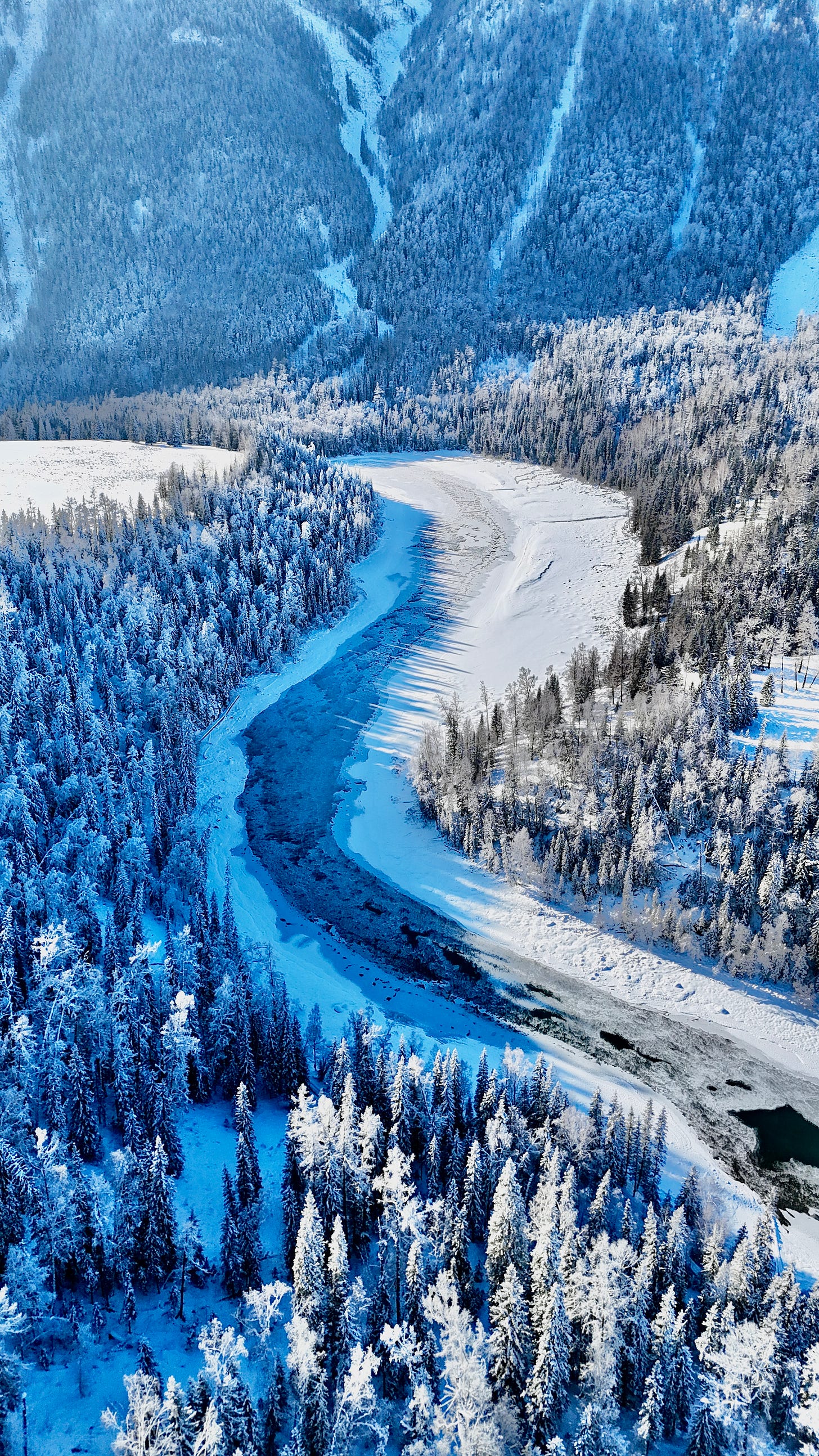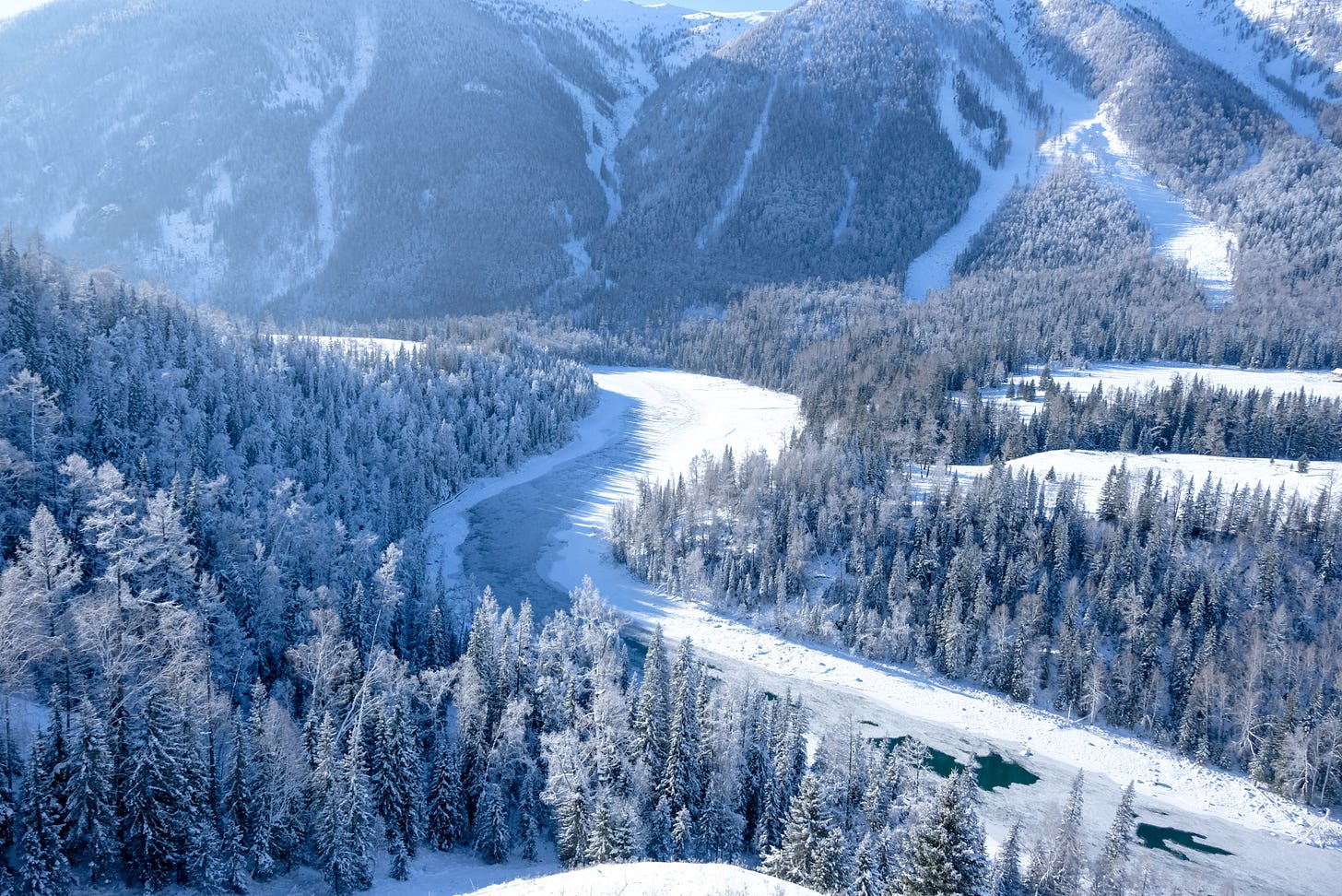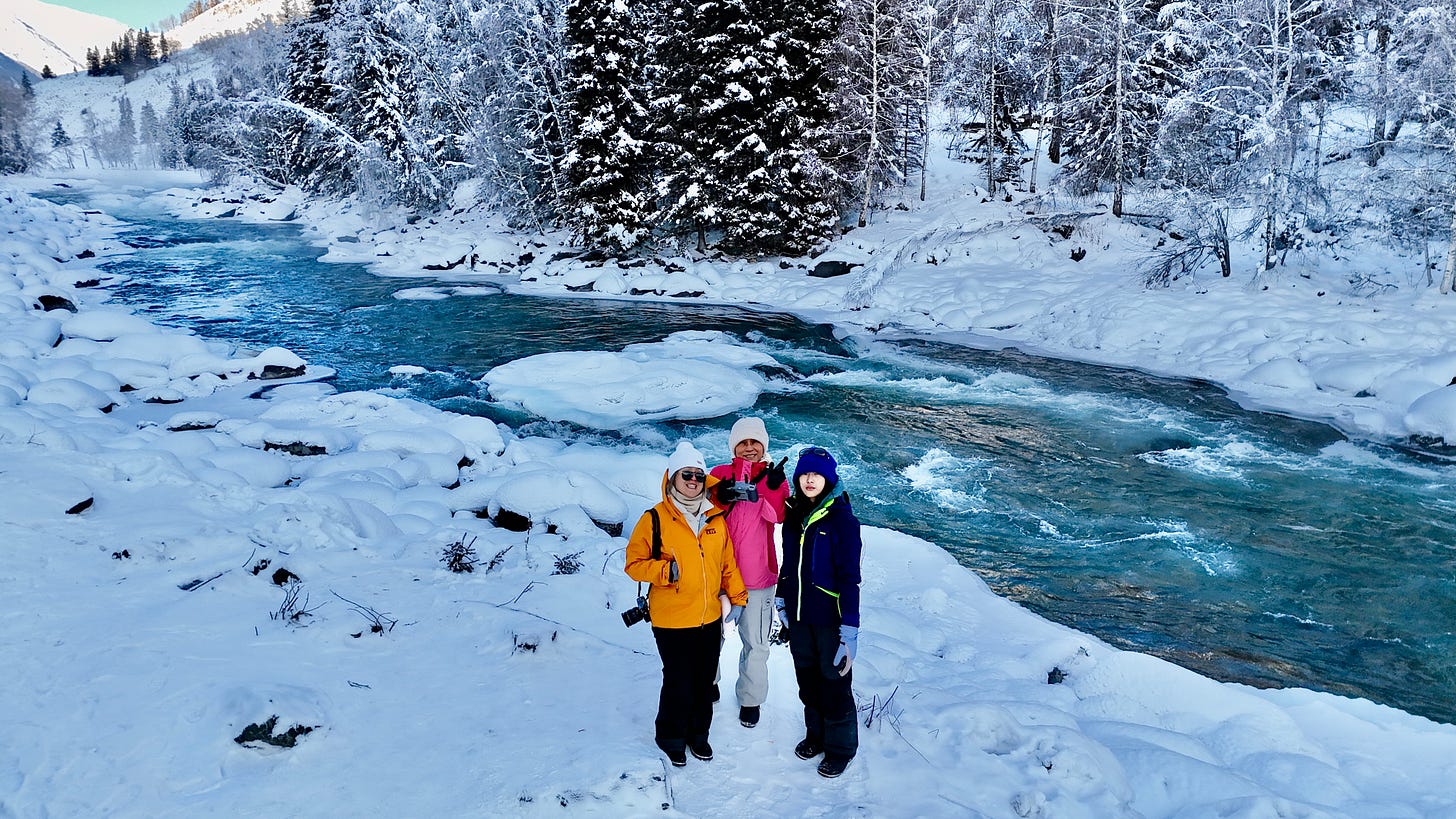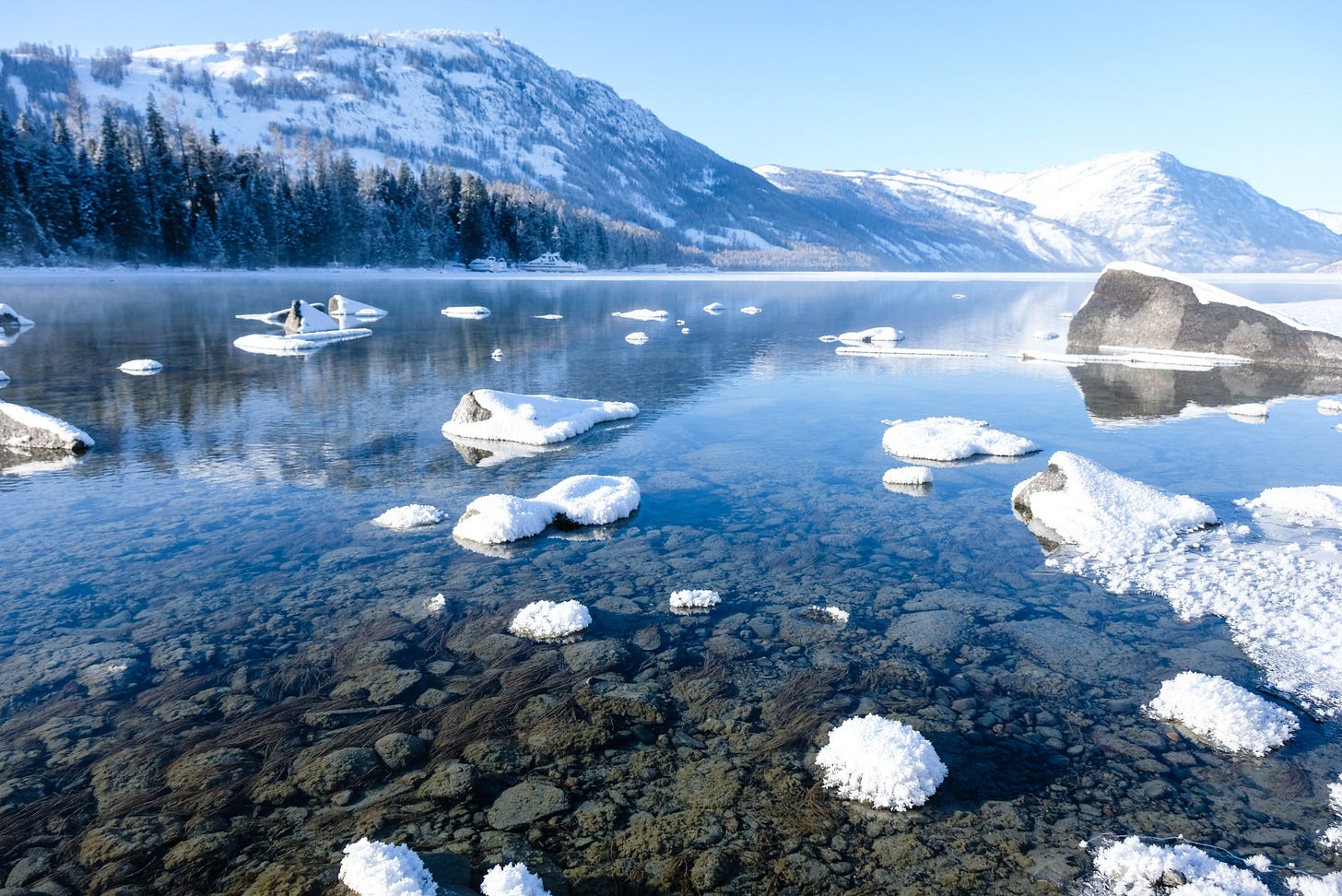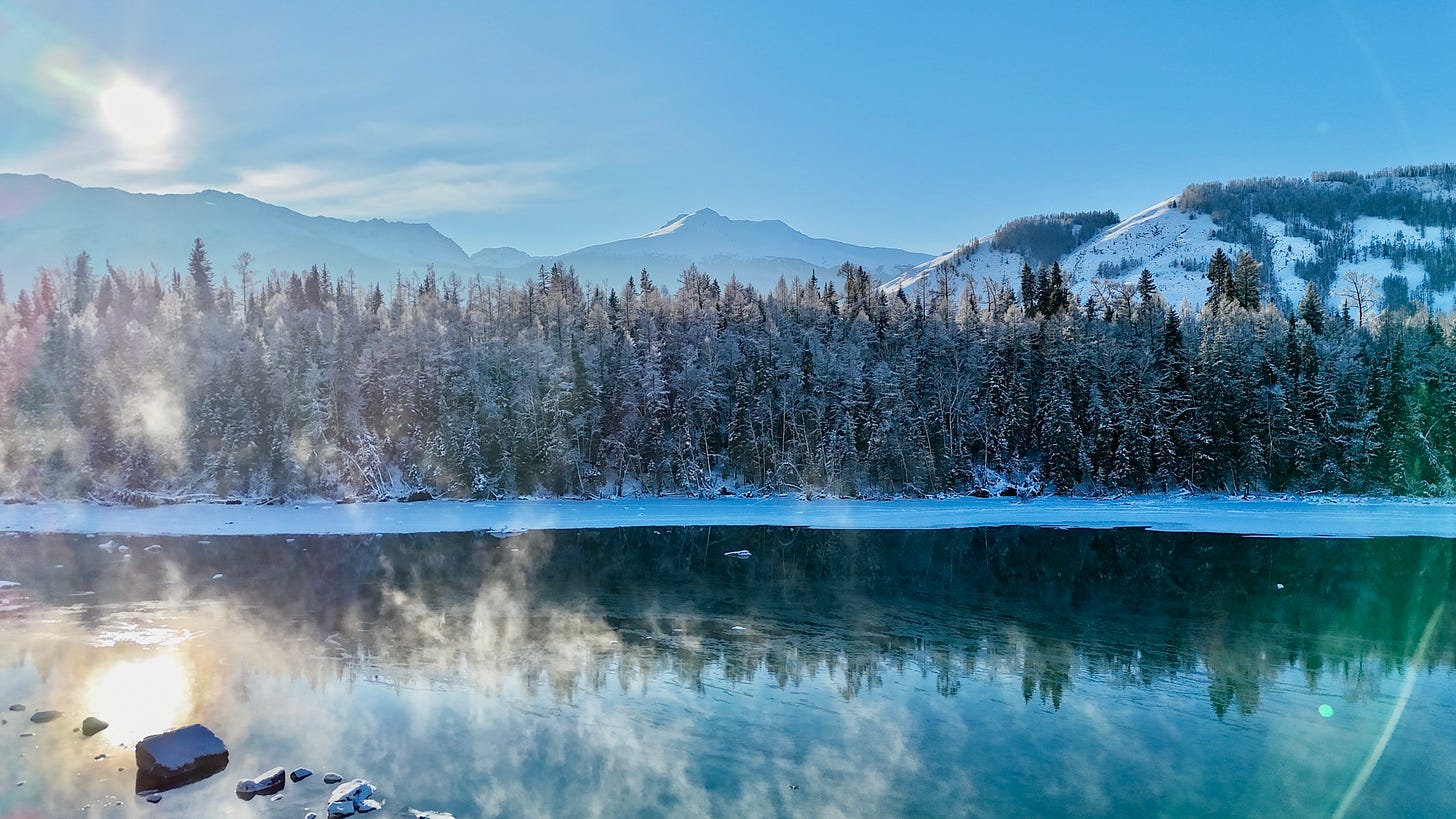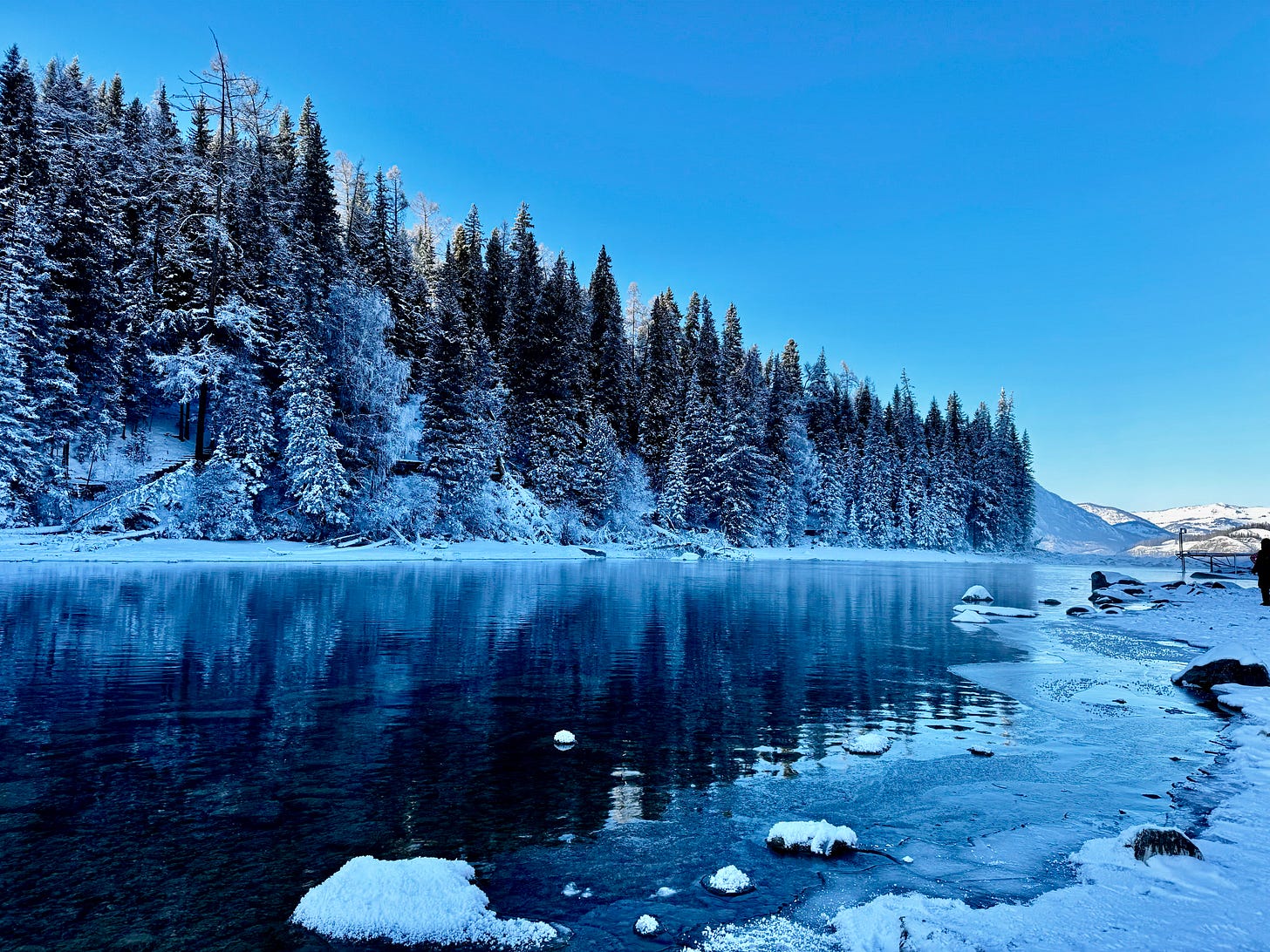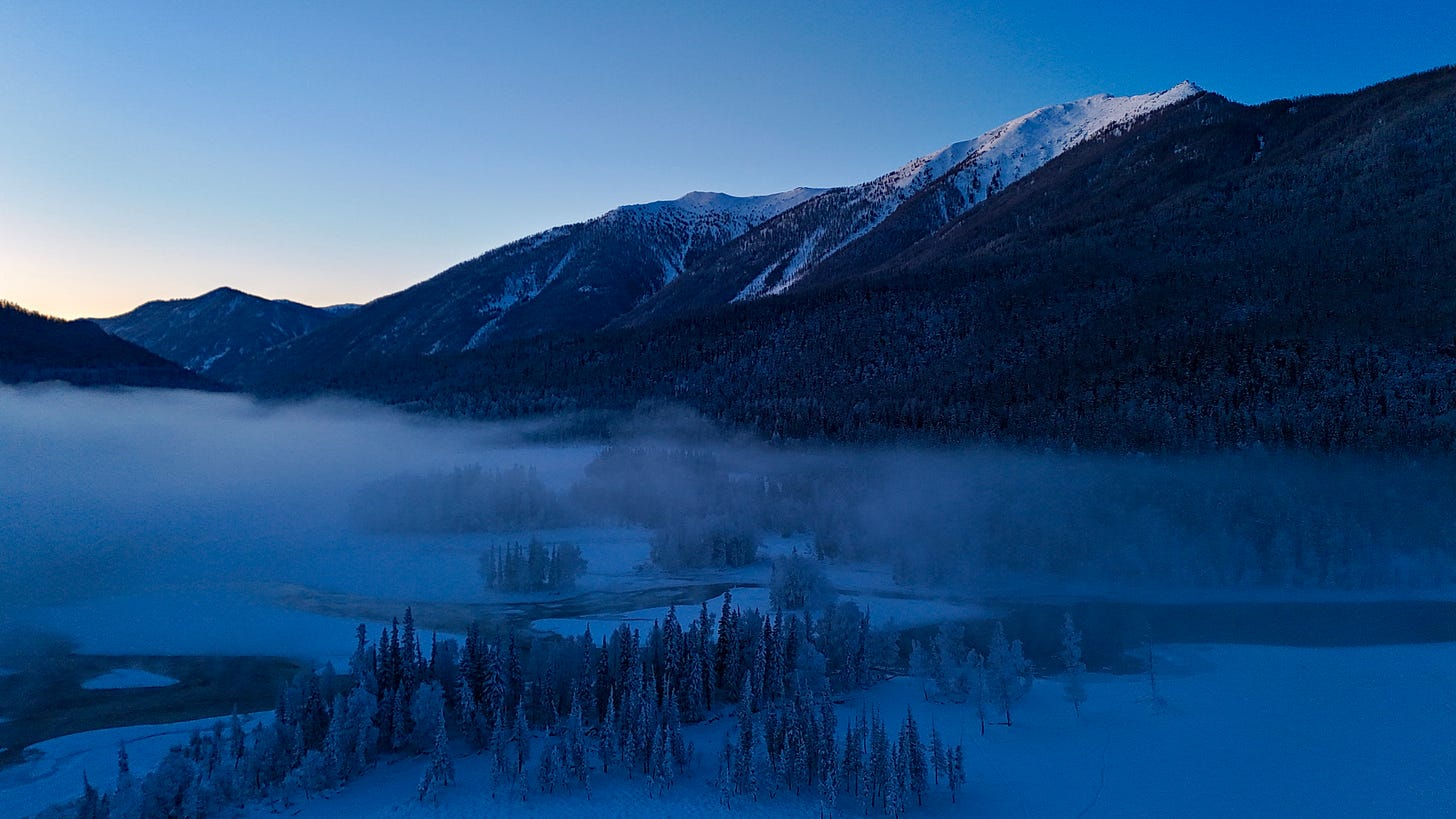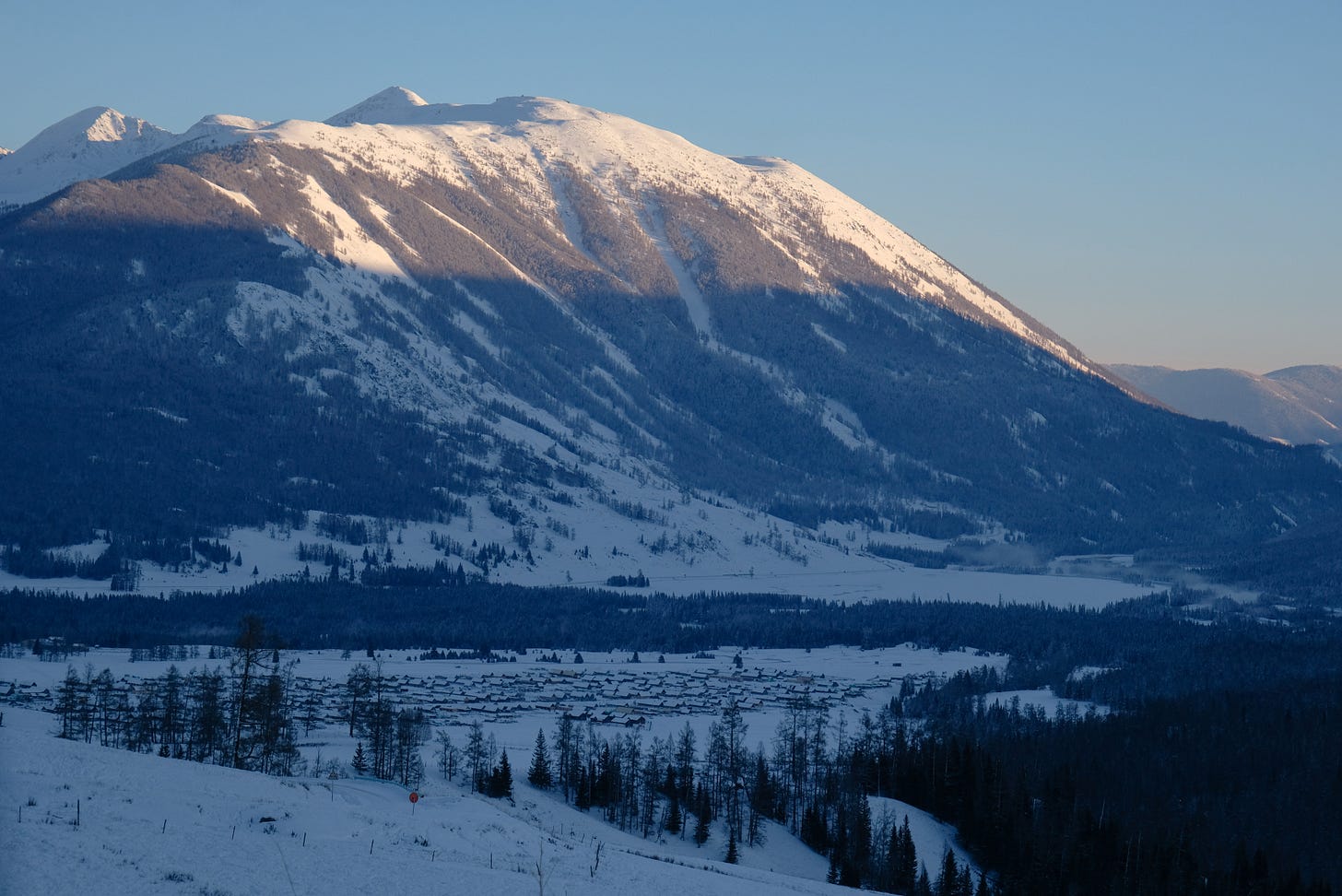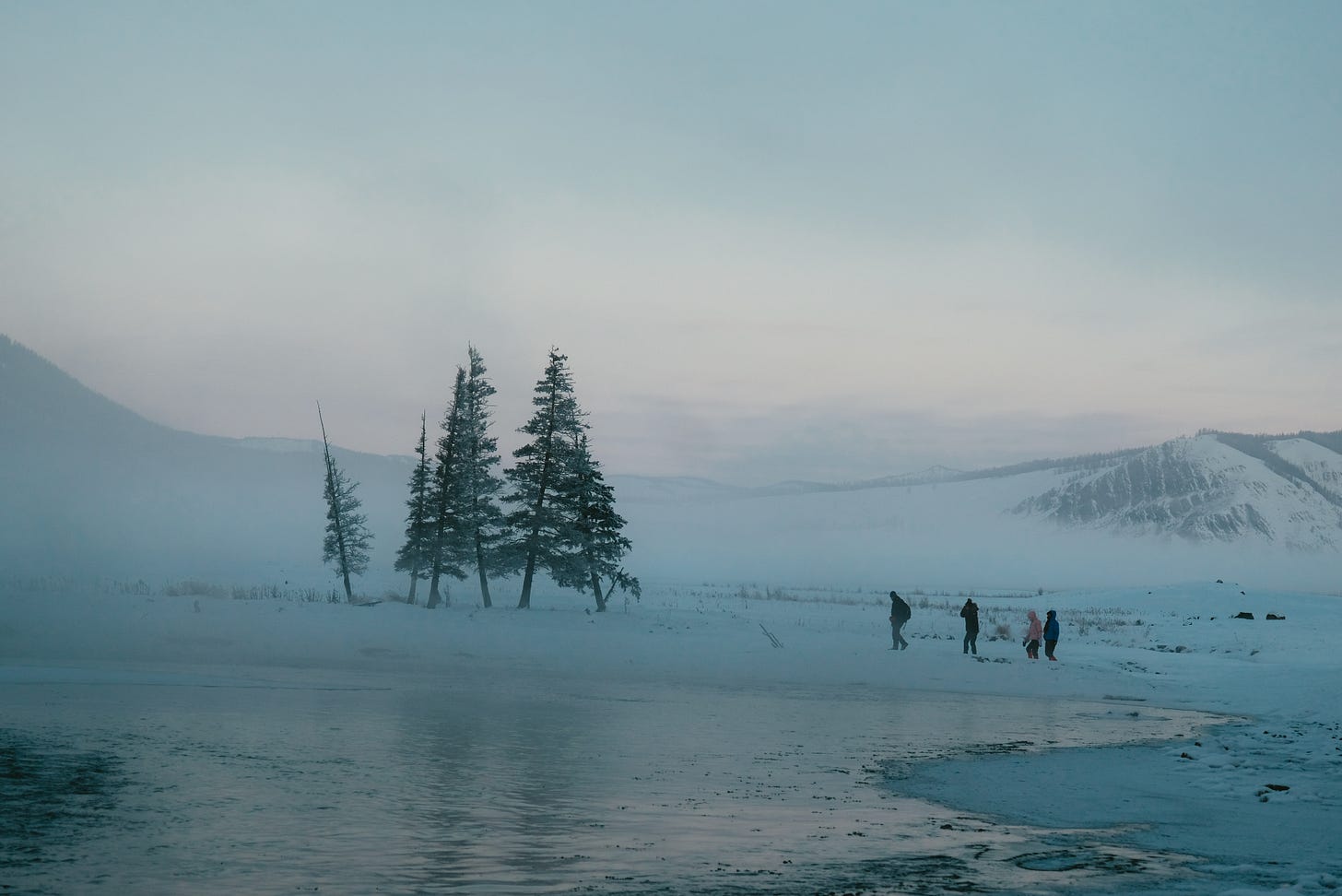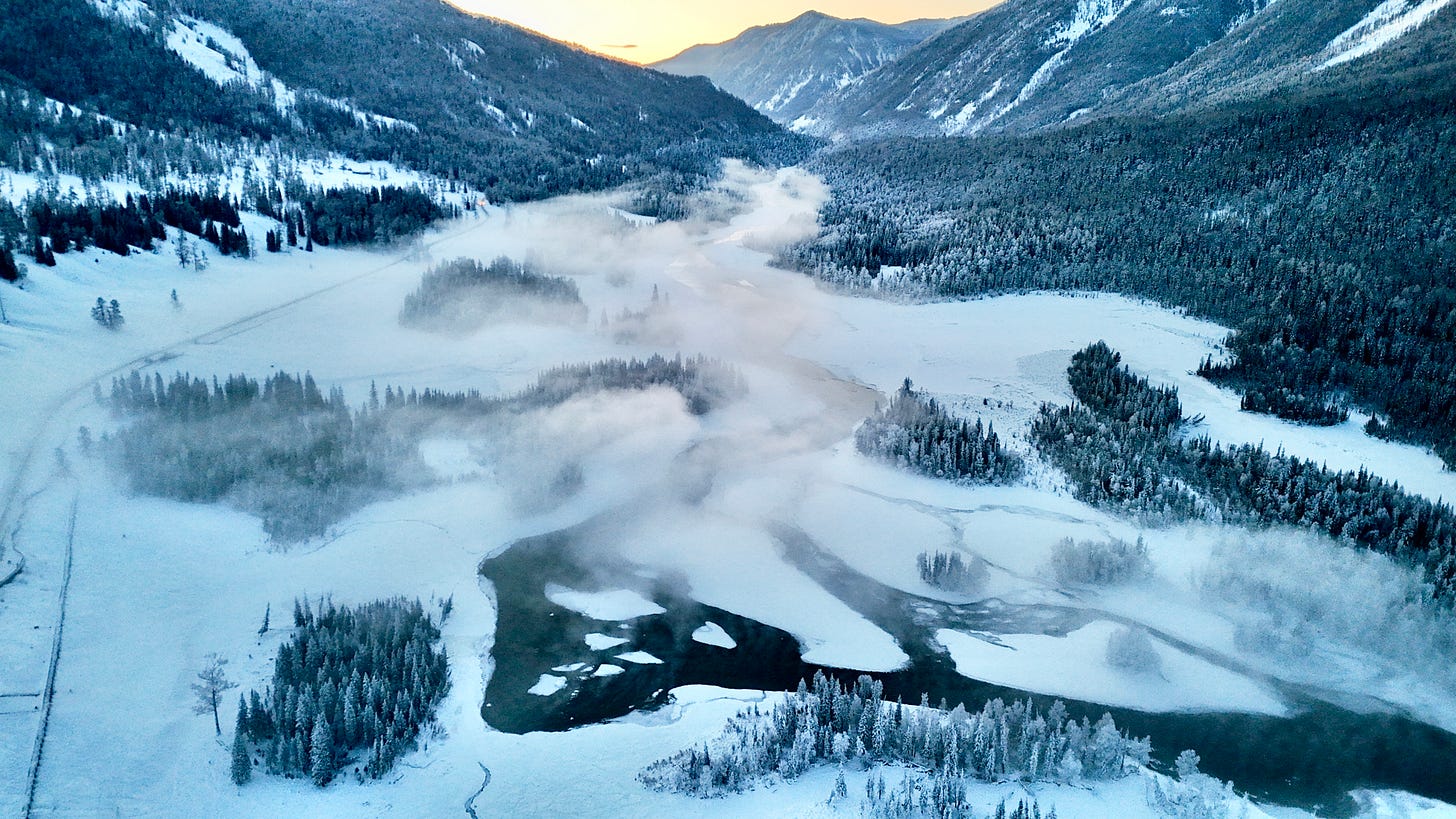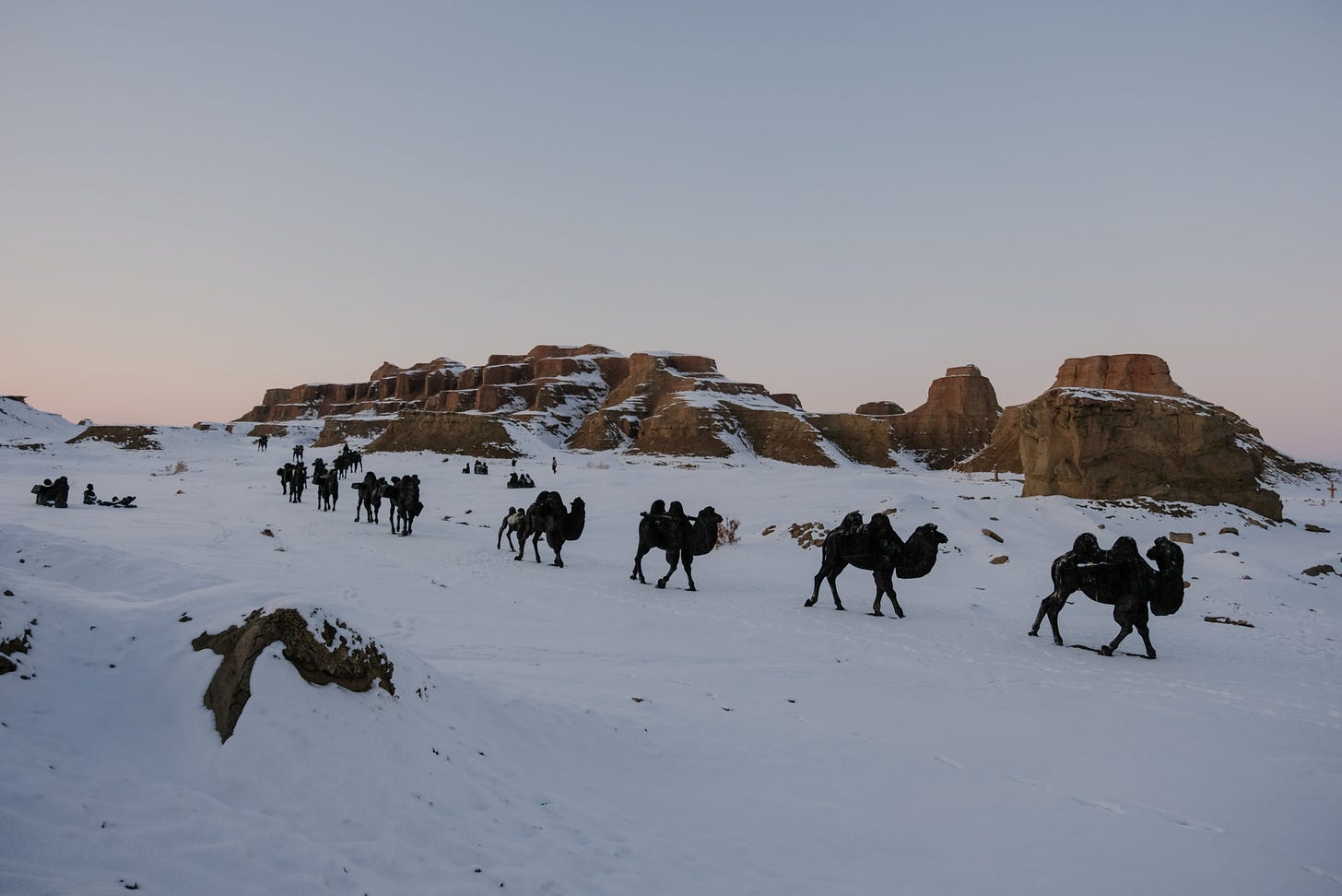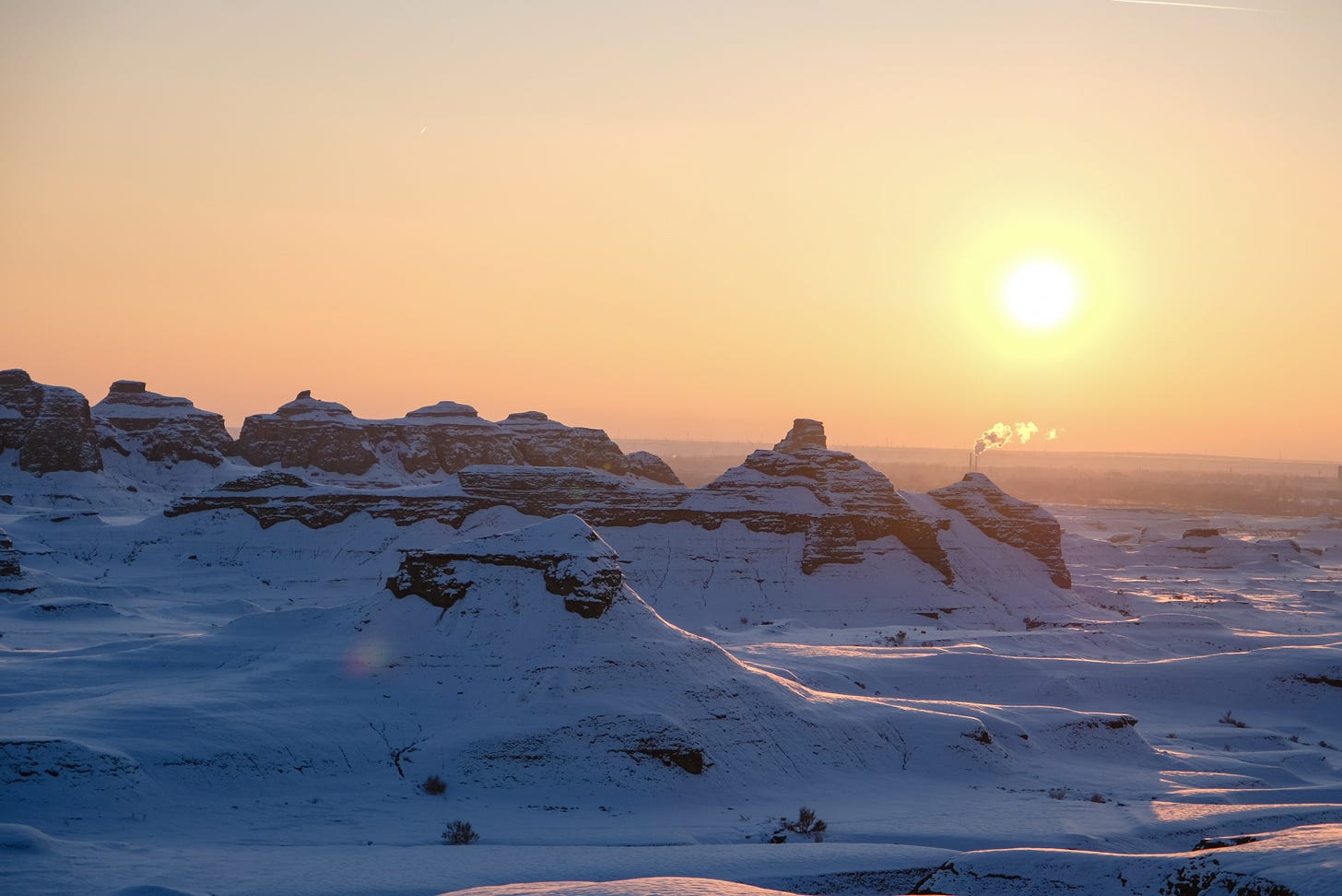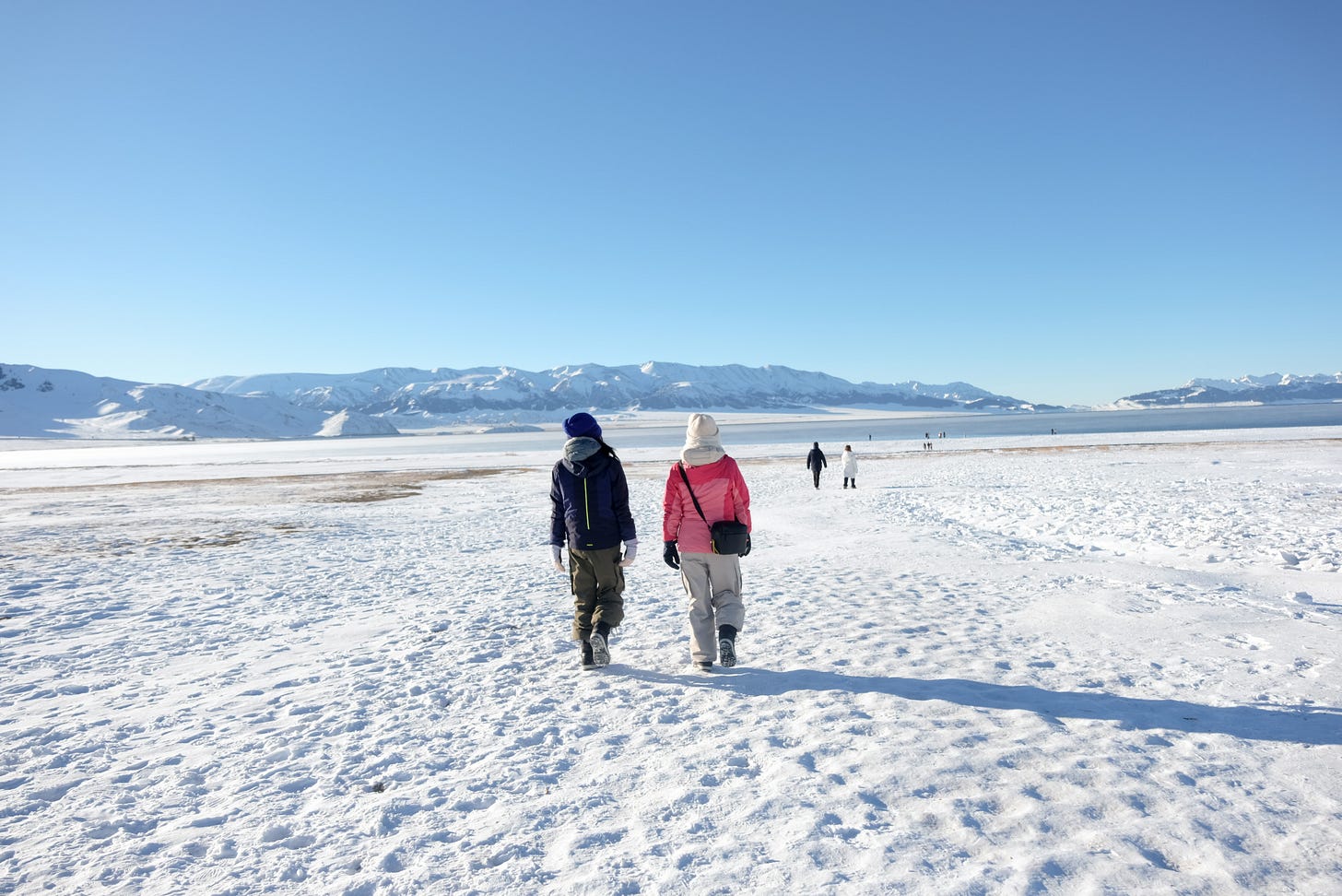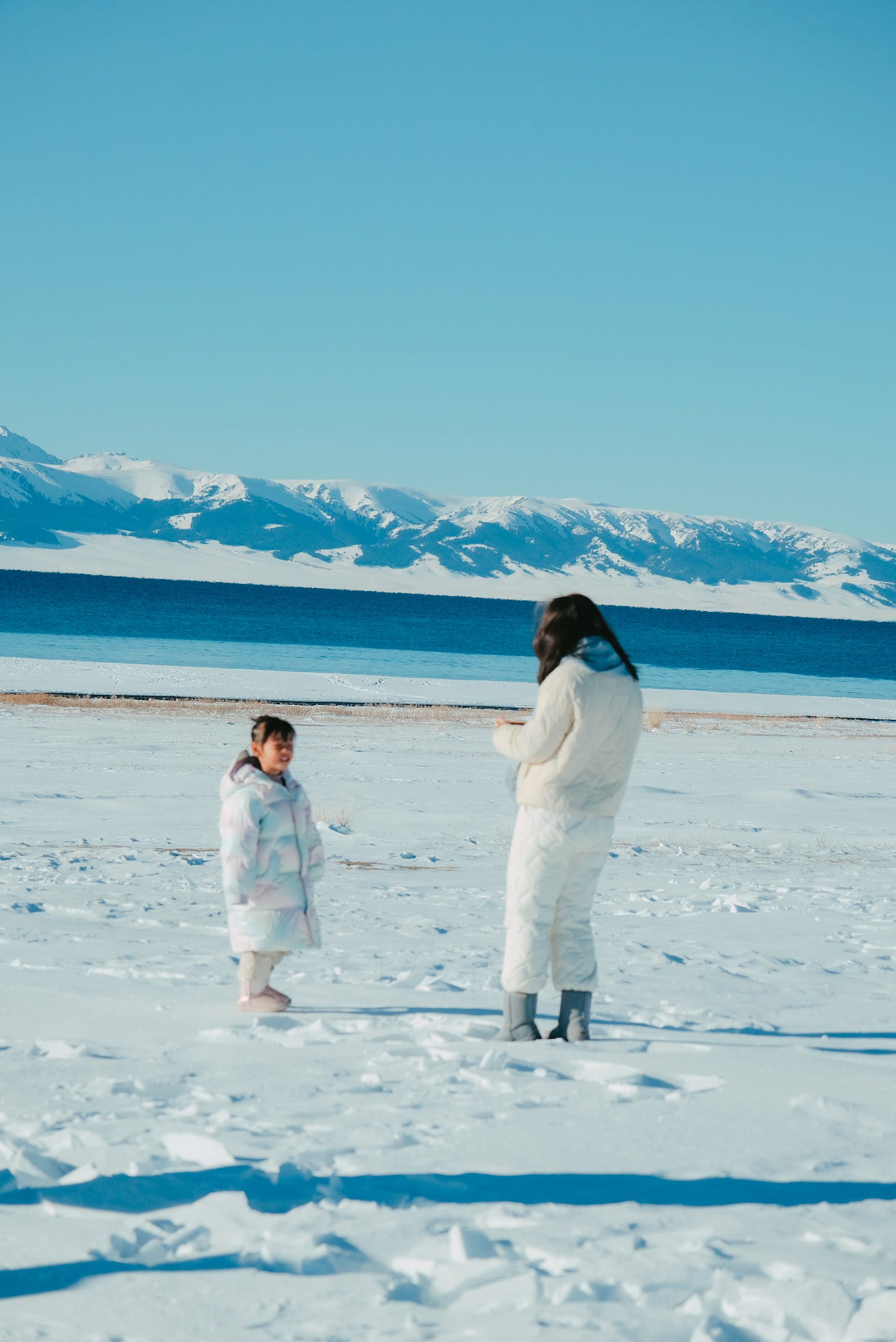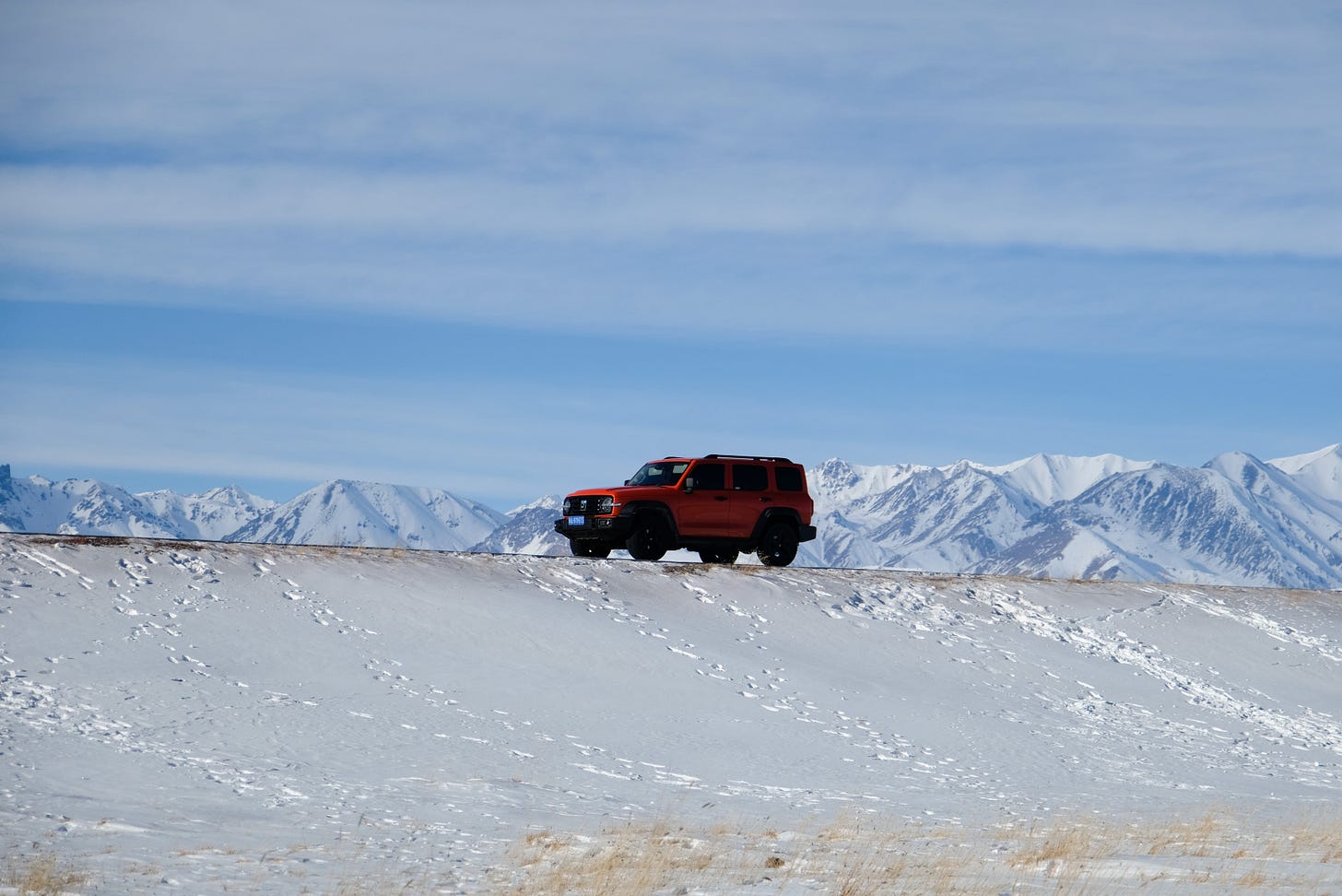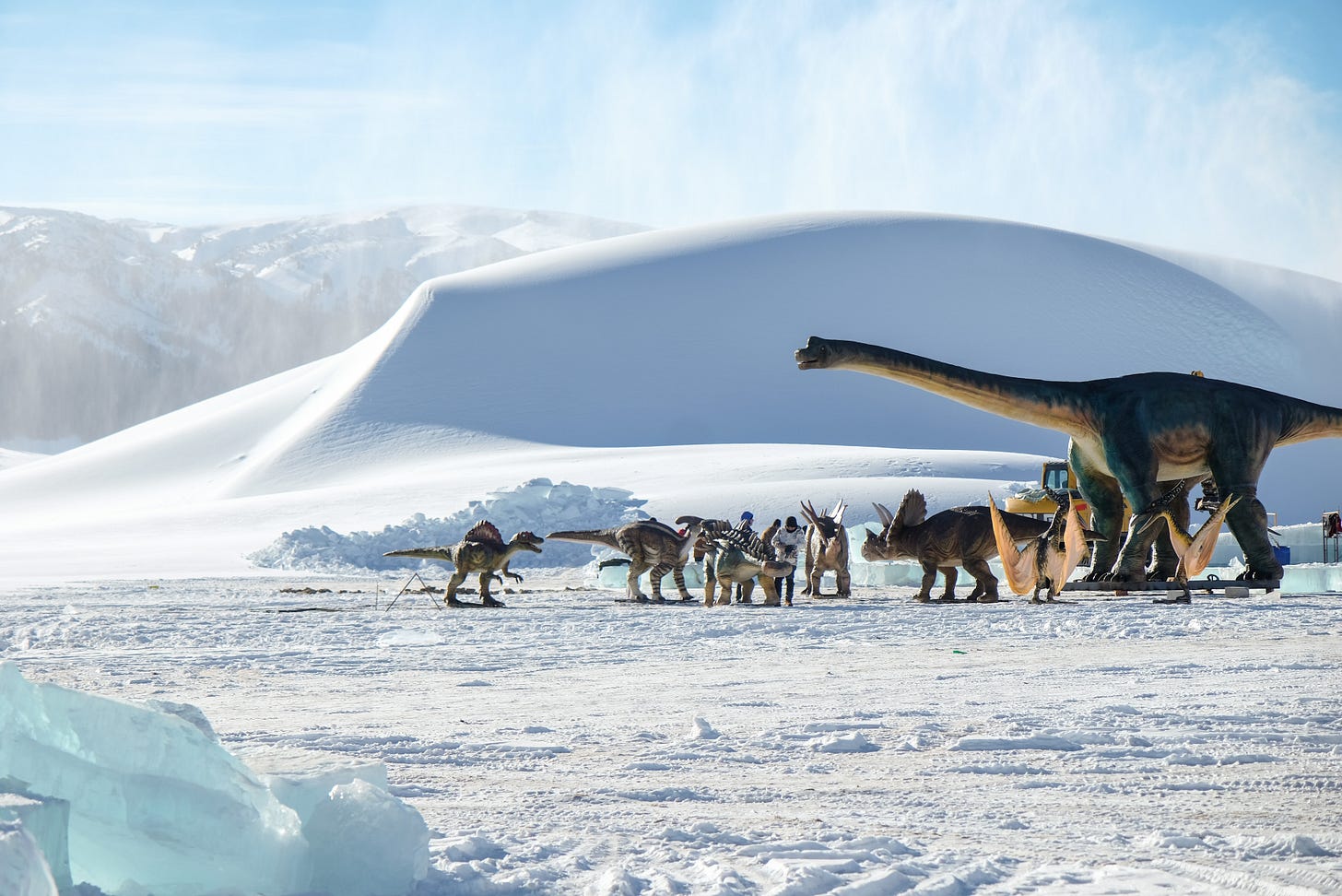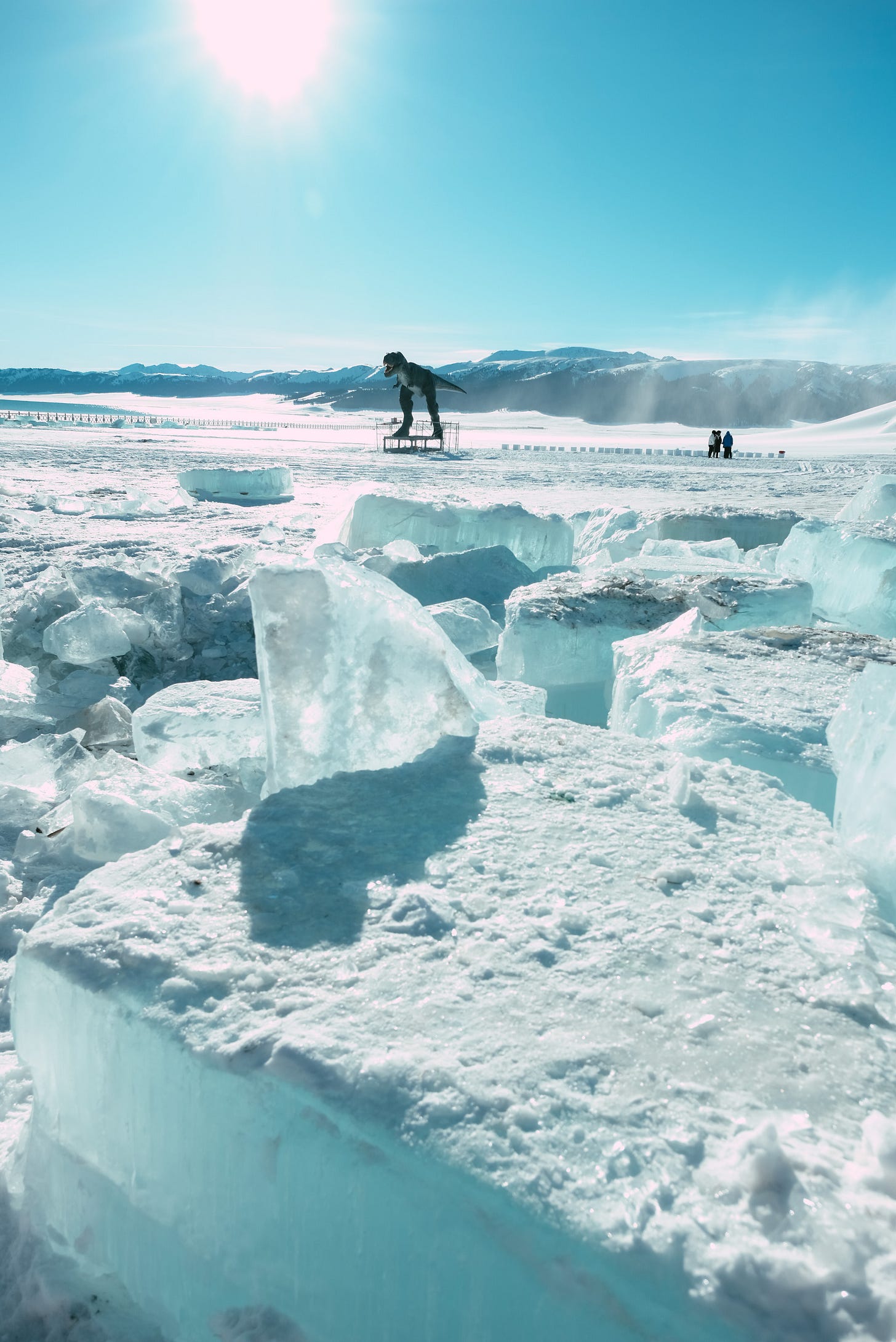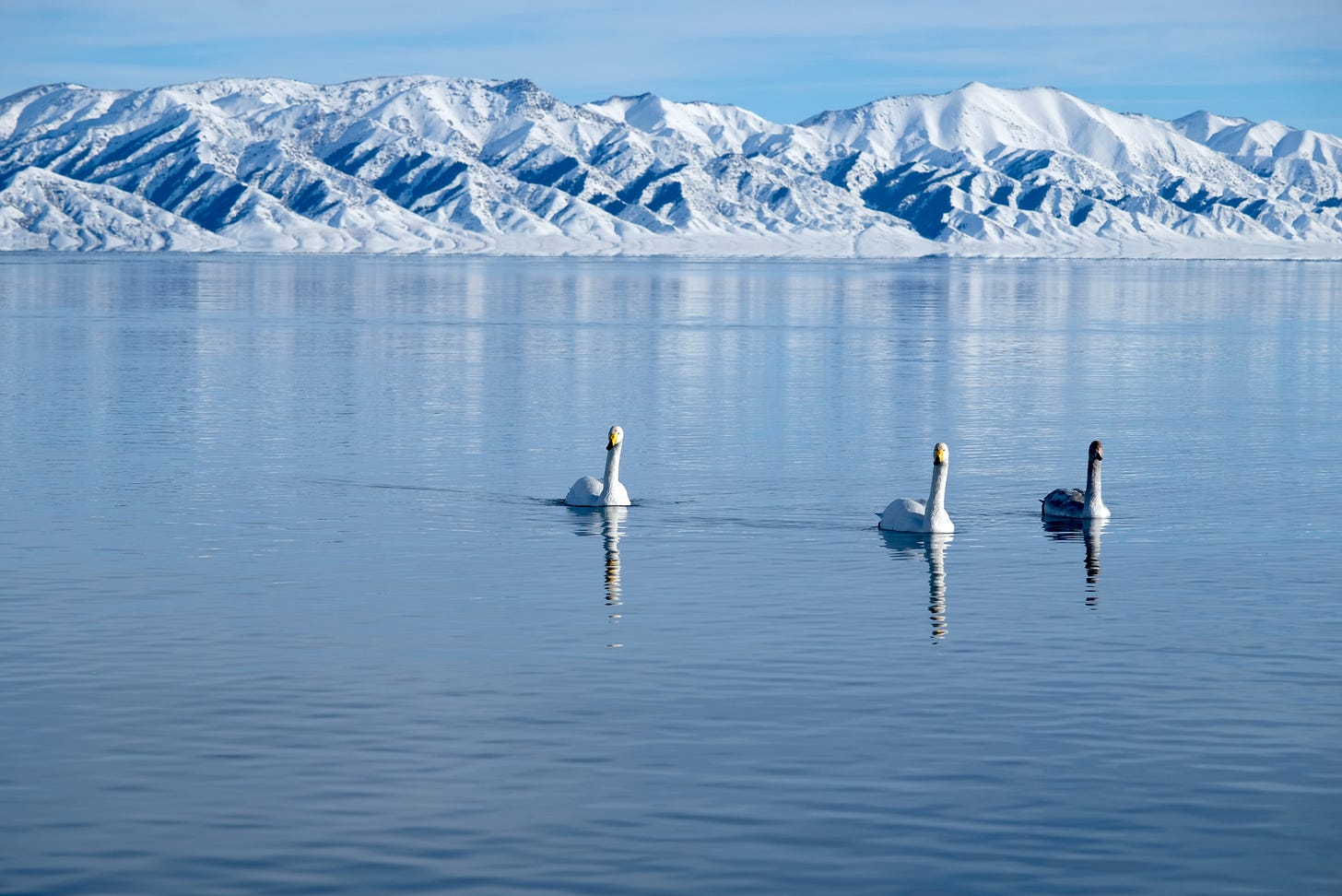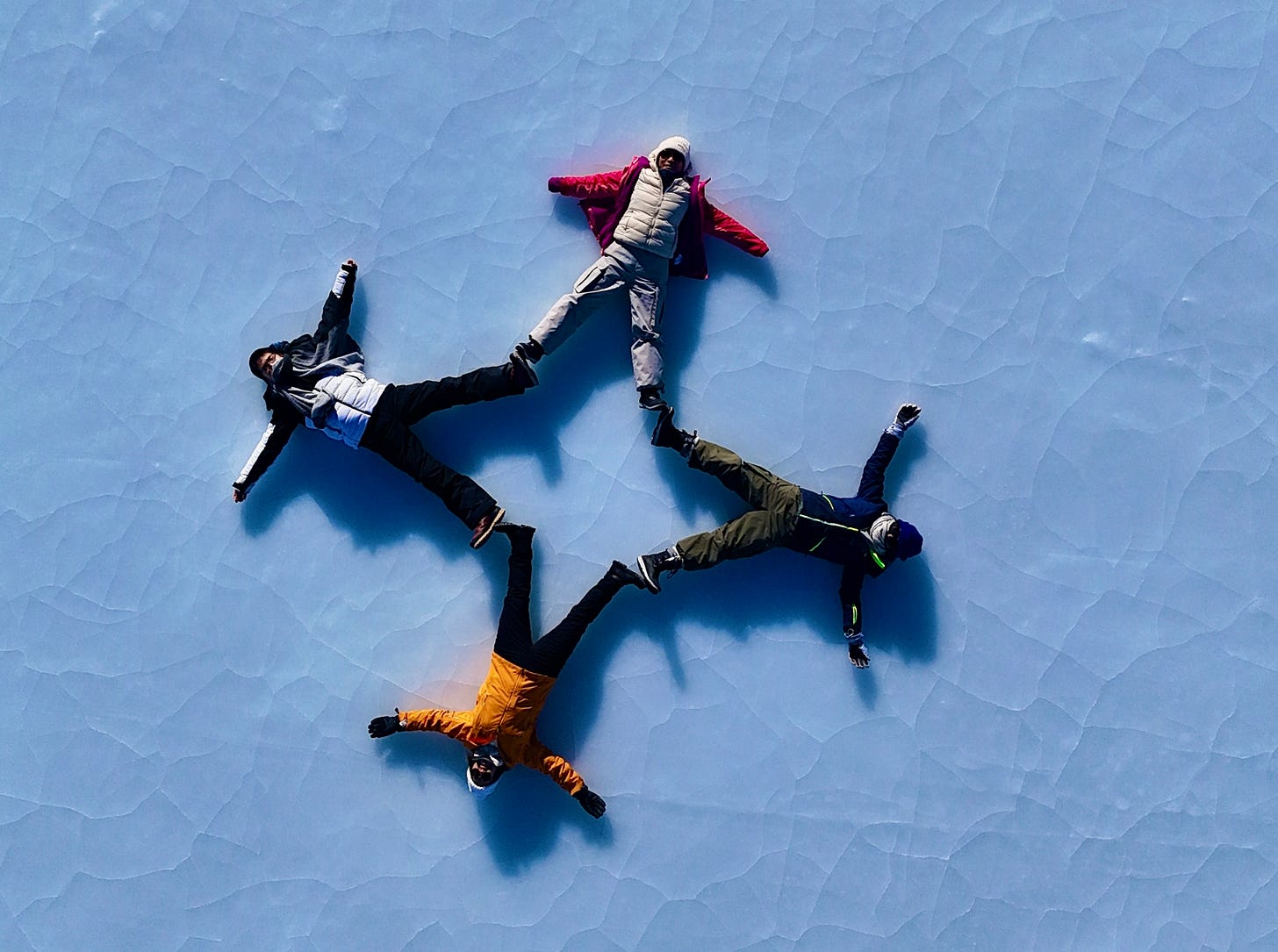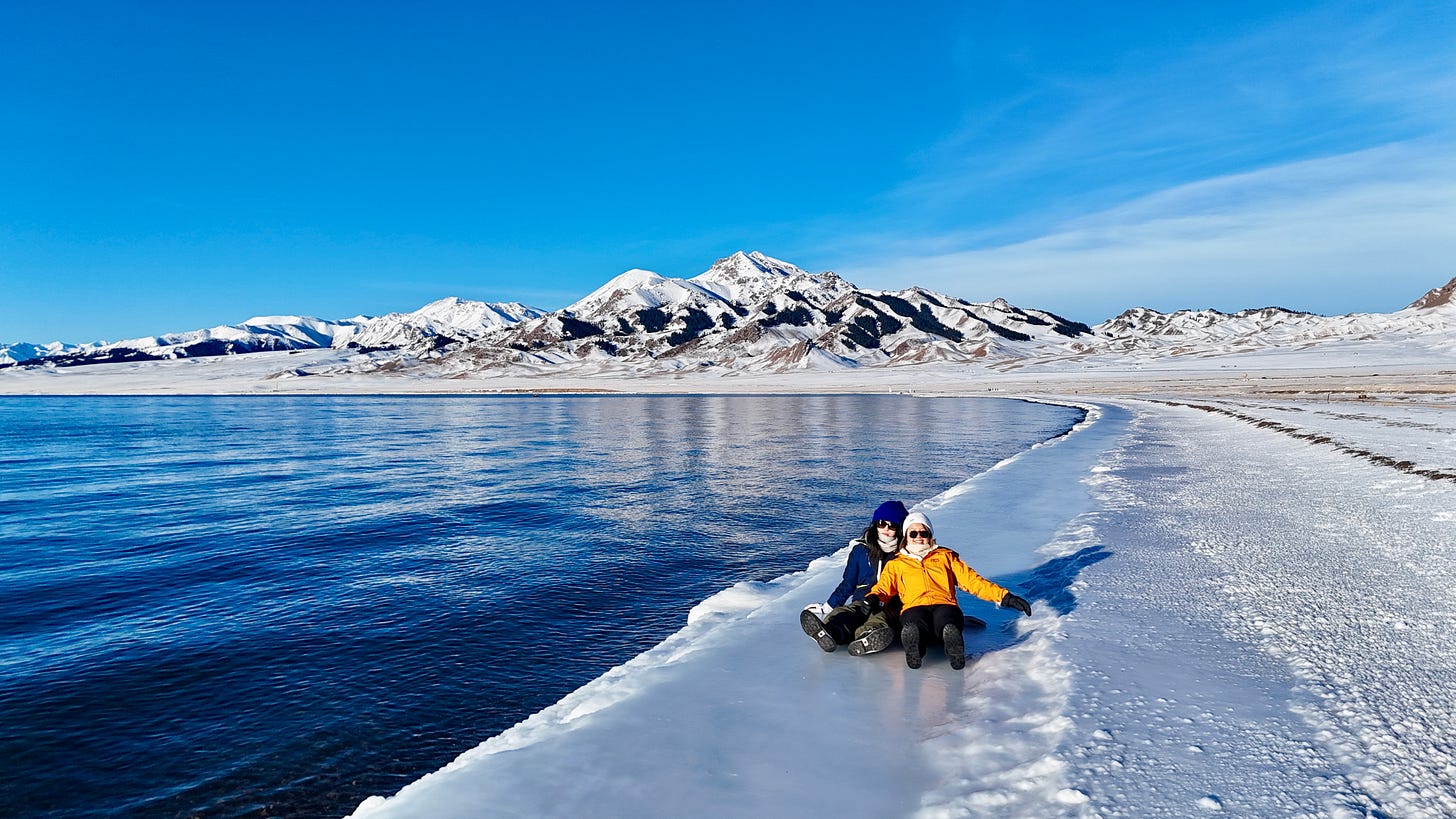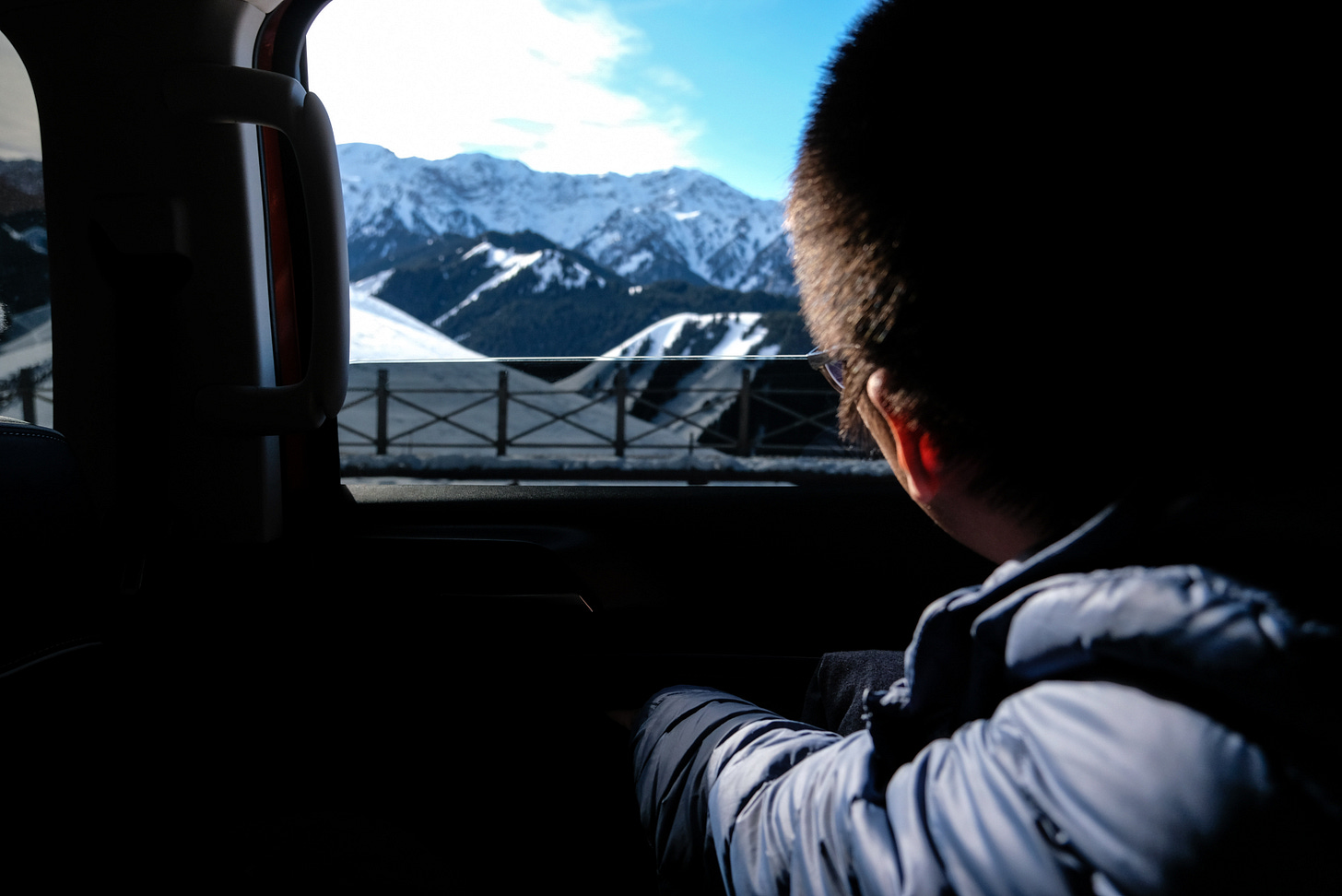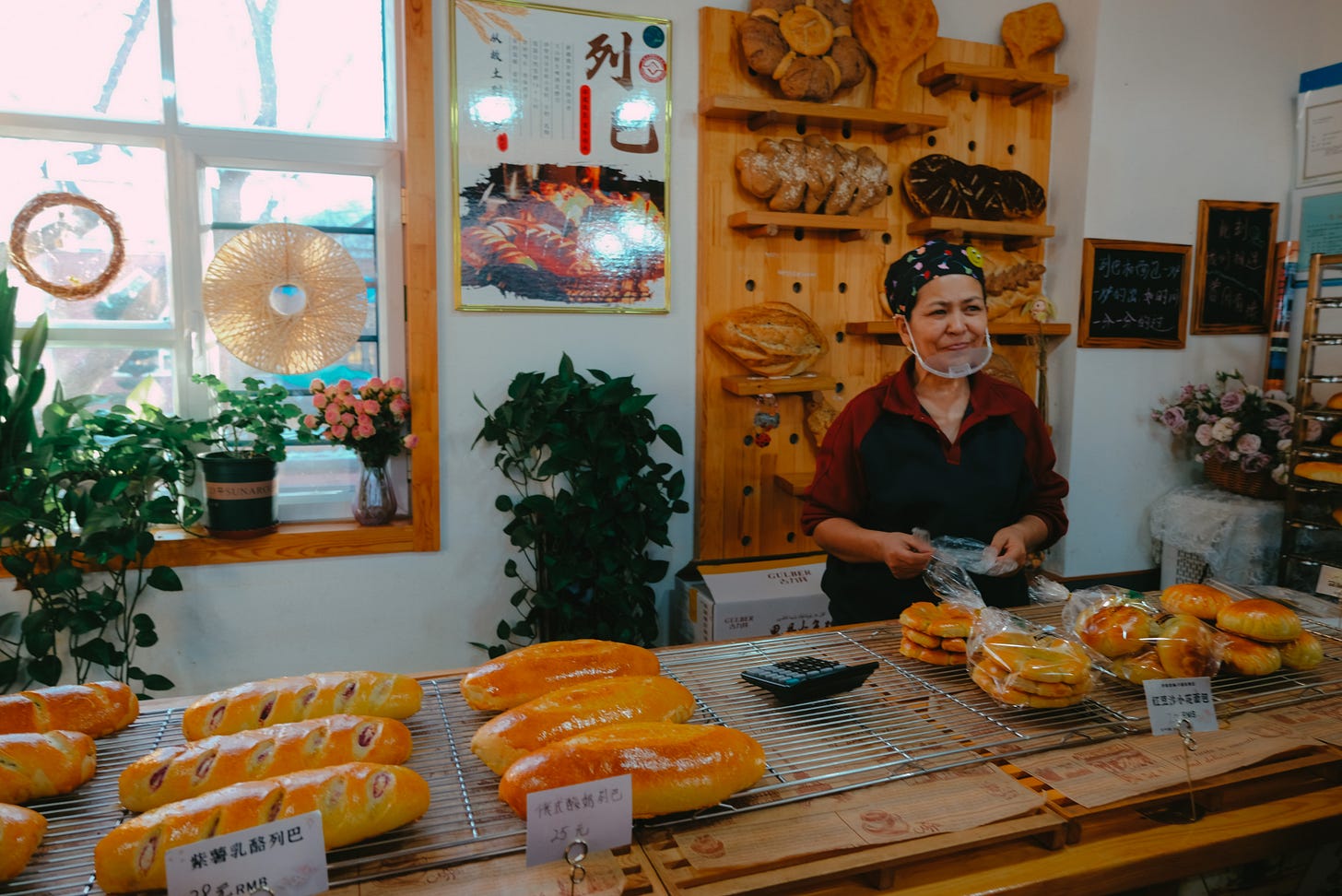Experiencing the Glacial Beauty of Xinjiang
A long-awaited family trip brings me through Xinjiang’s dazzling winter canvas in the far north of China.
Arrival in Urumqi (乌鲁木齐)
Until Xinjiang, I had never known the true depths of winter. In early December 2024, I fly from Singapore to Urumqi via China Eastern. A snowstorm in Urumqi has led to a delayed layover flight from Kunming by six hours. After 17 grueling hours of travel, I finally arrive at night, greeted warmly by my mother and two younger siblings, who have flown in from Shanghai. It’s my first family trip with them in a long while. The fatigue soon disappears, replaced by childlike wonder of seeing a snow-blanketed landscape for the first time in over six years.
Our driver and guide, Brother Long, takes us to a sprawling Arabian Nights style restaurant. Immediately, we are thrust amid belly dancers, including one in a bejeweled sari with a live snake wrapped around her neck. As she shimmies to the music, she foists the snake on a mix of eager and reluctant diners.

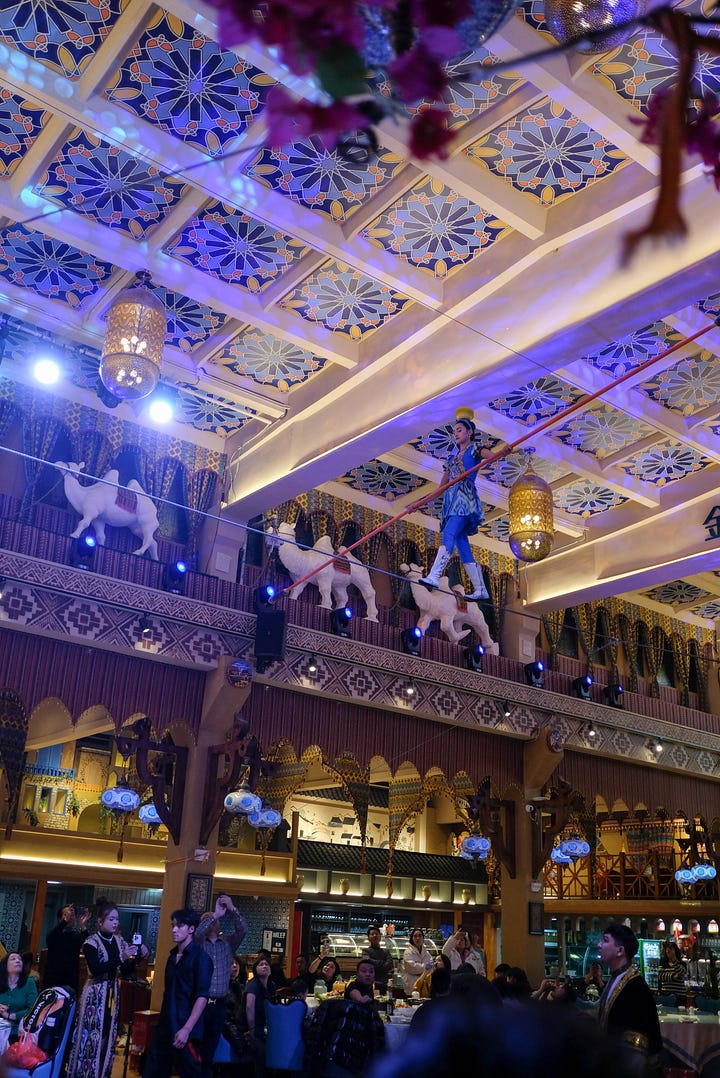
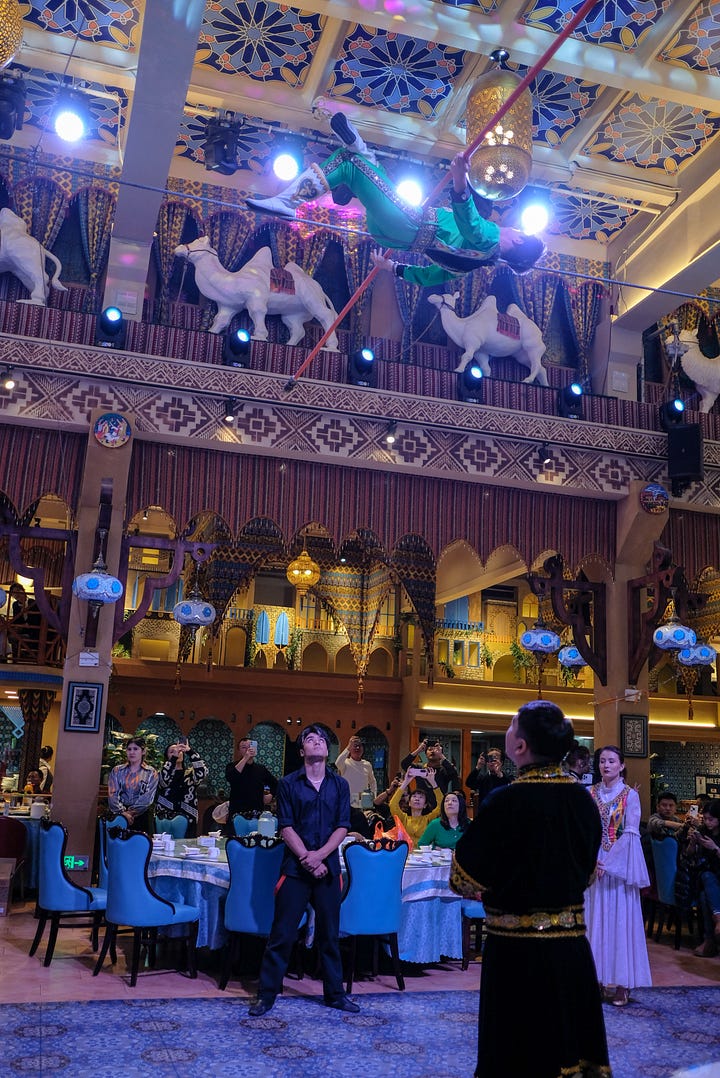
Next, tightrope walkers from the national team performs stunts, and it’s all very disorientating. The night ends with machismo-swaggering customers storming the stage in drunken abandon.
A visit to the Urumqi International Grand Bazaar (国际大巴扎), with its iconic domed towers, offers a window into the Silk Road’s vibrant history.


Covering one-sixth of China's total land area, Xinjiang is a place where Central Asia influences meet modern China. In recent years, Northwest China's Xinjiang Uyghur Autonomous Region has seen a record 300 million visits in 2024, a 14 percent increase compared to the year before, China’s regional culture and tourism department said. (See here and here)
The market buzzes with life. Stalls that peddle everything from traditional Uyghur nang bread, sweet dried raisins and dates, cumin-scented lamb skewers, coffee brewed in hot sand, fresh pomegranate juice, ethnic music instruments, carpets and rugs, jade trinkets, intricate knives, and even forlorn-looking camel heads and crocodile skin strung up for display.
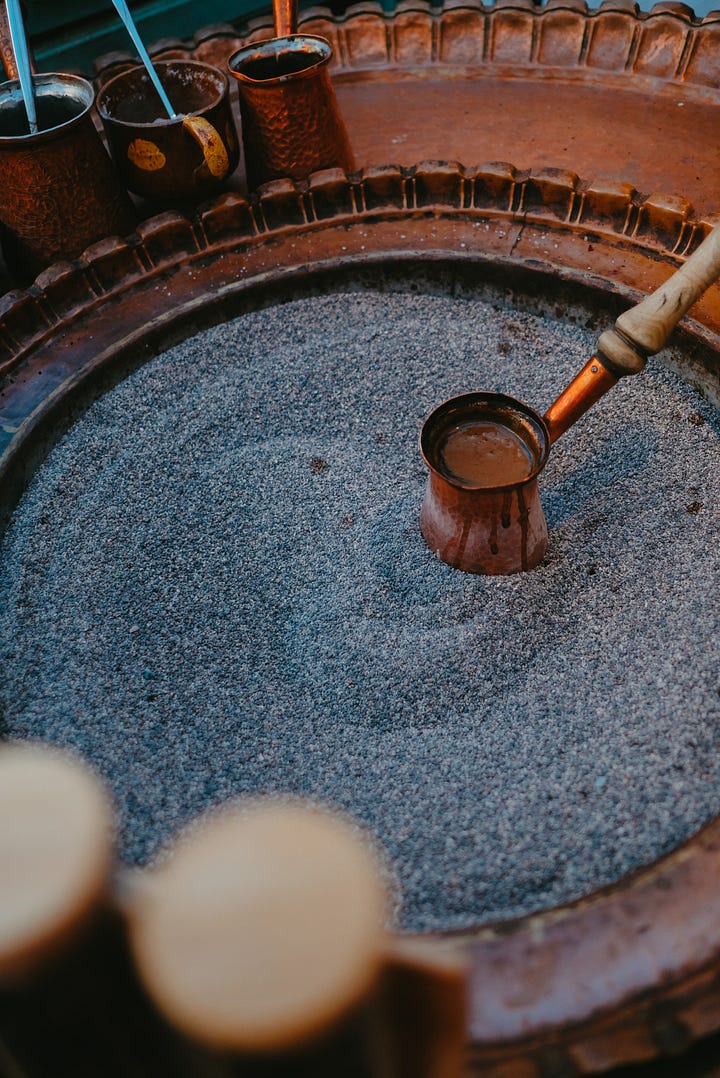



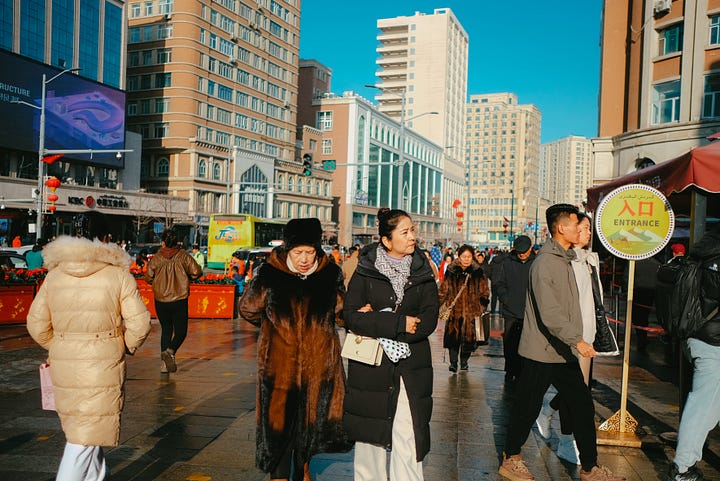
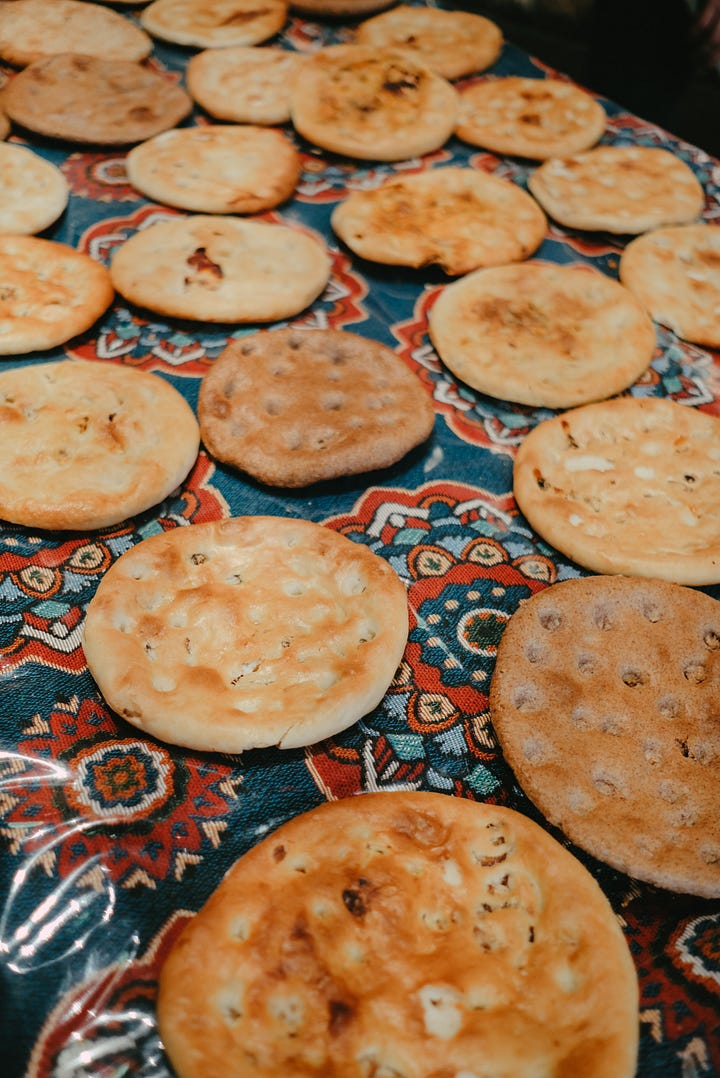
Nang bread, for instance, which stems from an over 2000-long history, can be made of different fillings and shapes, and kept for a long time. It’s a sensory feast that mirrors Xinjiang’s rich cultural mosaic of different groups like Uyghurs, Hui, Kazakhs, and Han. Being here, it’s impossible to avoid the topic about the media’s reports of China’s political persecution of the Uyghur population. From surface level observations, many Uyghurs appeared to lead normal lives, running restaurants or small businesses. However, security in the region is visibly tight, with a constant police presence and frequent security checks at buildings.


The Eccentric Yema International Hotel (野马国际)
Hema International Hotel might have been one of the strangest places I’ve stayed at. It’s owned by an eccentric Chinese billionaire Chen Zhifeng, founder of Xinjiang-based Ye Ma Trading Group. The hotel is a maze of black corridors and mirrors, designed as such on the advice of a fengshui master to attract wealth. The hotel and ‘ancient ecology’ park houses Chen’s bizarre collection of treasures— black iron meteorites, 3,000-year-old desert petrified poplars, sand-polished boulders, statues and sculptures from Asia, and a motley crew of camels, vultures, peacocks, eagles, and other oddities. It’s said that Chen meets visiting heads of state and domestic dignitaries for business negotiations here.
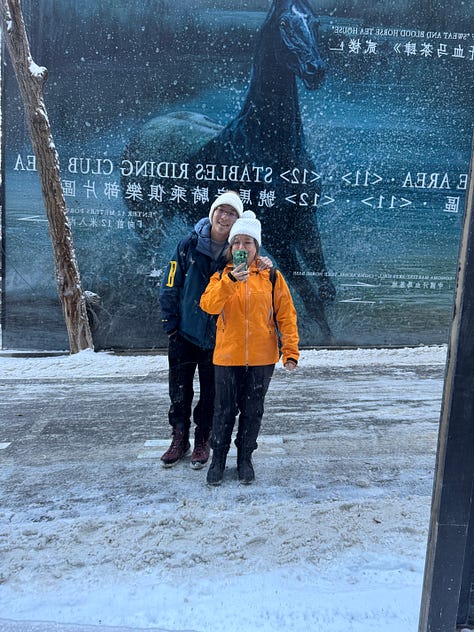



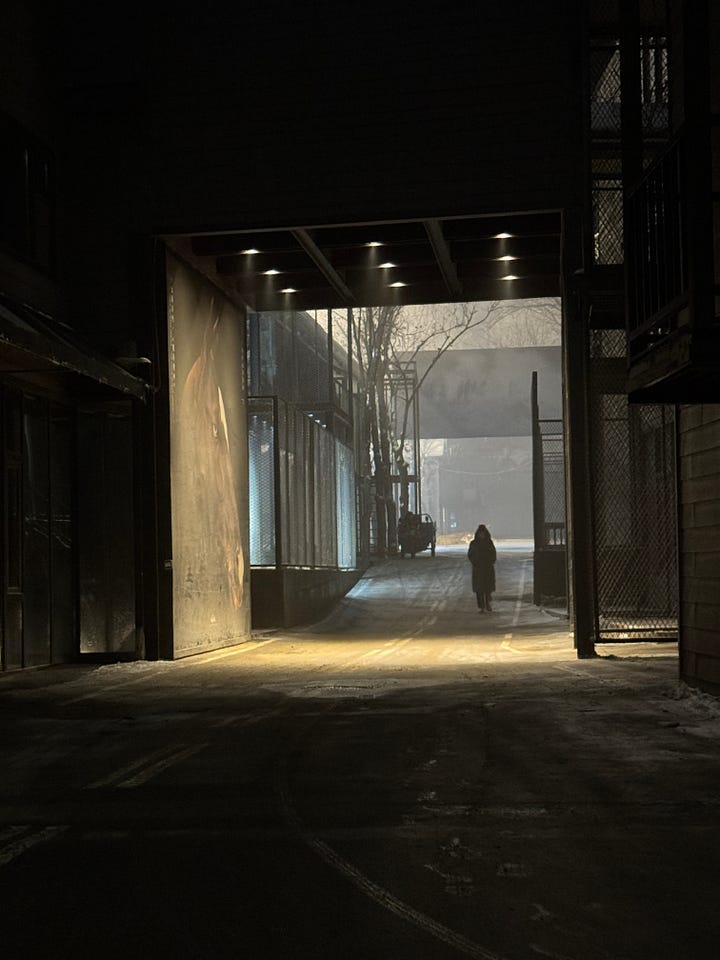
But the crowning jewel is Chen’s collection of Akhal-tekes, known as legendary “blood sweating” horses due to their colour. Chen has spent 2 billion yuan since 2009 buying and breeding these rare prized steeds, compared to the “Rolls-Royce of horses,” with over 400 to his name. The Akhal-teke’s speed and stamina was so prized during military conflicts that China’s emperor Wu, the seventh ruler of the Han dynasty, waged two wars just to acquire some. According to reports, Chen now plans to incorporate these horses with the revival of the Belt and Road Initiative. A co-production movie between China and the United States about the mysterious Loulan Kingdom, a vanished civilisation along the Silk Road, will see the participation of Chen's Akhal-Teke horses.
Not one for subtlety, Chen’s ardent love for horses is evident in every corner of the property. Floor-to-ceiling glass cabinets display horse figurines, a museum showcases oil paintings of horses (one depicting him as an ancient Han dynasty warrior), and taxidermied equines complete the collection.
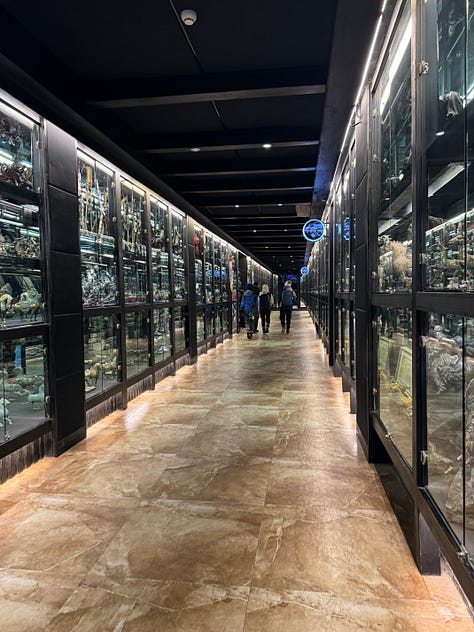
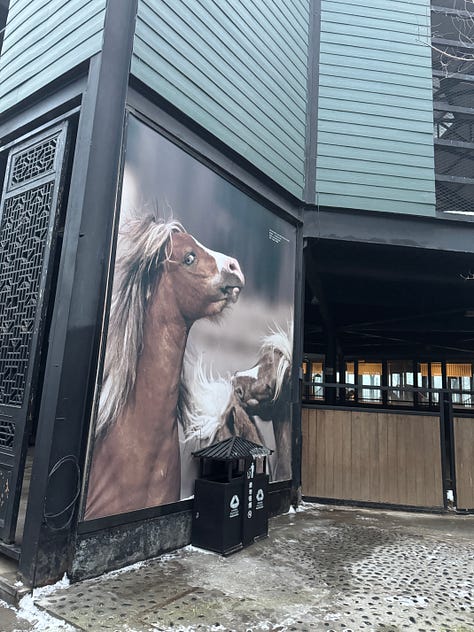
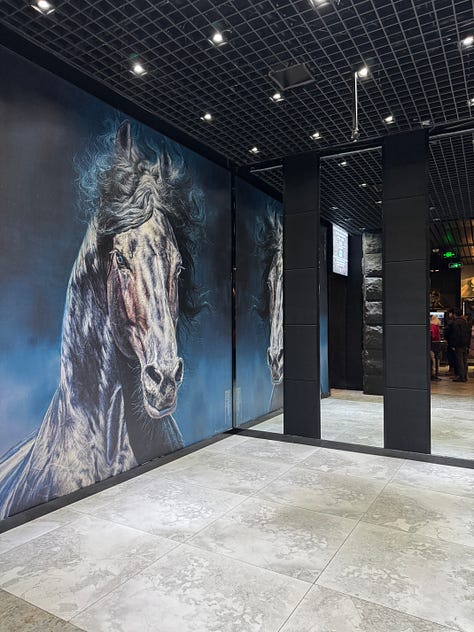
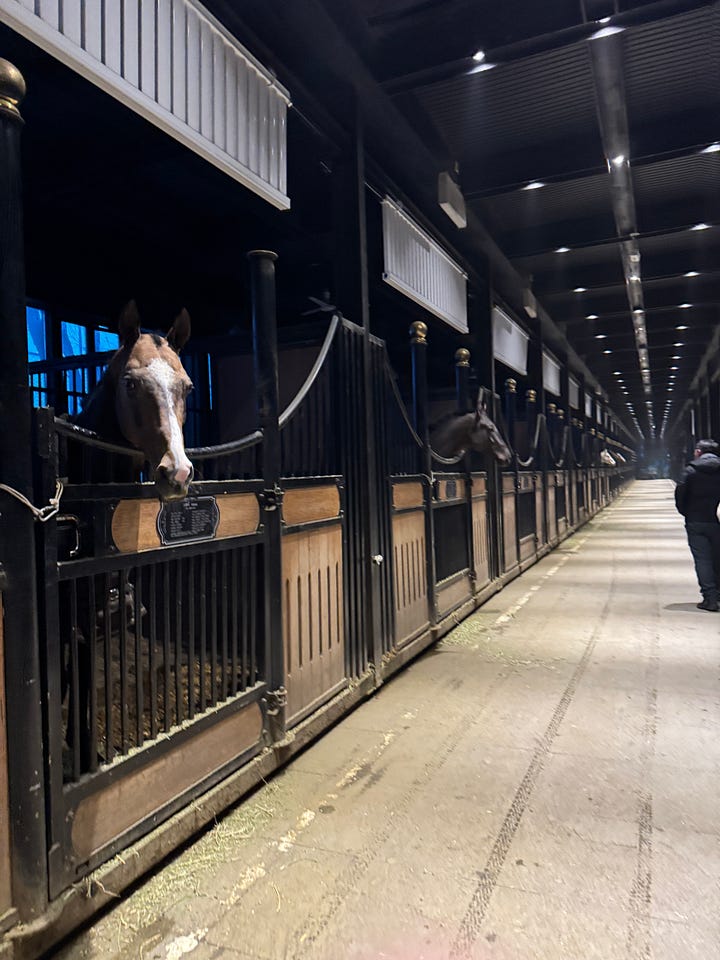
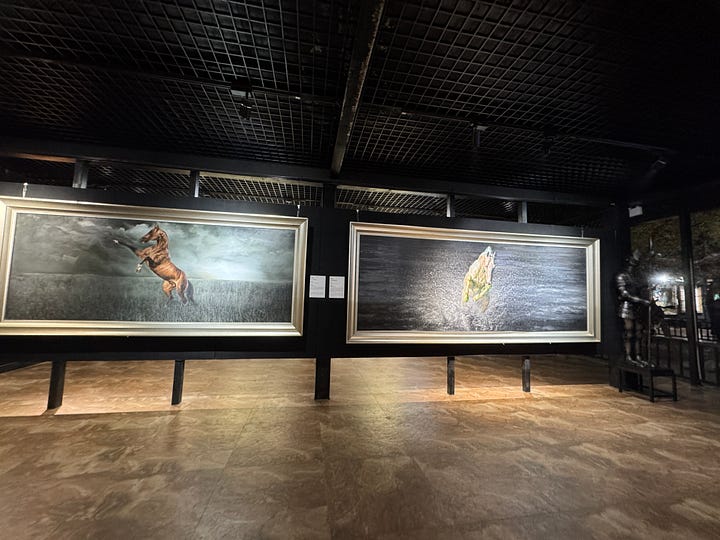
Most tourists flock here for the equestrian show, a lively hour-long showcase of horses, archery, and traditional games. Sharing the spotlight are fluffy camels with comical expressions, miniature horses bounding around with maniacal glee, and regal jet-black Friesian horses. Maybe it’s all the black, but I can’t shake off the foreboding feeling that the horses here aren’t very happy.
The Road to the Altai Mountains (乌鲁木齐-S21-阿尔泰)
Our journey from Urumqi to the Altai Mountains begins in a bright orange Tank 300 SUV. Winter travel in Xinjiang demands adaptability. A heavy snowstorm the night before has blanketed the roads in black ice, while dense fog shrouded the S21 Desert Highway, forcing us to take a longer route. Traveling in the low season, we leave some bookings open, anticipating delays or being snowed in.
Any road trip essential dictates that one should be loaded with snacks, a rockin’ playlist, and entertainment to last through the 7-hour ride. And when you travel with kids, you need enough food to feed an army. Our snack bag overflows with nang bread in rose and chili flavours, dried beancurd, coconut rolls, sweets, Mandarin oranges, and cup noodles for lunch pit stops. My 15-year-old brother insists on playing his favorite mix of opera, jazz, and Cantonese classics (bless his old soul), while I try to sneak in Rose’s APT and other trending hits. Sandwiched between my siblings, I alternate between reading Around the World in 80 Trains and serving as a makeshift pillow for them.


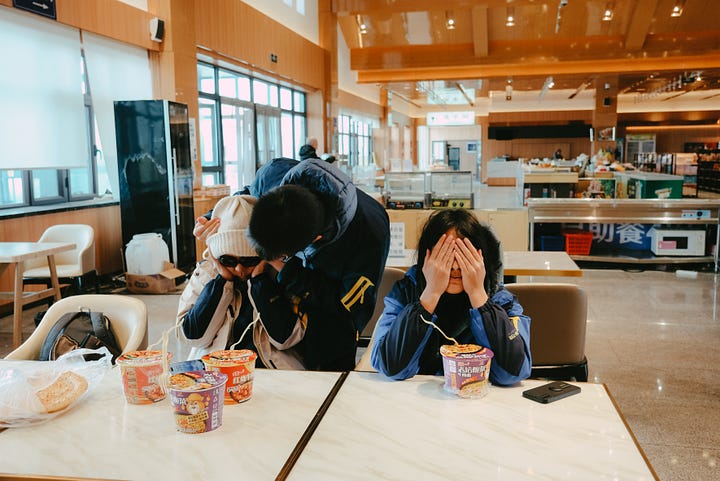
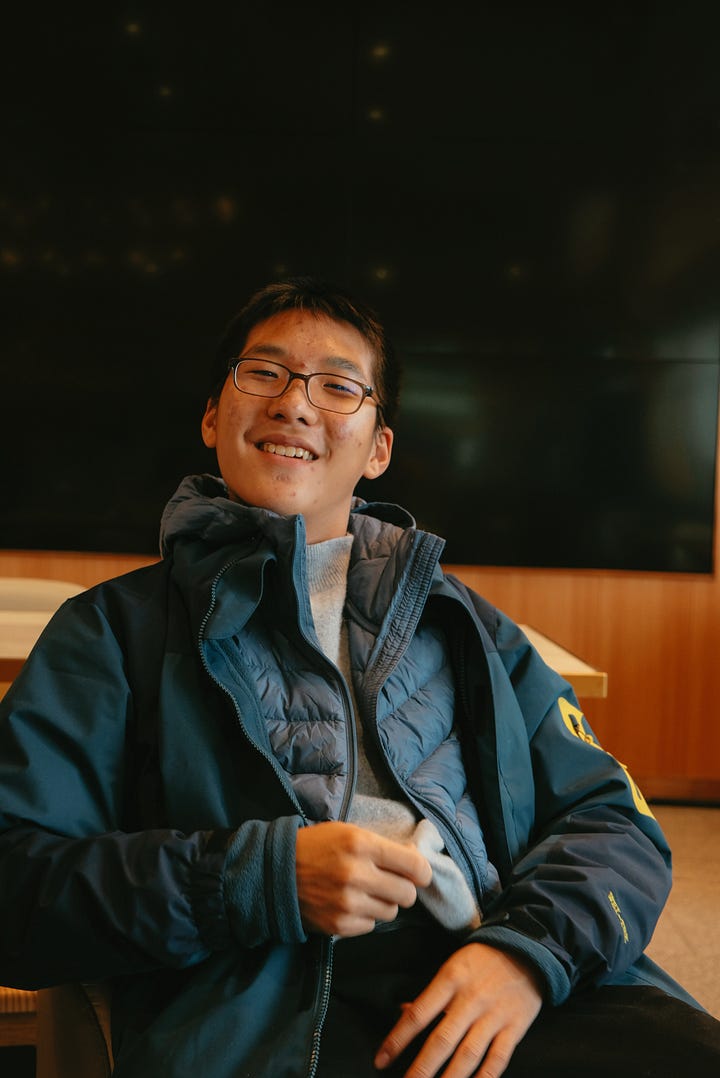
As the car peels away from the city’s clutches, it seems to breathe a sigh of relief and settles into the long stretch. As Brother Long navigates with a calm expertise, the scenery transforms: Martian-like deserts that give way to snow-draped mountains. We encounter fog, snow, shadow and sunshine along the way. Xinjiang’s natural wealth unfolds before us: wind turbines harnessing energy, lands laden with coal, oil, gas, and jade. In milder weather, I’ve heard that you can see vast cotton fields, and free-grazing lambs that make up the region’s culinary staple.
Arrival in Altai (阿尔泰 - 布尔津)
In Altai, we stay at the trendy Atour Hotel (阿勒泰亚朵酒店), its walls adorned with action shots of skiers and snowboarders.
After gulping down their breakfast, my siblings head to the Altai Mountain Ski Resort (阿尔泰将军山滑雪场), eager to conquer the slopes again. In recent years, remote Xinjiang has become an emerging ski destination, offering an alternative to the more crowded slopes of Japan and Europe.
Observing the skiers and snowboarders, young and old, I finally understand the allure of the sport. Much like surfing or skateboarding, it’s the entire culture that draws one in. The gear that becomes an extension of your personality—flashy jackets, boards with bold designs that announce your style before you even hit the slopes. It’s the effortless cool of gliding down a mountain, it’s the freewheelin’ sense of freedom it embodies. Then there’s the sense of shared camaraderie among friends who cheer each other on after a perfect run. I envy how the Chinese had so much land to play, right in their backyard.



While the siblings pound the slopes, Brother Long takes my mum and me around the city. We visit a charming bookstore stocking the bestseller My Life in Altay and a quirky café next door.
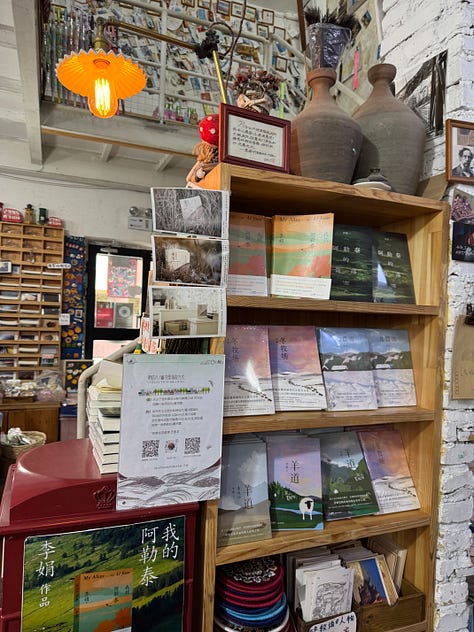


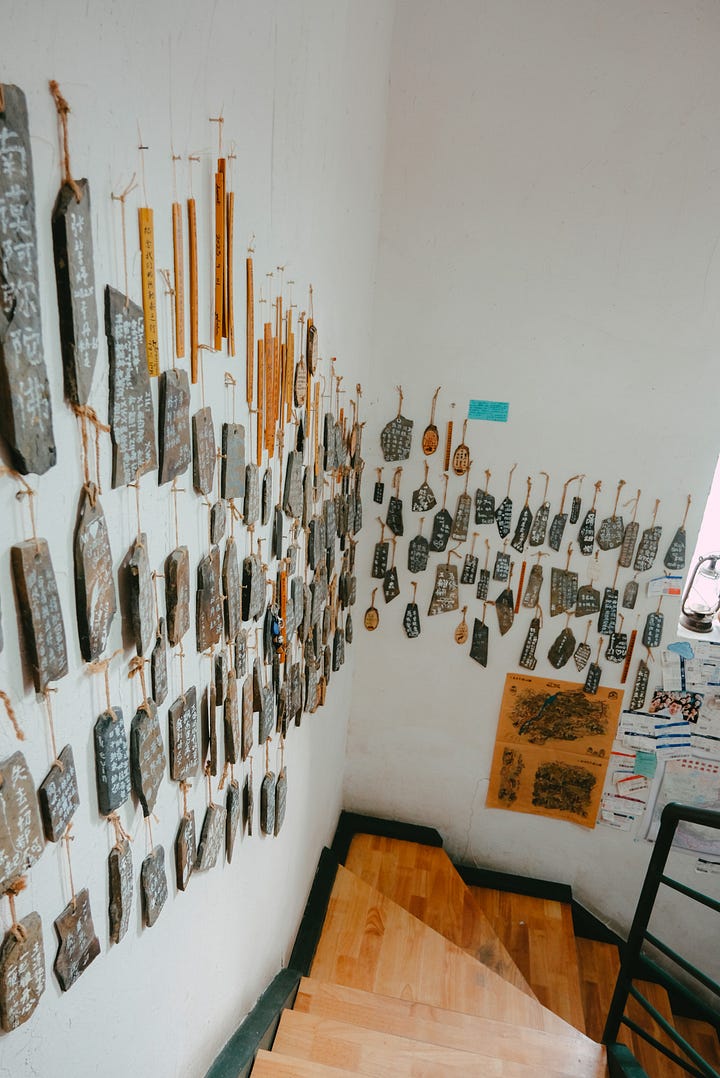

This is followed by a stop at a town modeled after small-town Europe. There, we admire intricate paintings crafted from tiny gemstones and purchase some "precious stone soap.”
For lunch, Brother Long brings us to a breakfast shop run by a Kazakh lady, which is still open at 3 o’clock luckily.
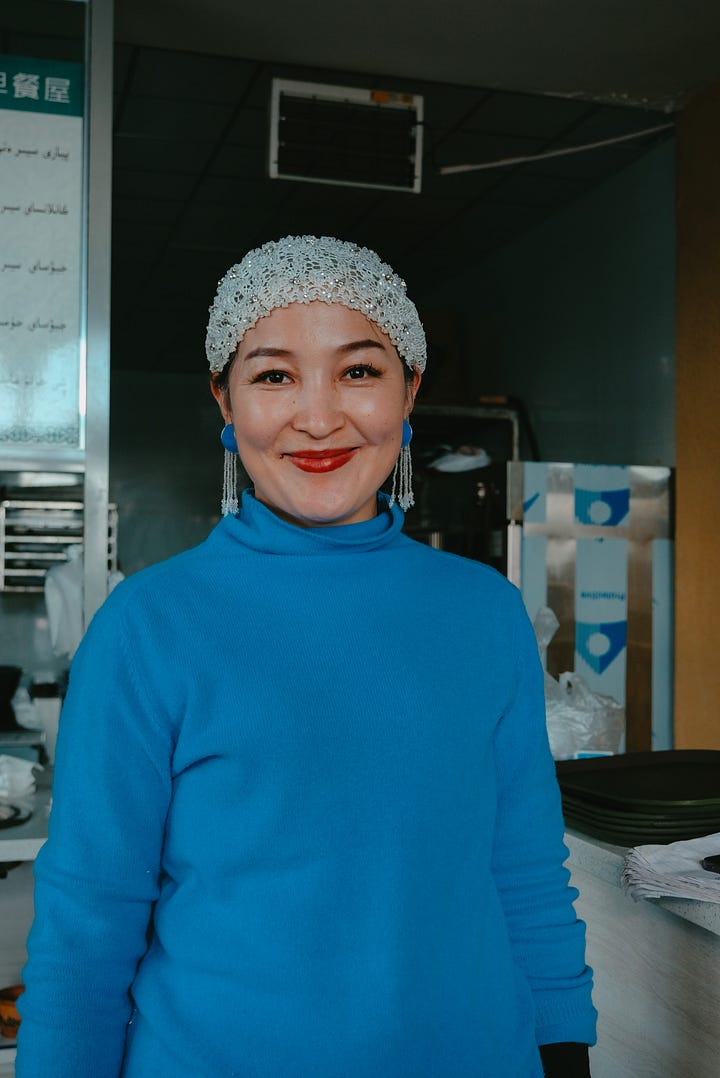
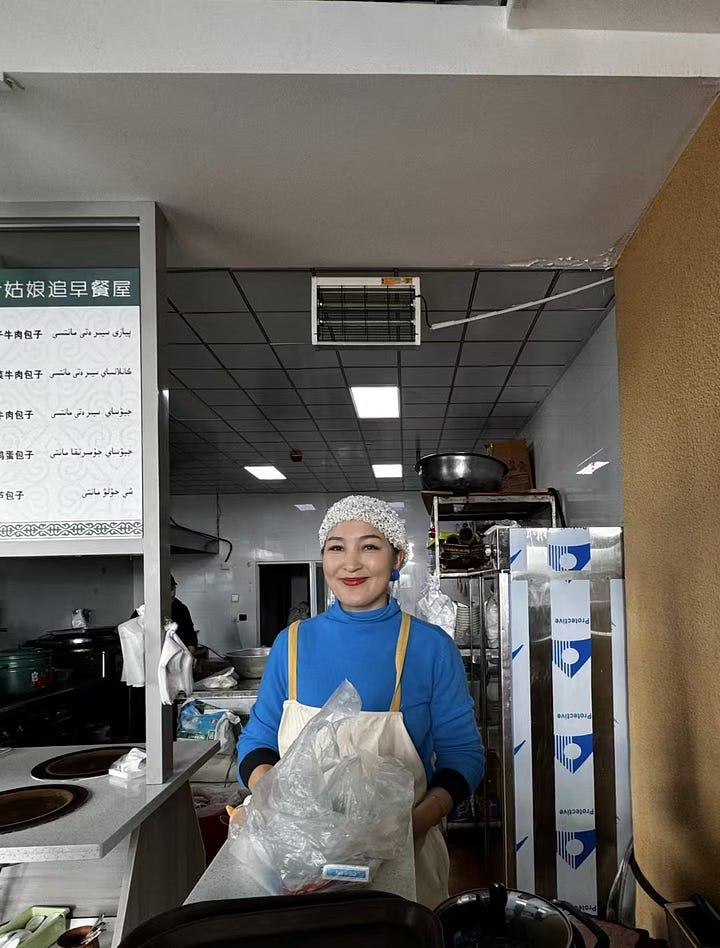
The cabbage, pork, potato, and spicy egg dishes are tasty. We also order two plates of fluffy fried dough called boortsog 包尔萨克 paired with homemade strawberry jam, which was surprisingly addictive, and tasted like the youtiao back home. The only thing we didn’t enjoy was the salty milk tea!

We also take a quick stroll through the serene White Birch Forest Park (白桦林公园).
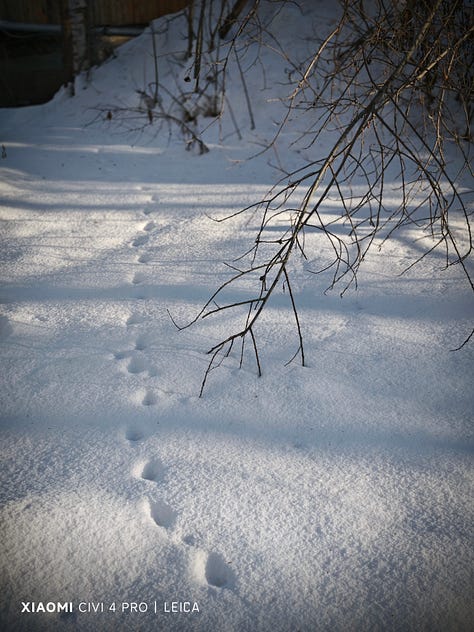
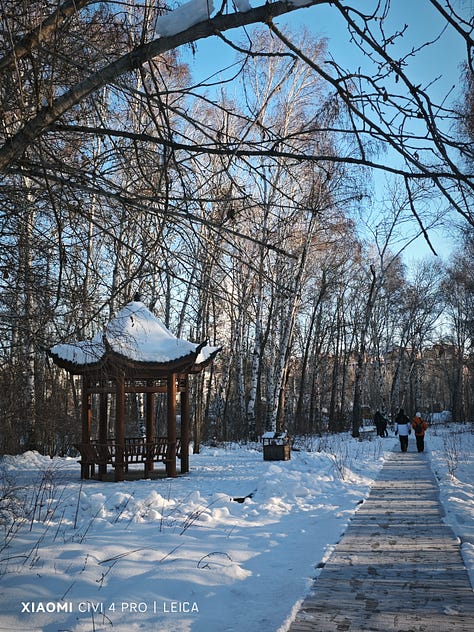
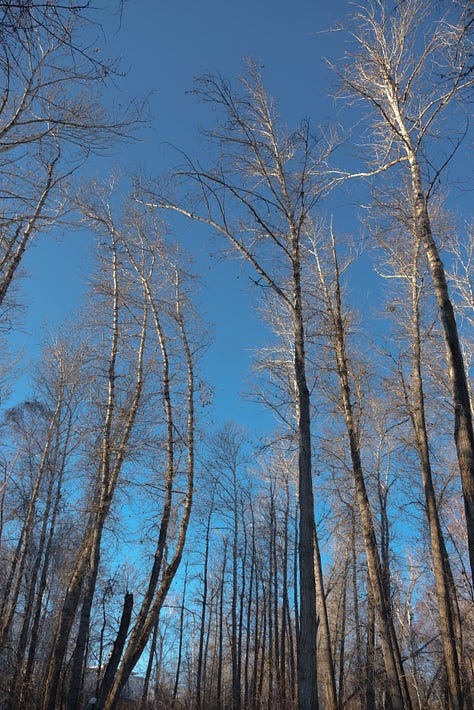
We drive for another hour to Burqin City (布尔津) and check into the Burqin Wenshan Guesthouse (布尔津闻山民宿), a stylish Morocco-inspired hotel. My younger sis and I amuse ourselves by instructing the Baidu-owned smart speaker, Xiaodu, to assist us in the room. It proves more responsive than Siri and offers far greater functionality, handling tasks like closing the curtains, setting the alarm, and turning off the lights with ease. We pepper it with all sorts of questions ranging from inane to existential: “Who invented you?” “Do you love us?” “Will you take over the world?”

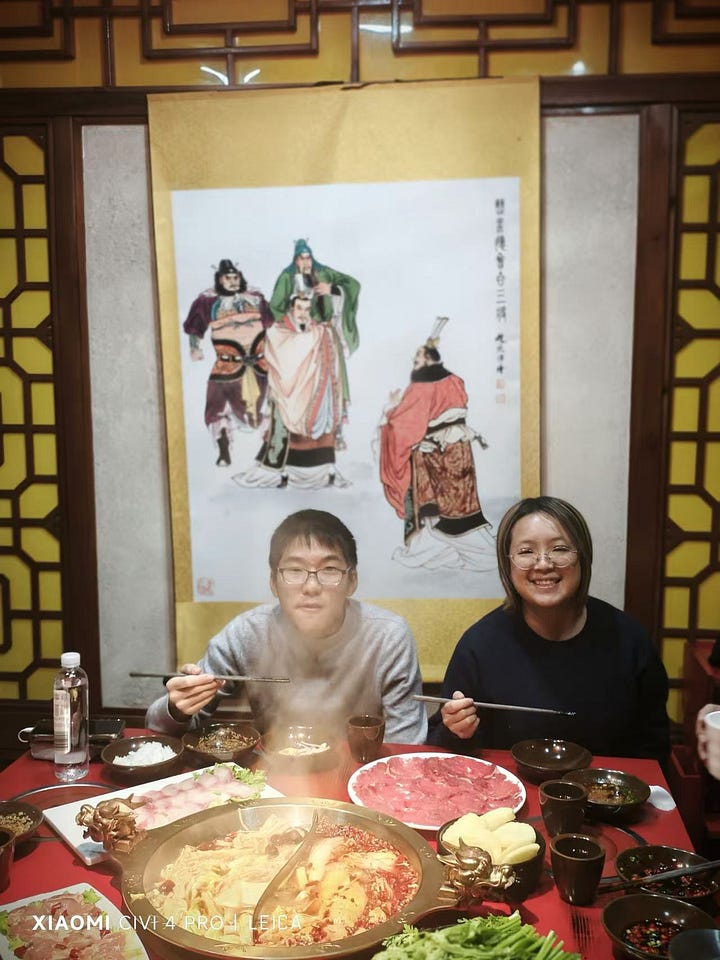

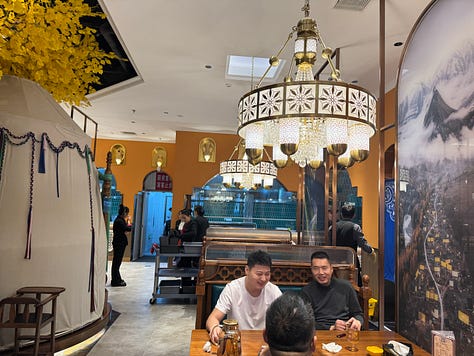

You’ll also find that the food here comes in enormous portions. One dinner, we ordered a hotpot meal meant for two people, but even with all five of us, we couldn’t finish it!
Four days in the Fairytale Village of Hemu (禾木)
From Burqin, we travel four hours to the famed Hemu Village. We are entering real snow country now. The drive takes us through winding roads and snow-dusted mountains coated with a smattering of perfectly geometric pine trees.

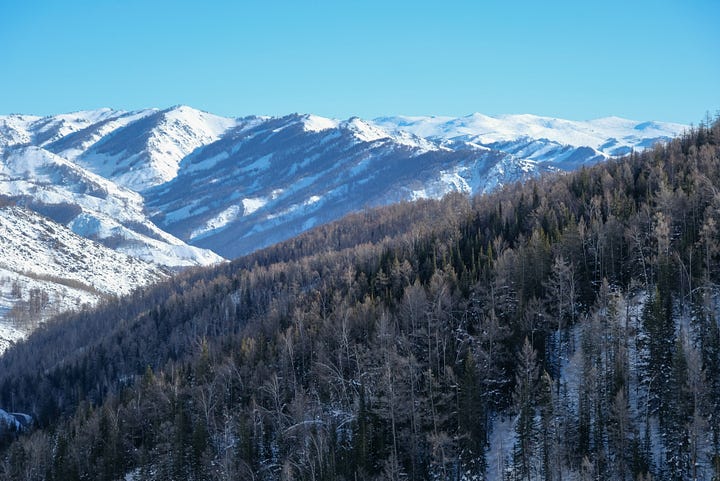
The snow is so bright that we don sunglasses to shield our eyes from the glare, and every time we wind down the window, the wind tugs at the steering wheel. Elsewhere, drivers start putting chains on their wheels to navigate the icy roads.
Hemu is everything I dreamed of, and more, all blue skies and snow-capped peaks.
Known for its fairytale-esque villages that are among the most beautiful in China, a few hundred wooden cabins —crafted from Altai timber — sit low in the valley. We stay at the charming Hemu Century-Old House (禾木百年老屋). Surrounding Hemu Village are lush mountains and a vast expanse of birch forest that covers the mountain slopes. The birch trees change colors with the shifting seasons, draped with green in summer that morph into a golden sea in autumn.
Being a tropical creature, I had never once cared for winter —until now. Confronted with such glacial beauty, I would gladly subject myself to intolerable temperatures for a fleeting attempt to freeze these moments with my camera. (Pun intended).
We spent the afternoon exploring the riverside.
At sunrise, we brave the day’s coldest temperatures and struggle up the hill. -30 degrees Celsius seems like an impossible reality. Despite being swathed in many layers and padded with heat packs, my exposed face throbs from the biting cold, and I briefly wonder if I’ll get frostbite, because my feet feel completely frozen. Strands of my hair turn crusty with ice, and every breath forms a frosty film on my glasses, rendering my vision almost useless.
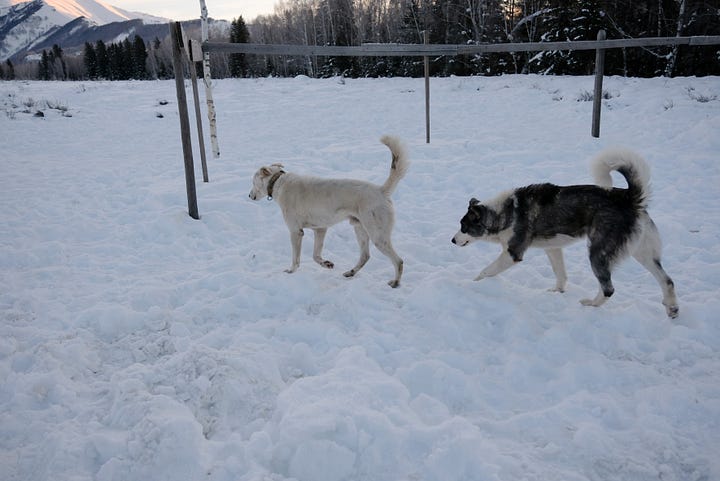

At the top, we are rewarded for our discomfort when the first rays of sunlight that glint off the mountains and set Hemu Village aglow. Alas, my camera goes berserk. The display indicates the battery has gone flat. Upon clicking the shutter, the camera shudders and reacts in slow motion. I resign myself to taking photos with my phone.

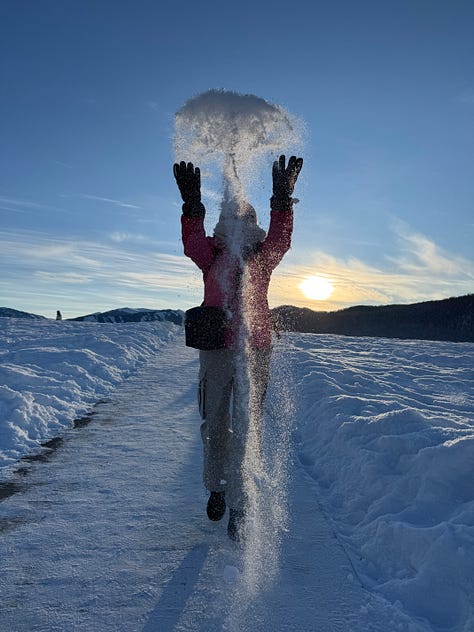

Having trawled through Xiaohongshu (小红书), I’d discovered how strong the social media game is there. Unlike my practical yellow parka from Nepal, the girls here are dressed for aesthetics rather than the cold—traditional outfits or wildly inappropriate winter getups: mini-skirts, dainty pastels, and perfectly coordinated white and turquoise scarves and jackets that mirror the blue sky. I stomp past overly cheerful girls performing cutesy dances for Douyin or striking poses with a giant Bernese mountain dog and an elegant golden doodle, both seemingly brought out as props for photoshoots.
Still, my social media research has proven useful. We’ve come prepared with a thermos of boiling water, which we toss into the air in a dramatic arc. The water instantly transforms into a misty cloud that floats away into the distance. Nearby, a herd of stocky horses with frost-encrusted manes stands motionless in the biting cold, waiting to ferry tourists on scenic rides.
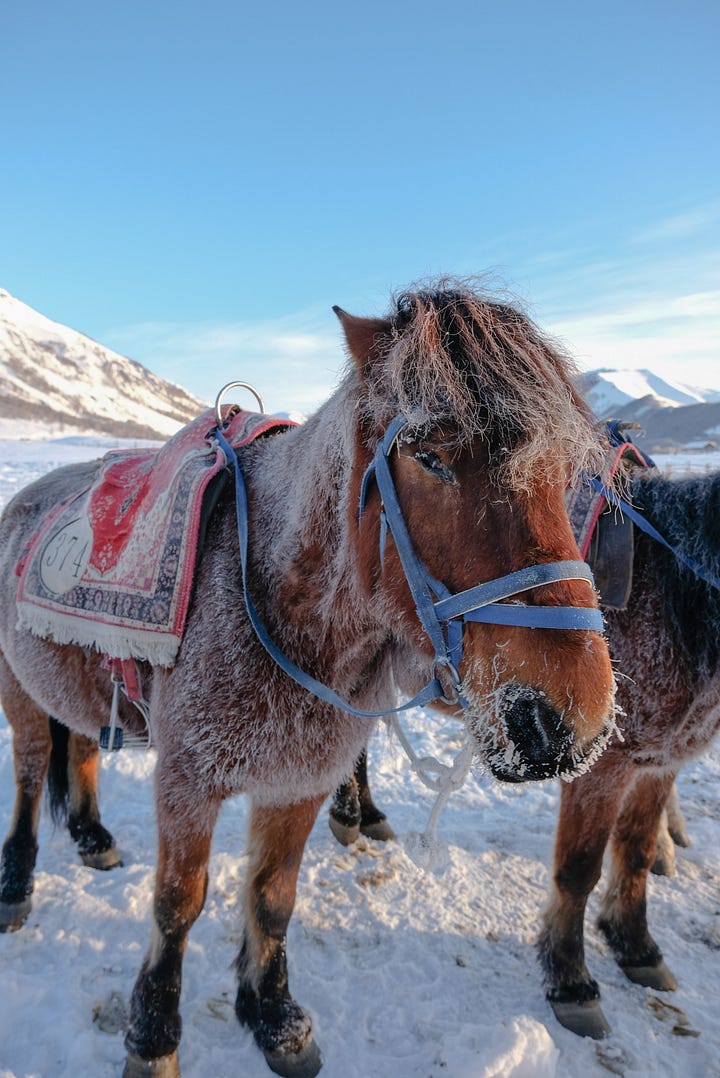

The Ice/Snow Appreciation Series
Being here, I noticed how ice and snow take on so many forms. So many shades of blue that I can never tire of looking at, and never thought could exist. Snow that’s so deep it swallows your legs. Or fine powder that is perfect for throwing in the air like a shower of magic dust. Tiny, snowflakes land quietly in my hair, while others pelt down heavily, as large and solid as mantou buns.
In the water, it thickens slowly, layer upon intricate layer, like coral built over time.

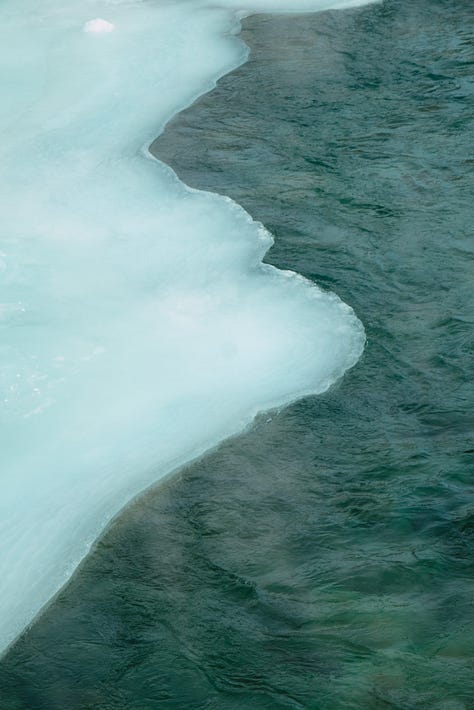
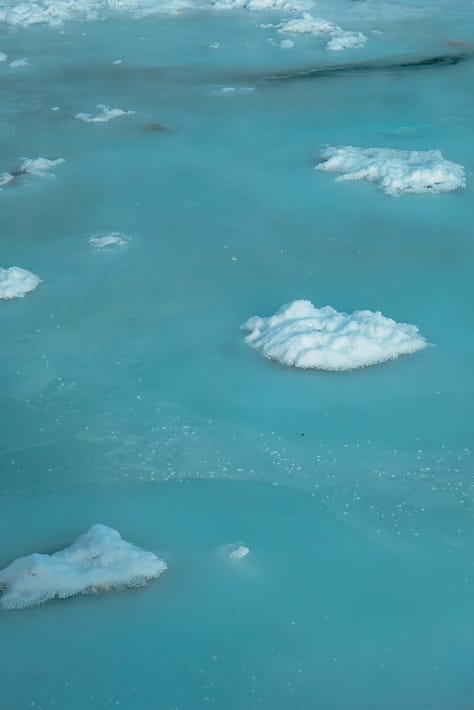
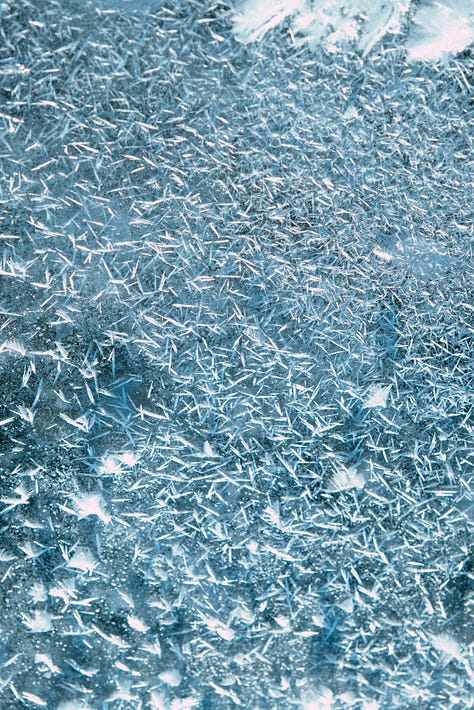
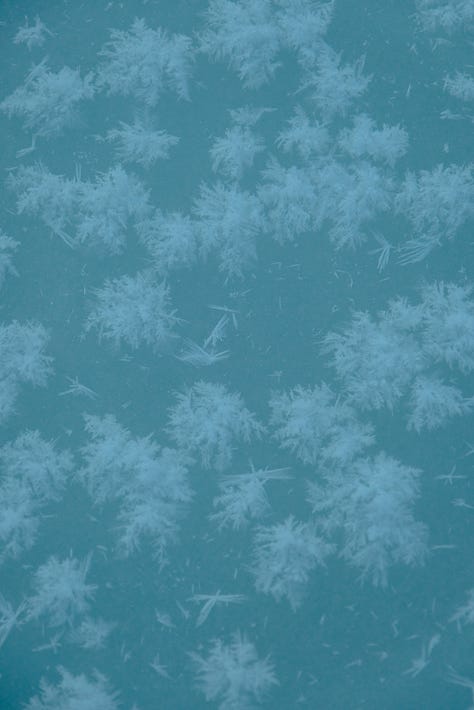

Ski Central at Jinkepulin Ski Resort Hemu (禾木吉克普林滑雪场)
Billed as among Asia’s largest ski resorts, Jinkepulin Ski Resort Hemu (禾木吉克普林滑雪场) attracts serious powder hounds. Thanks to its long snow season, good snow quality and diverse terrain, Xinjiang has gained enormous sporting popularity in recent years, attracting tens of thousands of skiing enthusiasts. Three years of skiing at Changbai Mountains have given my siblings the confidence to tackle the moderate to advanced slopes, so off they go.
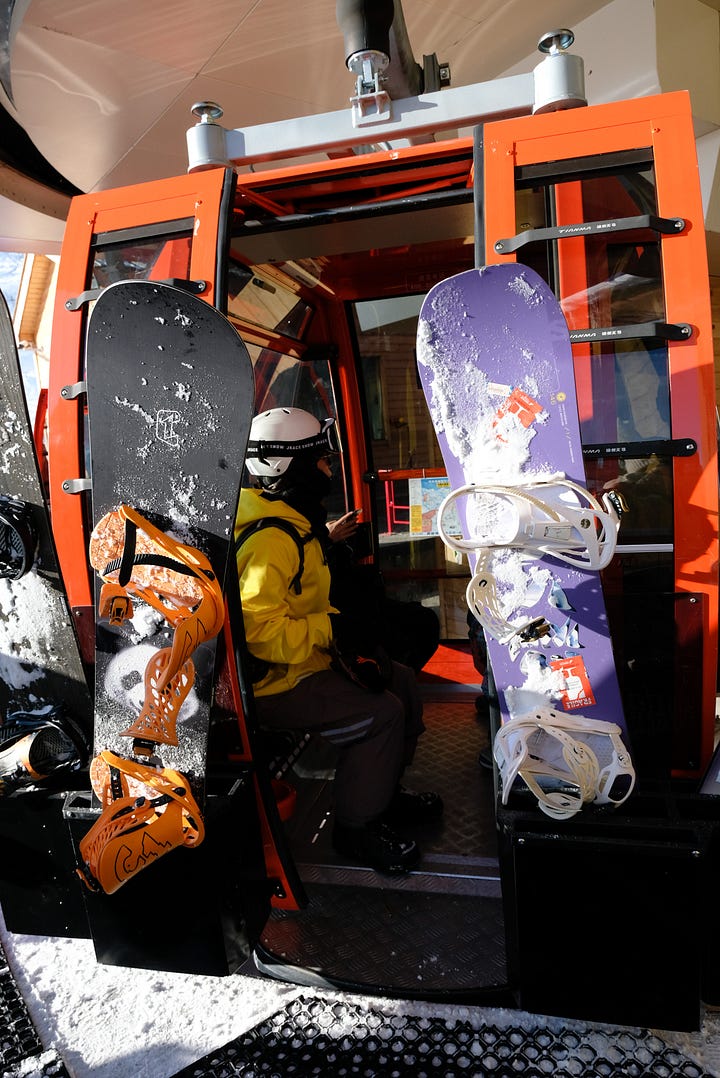

To pass the time, Mum and I hop on a gondola for a 30-minute journey ascending 2,800 meters of steep mountain terrain. From above, we get a bird’s-eye view of hardcore skiers and snowboarders carving lines through the snow with fancy jumps and turns.
Some venture beyond the safety zones, drawn to the thrill of skiing in the untamed 野雪 (wild snow). It’s not peak season yet—January sees the heaviest crowds—so the slopes feel pleasantly uncrowded. The relaxed, carefree vibes of the place is a welcome change from usual tourist hotspots, and I notice the majority of visitors here are domestic tourists.
At the summit, we’re greeted by an endless sea of snow monoliths stretching toward Mongolia, Kazakhstan, and Russia. Mum busies herself capturing the panoramic landscapes with her drone, while I sip on some coconut matcha.
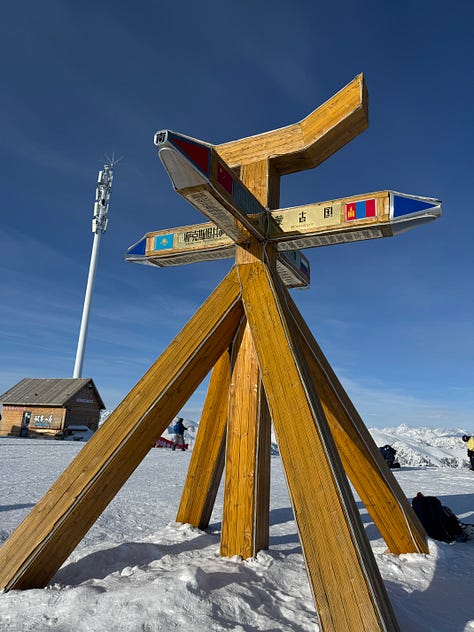
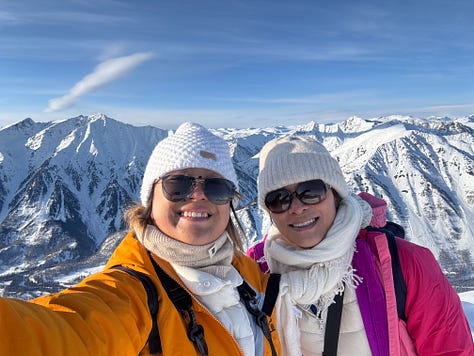
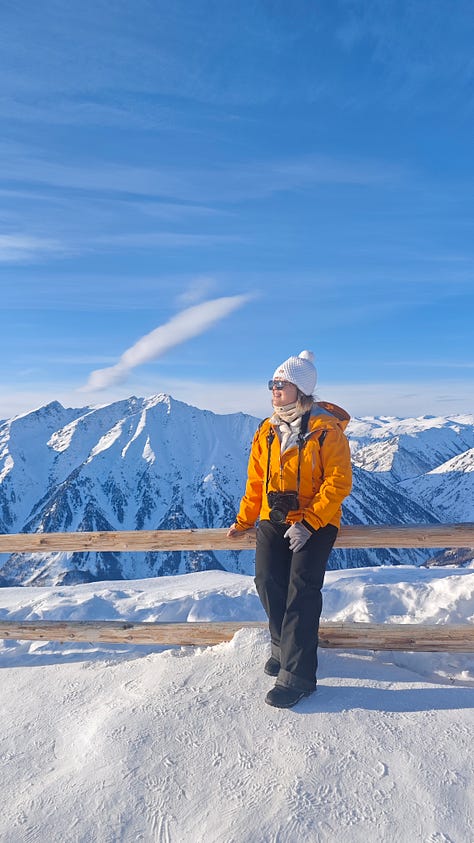
Brother Long, our original guide, has left in a hurry for a tour guide examination and entrusted us to a younger driver, Zhao. He takes us into the depths of a wintry forest in search of an old Tuvan man who lives there. Hemu is also known being one of the last few areas for the Tuvan ethnic minority.
The forest feels wilder here, untouched by tourists. “This is protected land,” Zhao explains. “No one is allowed to cut down or remove the trees.” As we trudge through the snow, he points out fox and rabbit tracks. In the distance, we hear the boom of snow cannons fired into the sky— meant to accelerate snowfall so that it makes the area more attractive to visitors. Snow blankets the trees, resembling whipped cream or delicate meringue toppings, and we take delight in falling backward into the drifts to make snow angels.
When the cold becomes too much to bear, we retreat to Hemu’s cosy cafes, already kitted out in Christmas decorations, like a cafe by the river and popular Ge Cafe. We indulge in pistachio basque cheesecake and chocolate chiffon cake, sipping on hazelnut lattes and matcha.

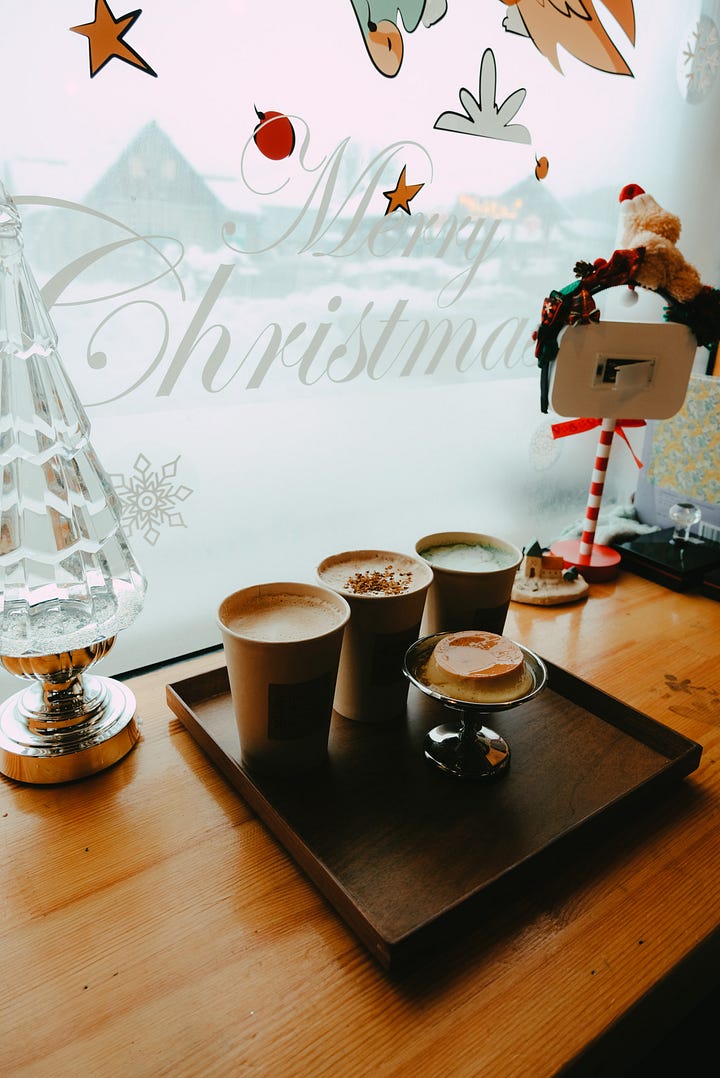

Being here, my heart feels still and content, my mind unoccupied by anything beyond the immediate – the simple pleasure of a hotpot or instant noodles in our cosy cabin, sprawling on the bed with a book, feeding leftover bones to the friendly dogs, giving a good scratch massage to a horse standing out in the cold.
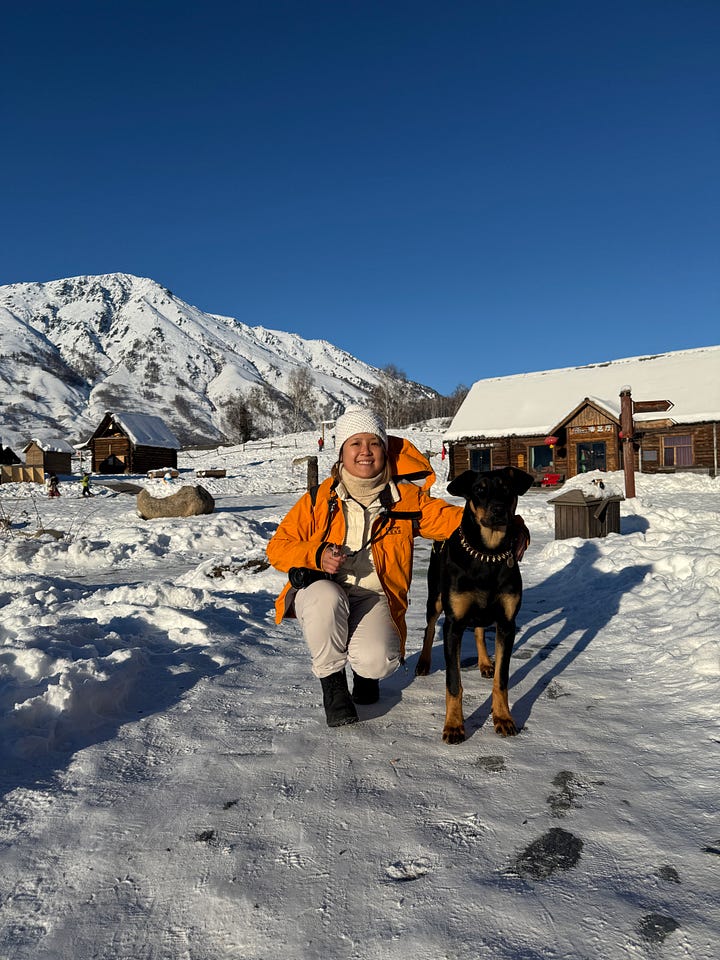

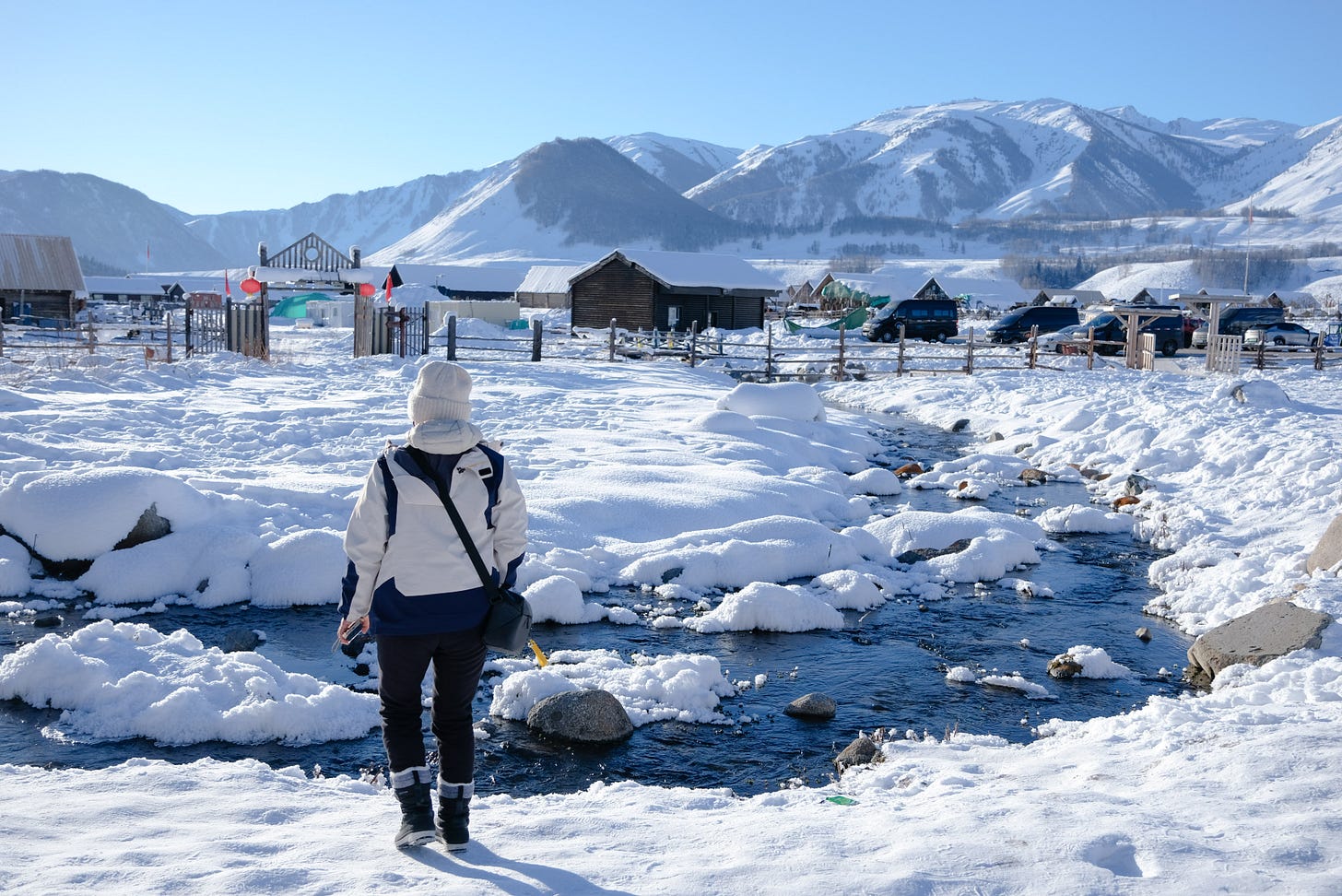
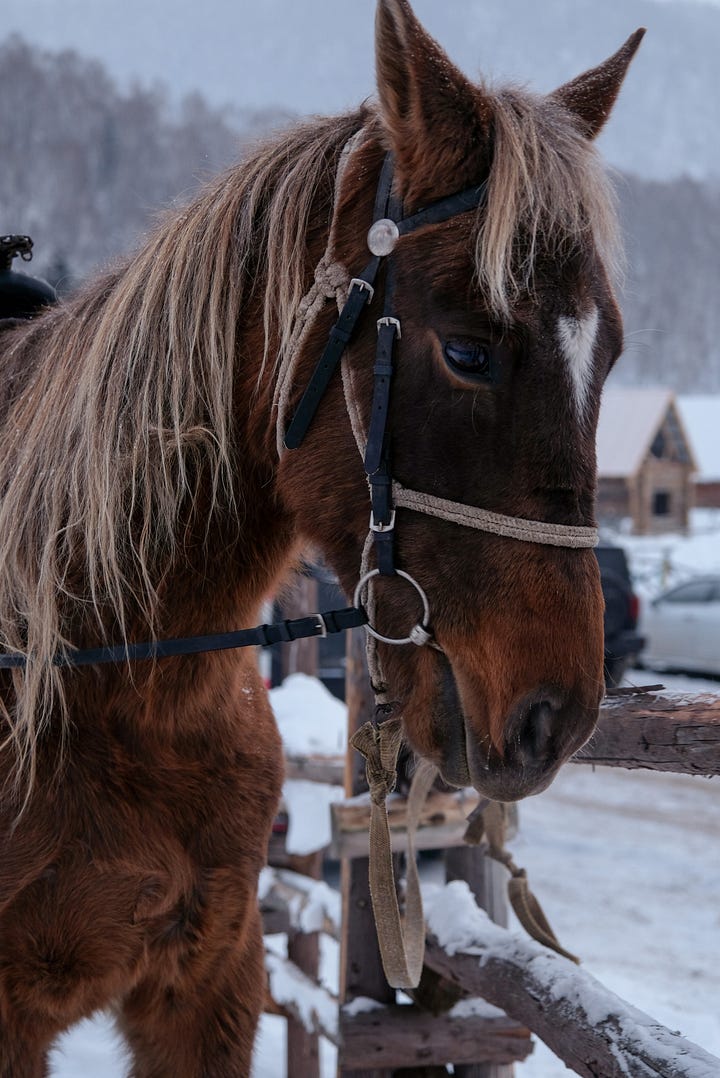
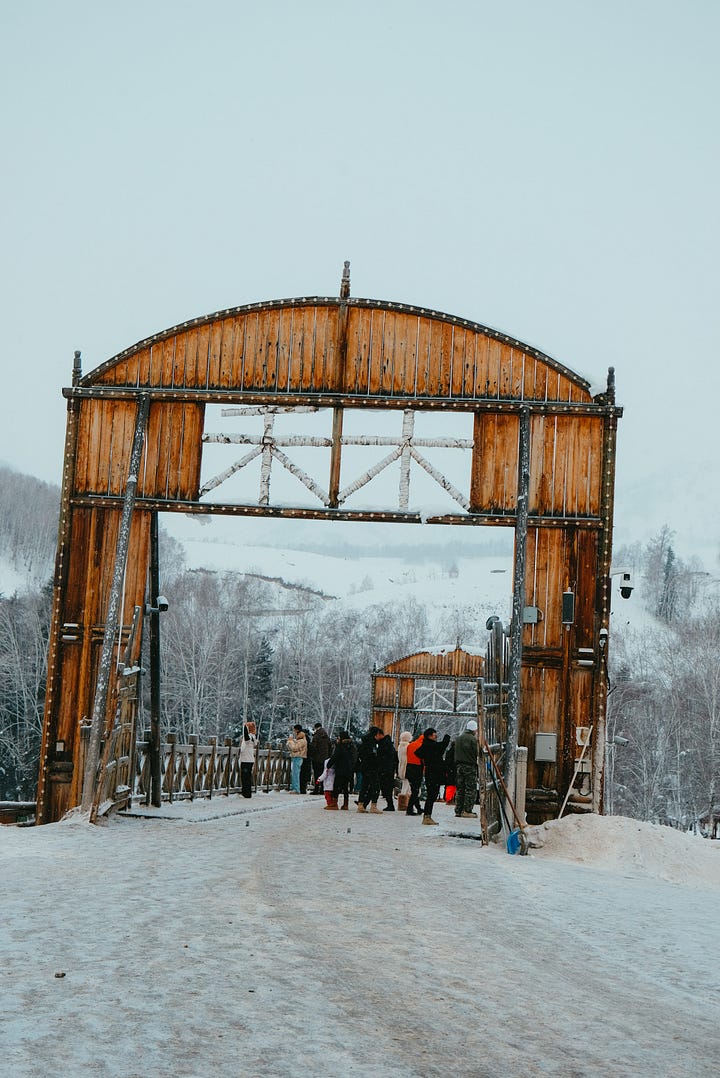
On our last evening in Hemu, my siblings and I seize some snow tyres and head over to the nearby hill. Hurtling down the slopes in the crisp air, we laugh in delight as the snow sprays around us.
Kanas Old Village (喀纳斯老村) and Urhe Devil City (乌尔禾魔鬼城 )
We spend a day tracing the crescent-shaped Kanas River, stopping at scenic points like Moon Bay, Immortal Bay and Crouching Dragon Bay.
On the mountain road, we spot a bushy-tailed fox in the forest, its gaze fixed intently on us. Sadly, we have already given most of our leftover bones to the dogs. The lake greets us at the river’s end—a haunting expanse of ice, water, and mist rising from its frigid depths.
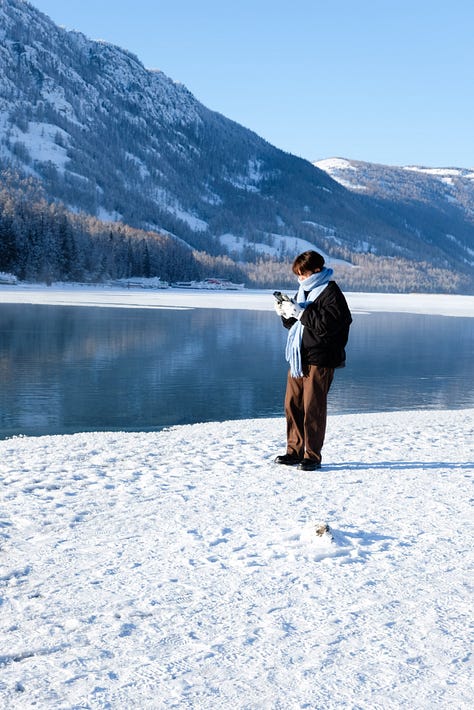
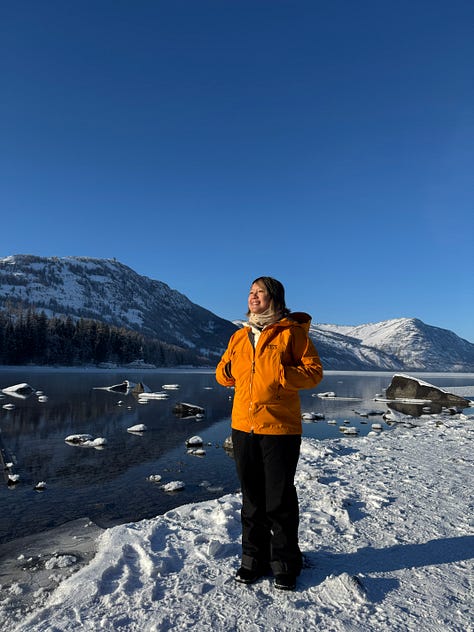
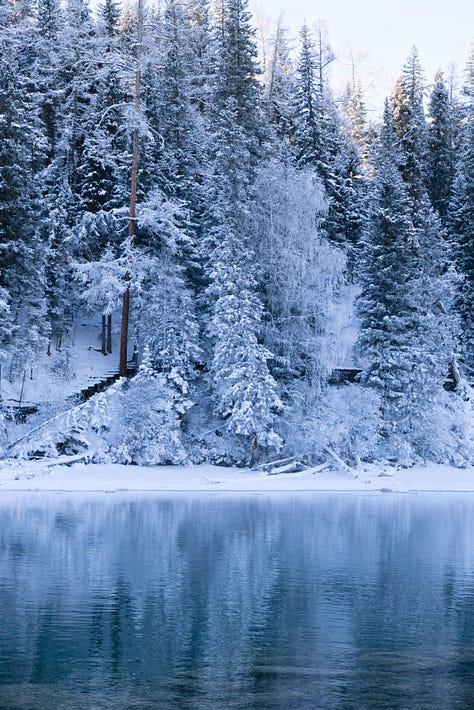
The next morning, we brave the biting chill of -30°C, again, just to catch the morning fog and the gradual sunrise.
The trees stand like silent sentries, forming a battalion along the water’s edge. Beneath my feet, ice crystals glitter in intricate geometric patterns.

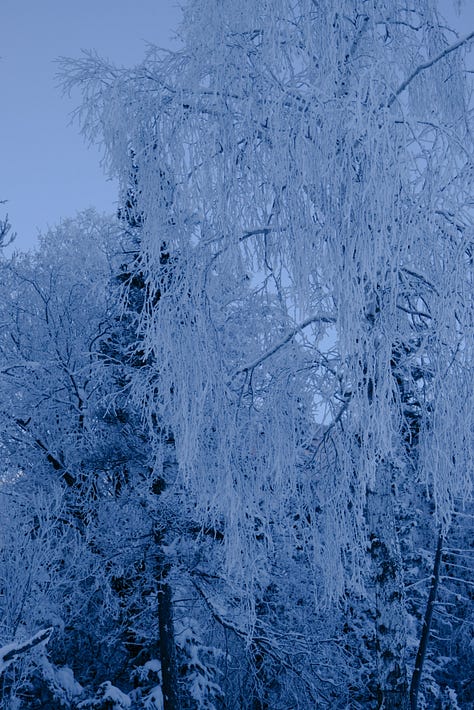

It is so cold that our drone, after a brief flight, sputters out of battery and performs a little somersault in protest before landing. Twenty minutes is all we can endure before dashing back to the car to thaw frozen fingers and toes.
Afterward, we embark on another long drive to Urhe Devil City (乌尔禾魔鬼城). The area’s moniker, "Devil City," comes from the eerie howling winds that sweep across the desolate terrain, carving the rocks into surreal shapes. “Mmm, smells like wealth,” jokes Brother Zhao, alluding to the area’s oil fields and natural asphalt mines.
After the pristine whiteness of the snow, the stark, rocky landscape feels like stepping into another world. Giant rock formations looms over us, their shapes inspiring wild imaginings. As we trundle past on the tour bus, every turn reveals a new silhouette—a fortress, a ship, or a mythical creature waiting to be discovered. These fantastical formations have made the area a popular filming location, most notably for Crouching Tiger, Hidden Dragon. Walking through the barren expanse, it was easy to see why filmmakers are drawn to this otherworldly setting.
We are the very last group to leave the park. The ochre and russet hues of the rocks glowed in the late afternoon sun, casting long shadows that seem to stretch infinitely across the desert floor.
Grand Finale at Sayaram Lake (赛里木湖)
After being spoiled by the breathtaking beauty of Hemu, we thought nothing else could truly impress us (such spoilt tourists we are.) But Sayaram Lake (赛里木湖) proved us wrong. Standing before this vast expanse of water—its deepest blue framed by a wide panorama of ice-capped mountains—I felt as if we had stumbled into Antarctica. Though the lake hadn’t completely frozen over, it was still beyond beautiful.
The patches of snow resemble crème brûlée, their sugary crust cracking underfoot with a satisfying ASMR crunch. We can’t resist running through the snow, laughing as we intentionally sink into it, or slide along the layer of ice at the water’s edge. Unlike the trees in Hemu, which stand tall and proud, the trees here seem more subdued. Their dense, cropped canopies cling closely to the mountains, their deep black-green hues resembling a closely shaved haircut hugging the rugged terrain.
The lake is so big that we take two days to explore it.

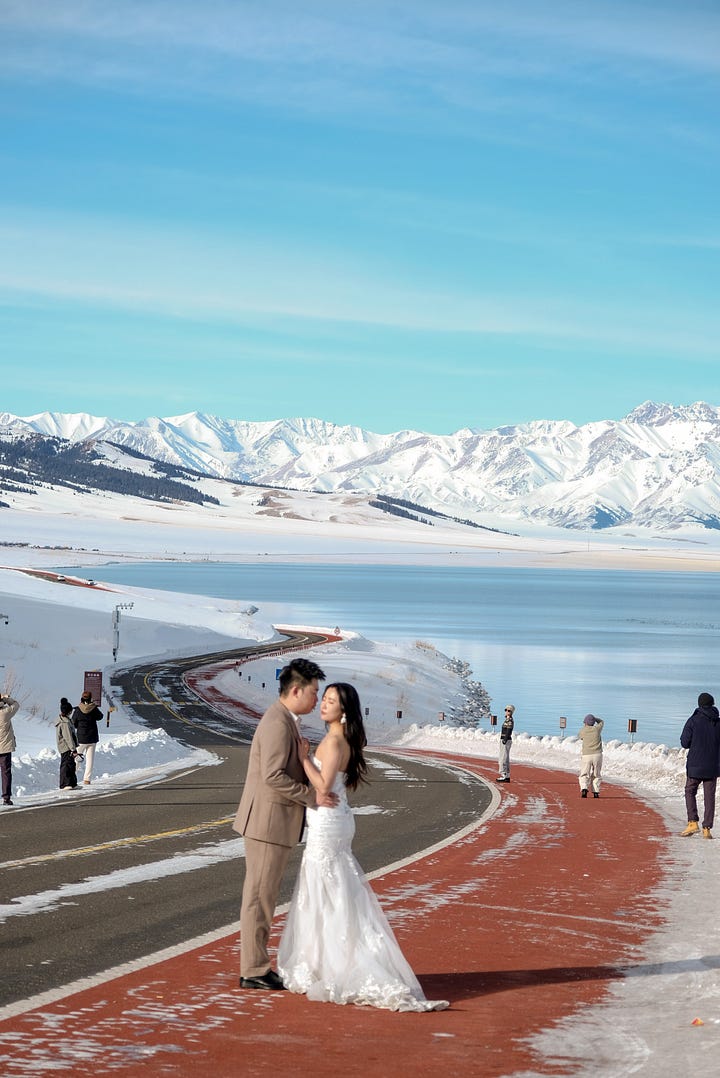
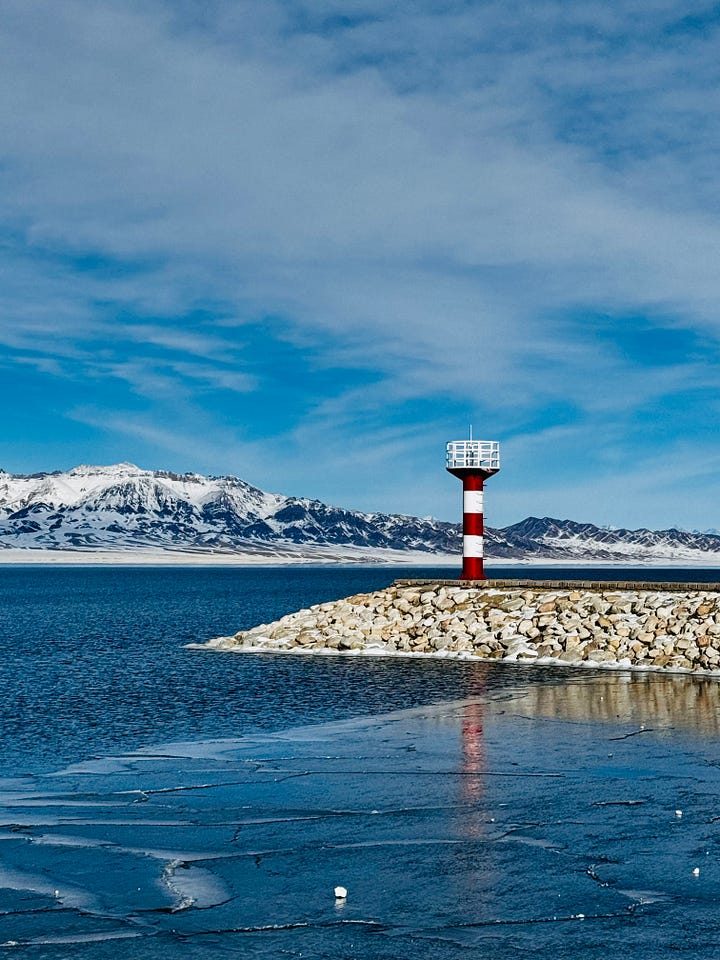

Elsewhere, we spot locals crafting elaborate ice sculptures with snow-making machines and even bringing in life-sized dinosaur figures— a clever ploy to lure more trigger-happy tourists. Swans glide gracefully and a wedding couple poses for bridal photos.
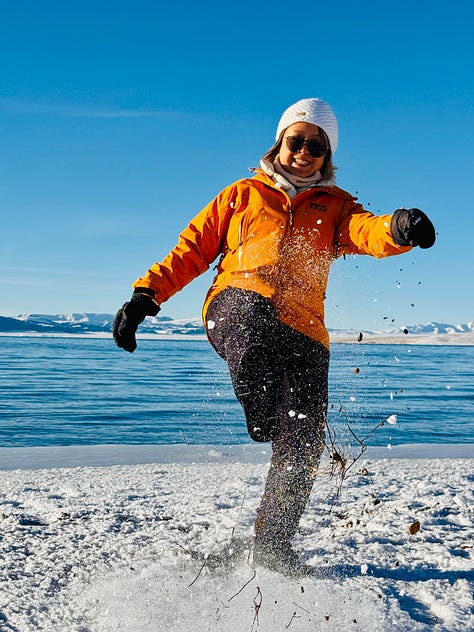
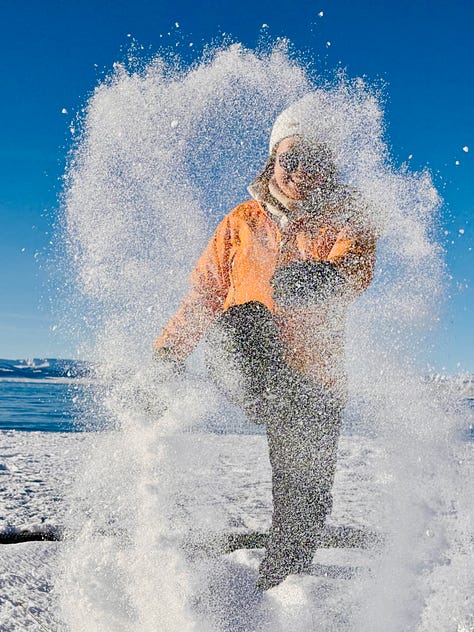

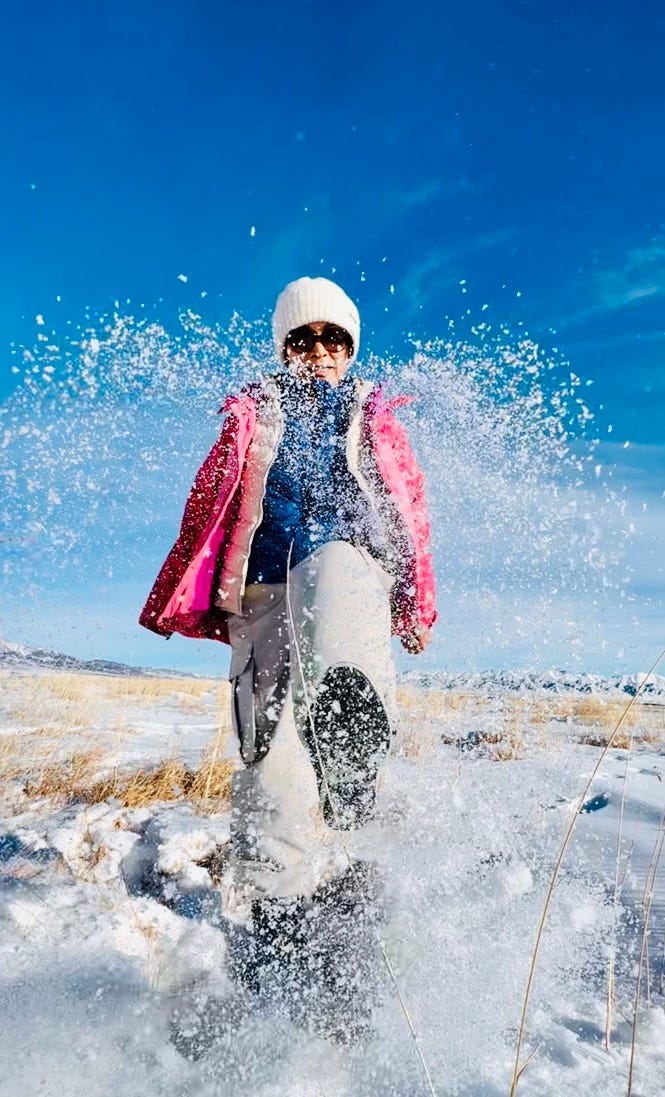
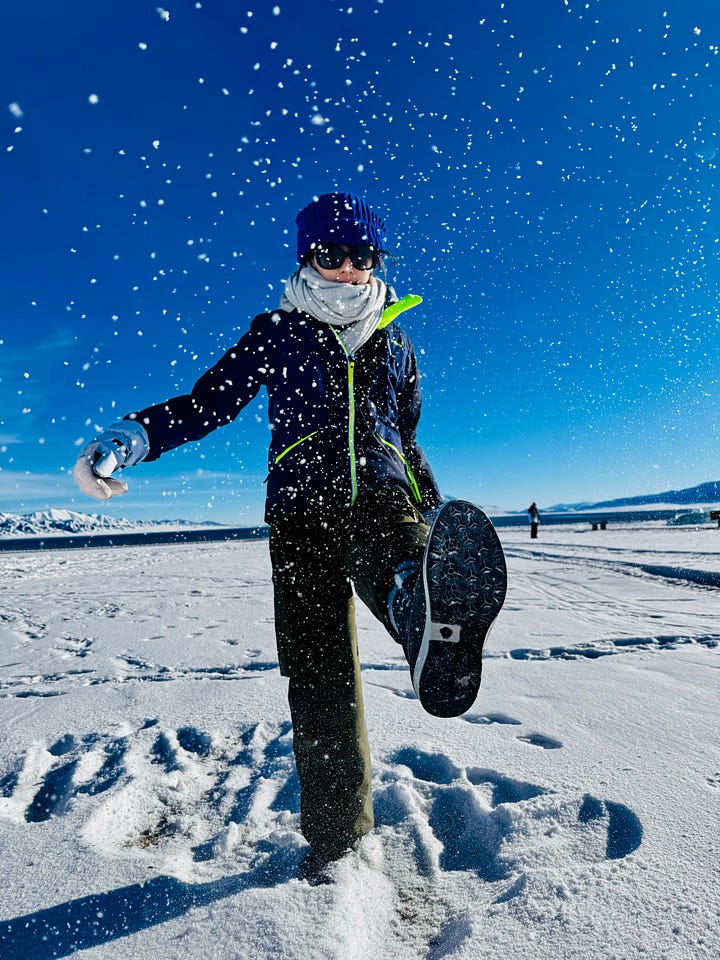
We spend the night at 温泉圣缘山酒店 famed for its hot baths, embracing the local tradition of communal soaking. In the no-frills bathhouse, naked ladies sat chatting in groups, some enjoying family time together. We join in without qualms, soaking our weary bodies in the hot water. A kindly woman scrubs us down with practiced hands, followed by a nourishing milk bath and massage.
After days surrounded by nature, it requires us to slowly ease back into city life with a visit to Tekesi Bagua City (特克). 六星街 (Liu Xing Jie) looks like it comes straight out of a storybook, and we sample yogurt topped with freshly made prune jam and sipping tea crafted by a Russian migrant who’d made this place home.
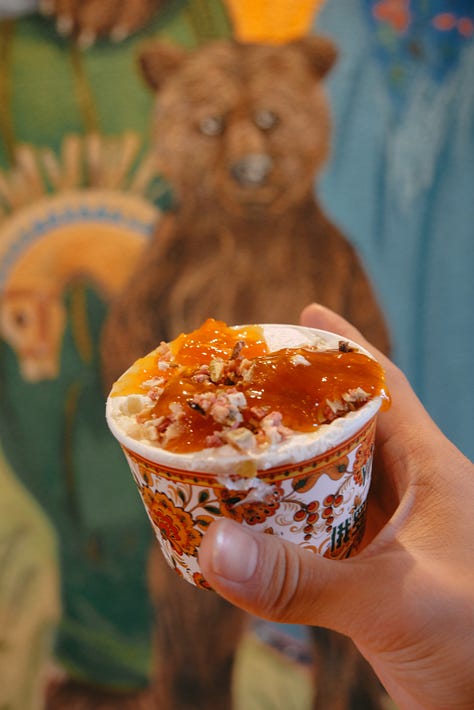


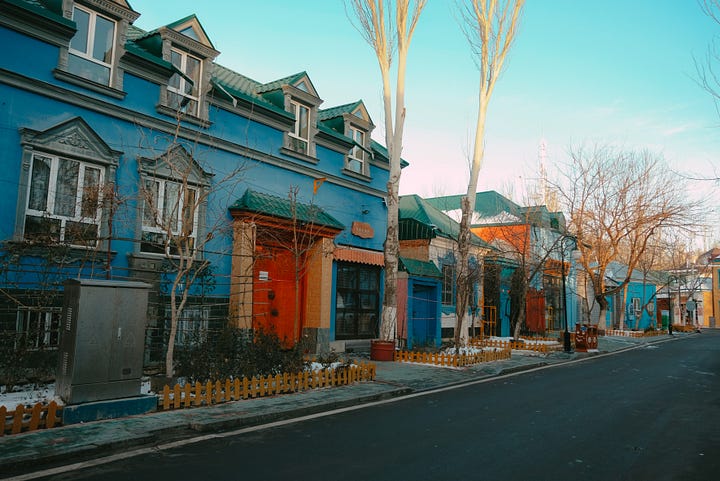
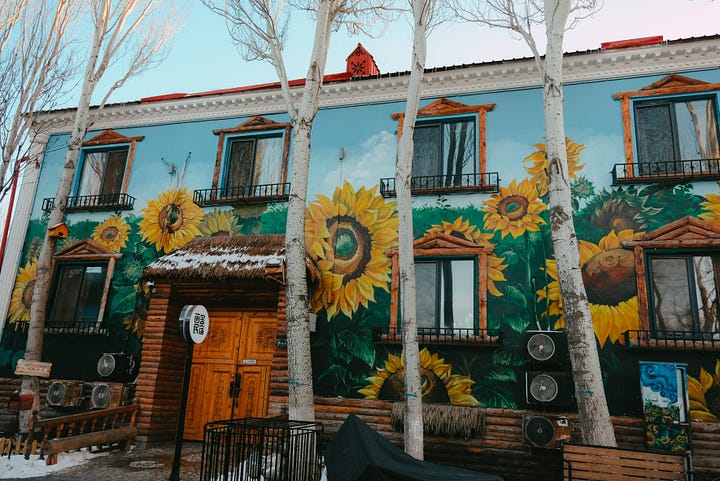
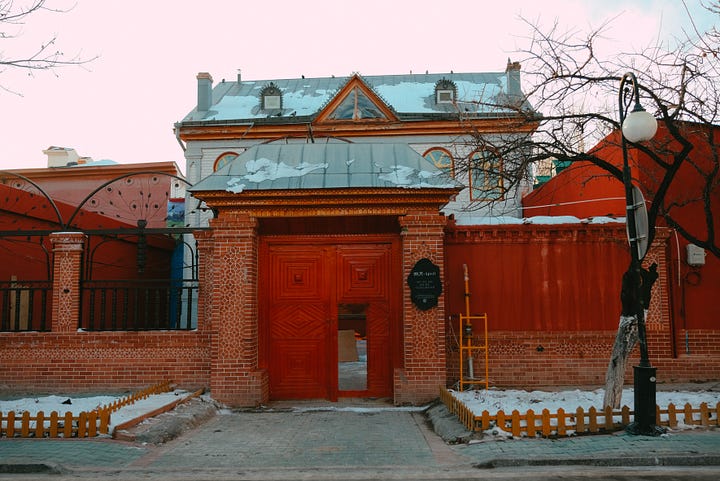
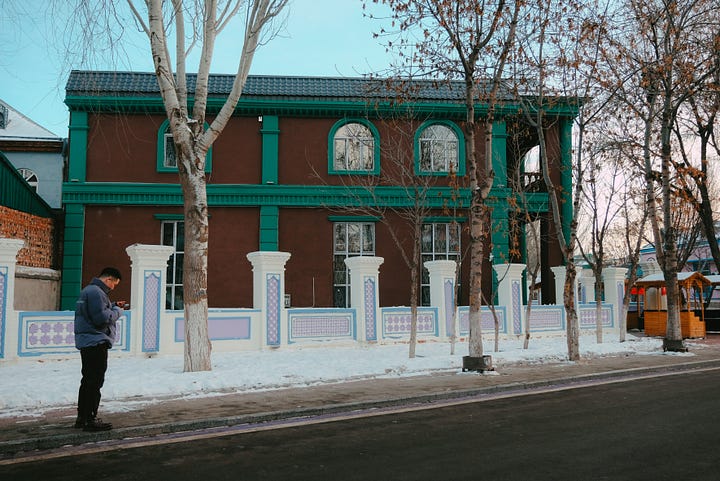
Back in the Big City
A decade on, I find myself once again in Shanghai, captivated by its glamorous façade. Unlike the raw, gritty energy of working-class Beijing, Shanghai exudes a sophisticated, techno-fizz charm, and I am well and truly won over. I love the energy of a big city, the anonymity I wear and how the air feels ripe with possibilities.
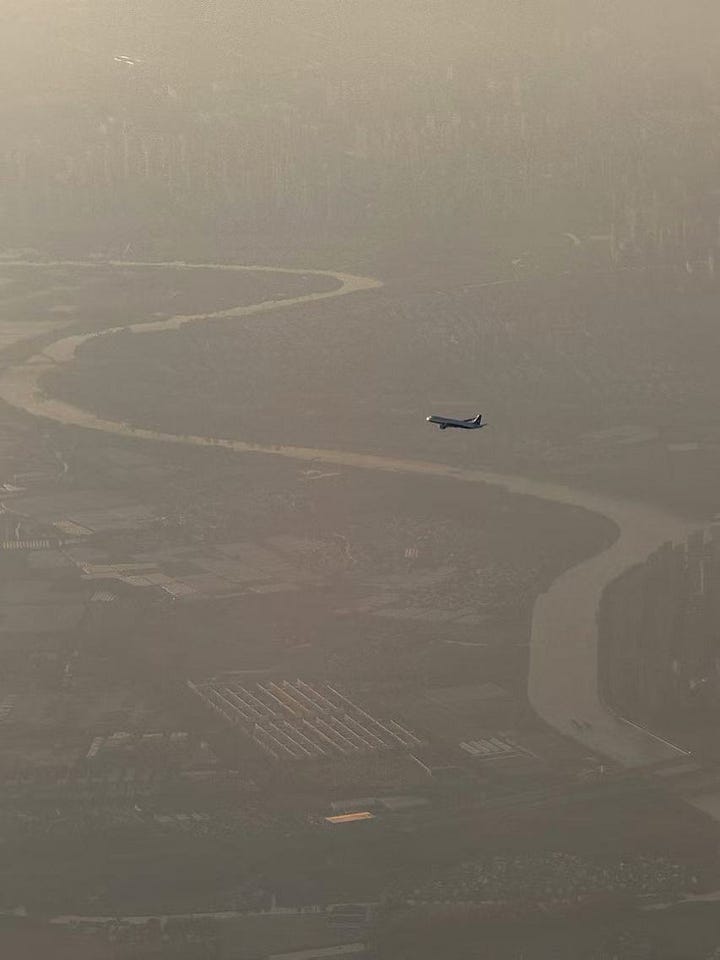
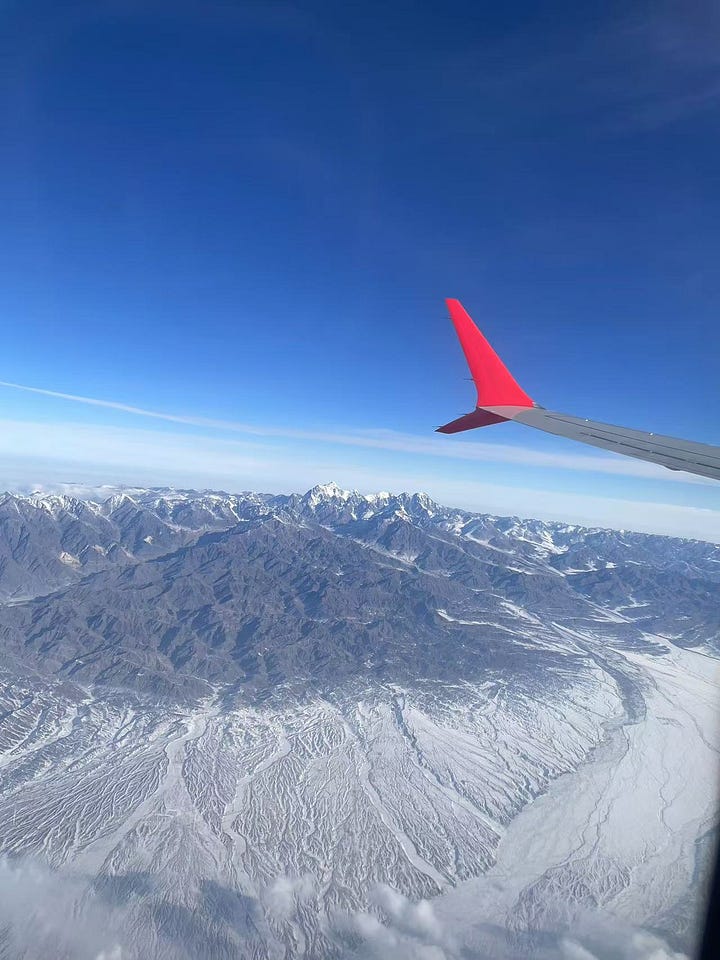
In the downtime, I pad around the quiet luxury of my hotel room (since there’s no space at my grandparents’ place), relishing the peace it offers and the thoughtful daily gift of nature-inspired poems left by the staff.
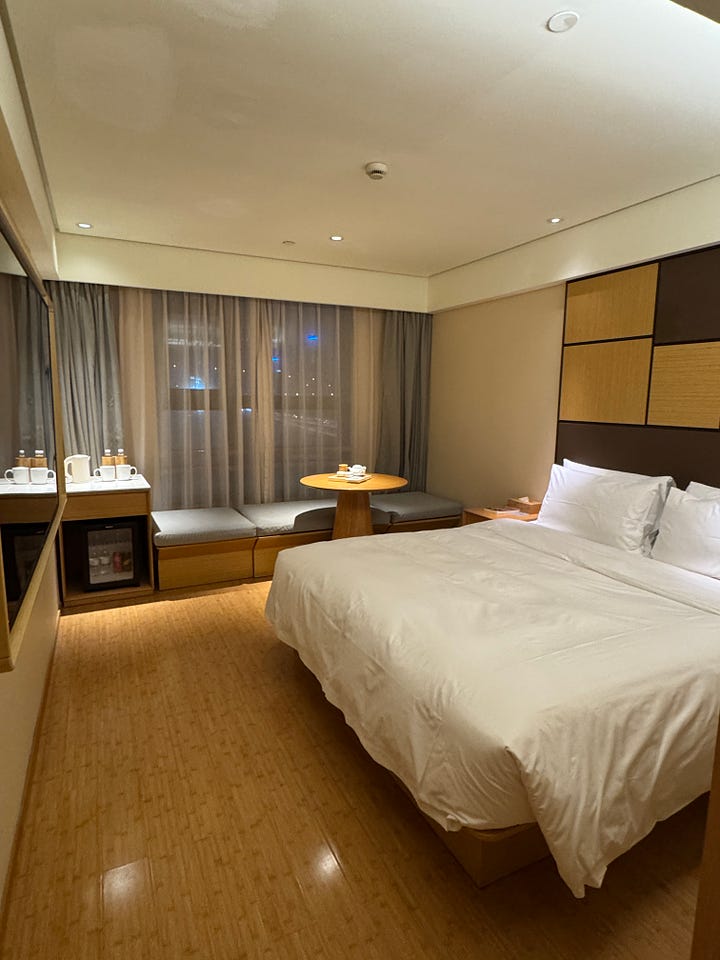

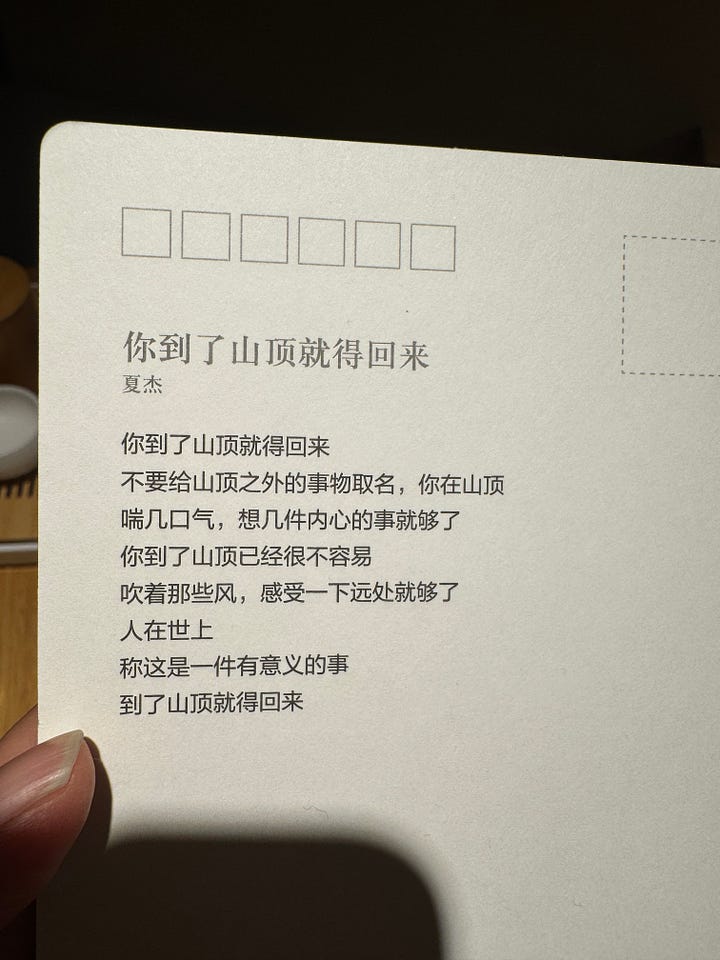
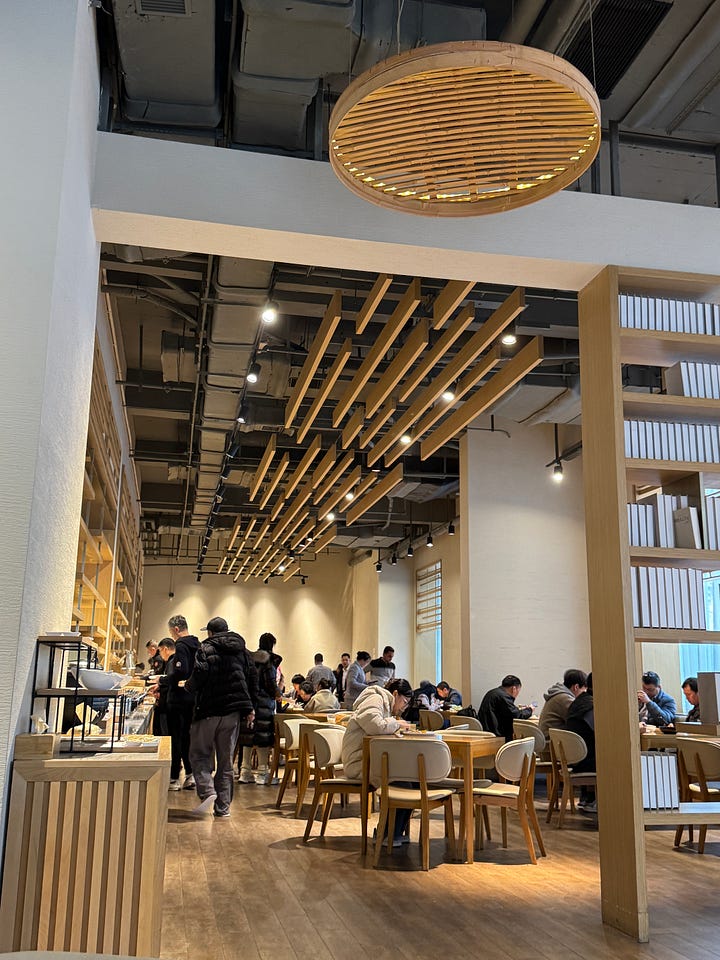
Yet, amidst the futuristic cityscape , I can’t help but feel like a country bumpkin, fumbling with its labyrinth of digital apps and insular systems. My mother's friend pulls up in a futuristic electric car, equipped with features like a massage function, self-driving capabilities, self-parking, and a television.
My siblings, for whom Shanghai is like a second home, show me a whirlwind version of their city. By bike, we cover an extraordinary amount of ground, starting at Waipo’s place and heading to Man Man, our lunch spot. It’s my first time exploring Shanghai by bike, and it requires nerves of steel. Motorbikes weave recklessly around me, cars and buses cut into bike lanes, and pedestrians dart out unpredictably. Meanwhile, the kids pedal at full speed, feeding off the city’s frenetic energy.

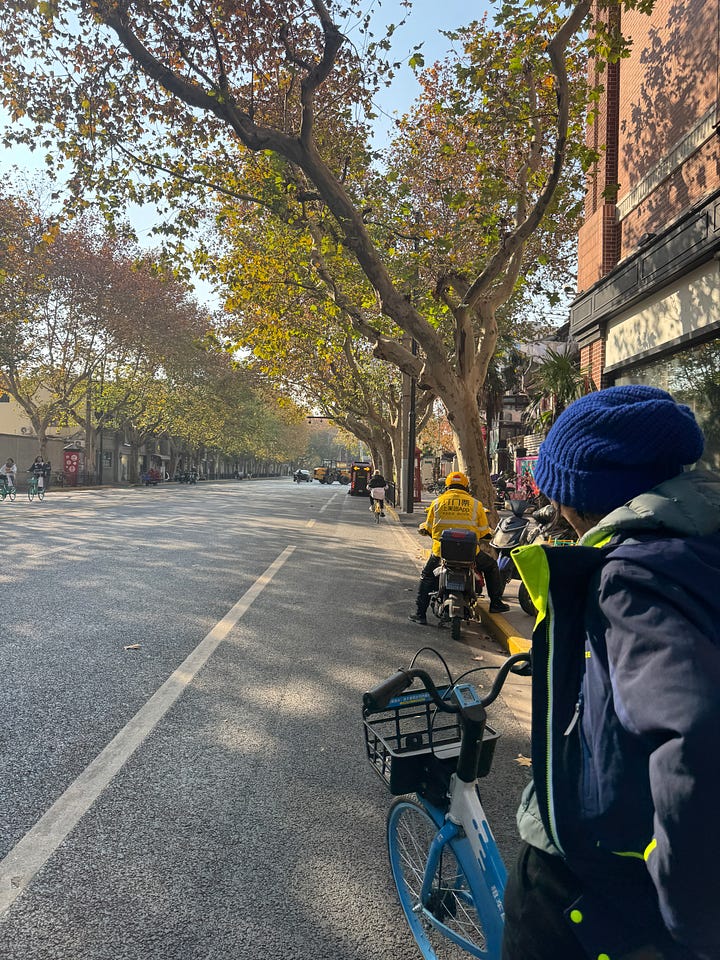

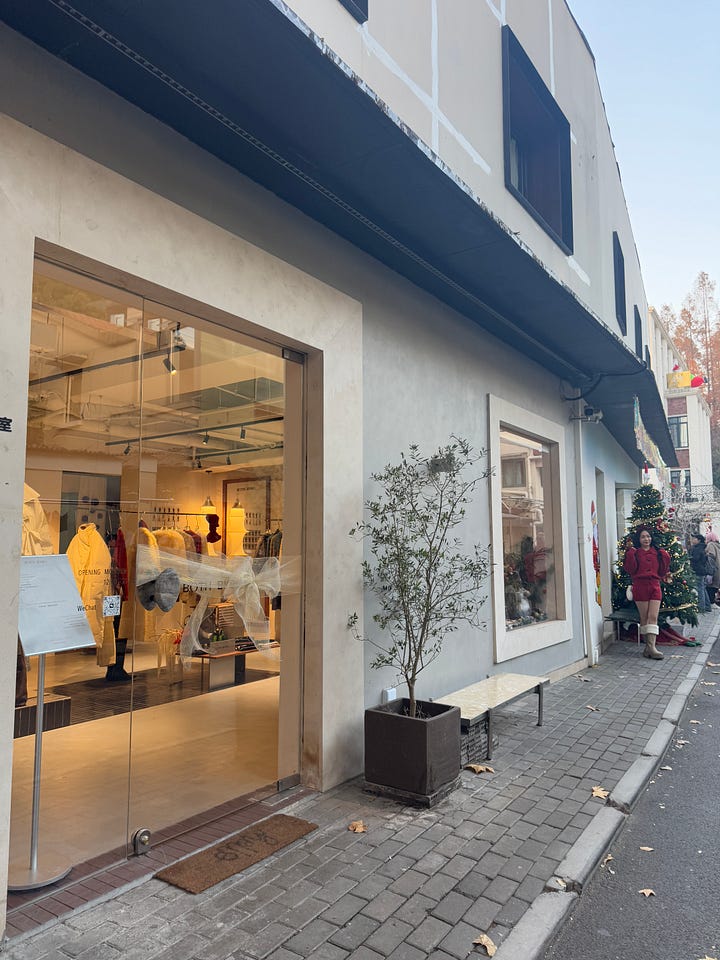
We cycle through some of Shanghai’s prettiest streets, flanked by autumnal foliage.
On Anfu Lu, a boutique-lined haven that feels entirely my scene, I lose myself in small shops and cozy cafés, and leave reluctantly, wishing I can spend more time there!! Our next stop is Fontaine, an ice cream shop that serves alcohol-infused treats. When the shopkeeper see through the kids’ wily ways and refuses to sell to them, they point at me, their adult accomplice. I treat them to whimsical flavors like jasmine matcha gin, whiskey oat latte, and fairy maotai.


The city is decked out in Christmas cheer—larger-than-life Santa blow-ups clamber over doorways, festive trees sparkle, and girls in sexy Santa outfits pose for photos. From there, we ride to a fancy mall for a Vietnamese dinner. Seeing Shanghai by bike feels liberating. None of the oppressive heat of Singapore that seems to weigh us down. As we streak through the city, I feel light as air, the city that glows and dazzles in an euphoric blur.
A rundown of the rest of the time spent in Shanghai: we visit indie bookstores and boulangeries, wreak havoc on the city with my mum’s friends, crash their karaoke and card session, eat, A LOT, and soak in the Bund at night.


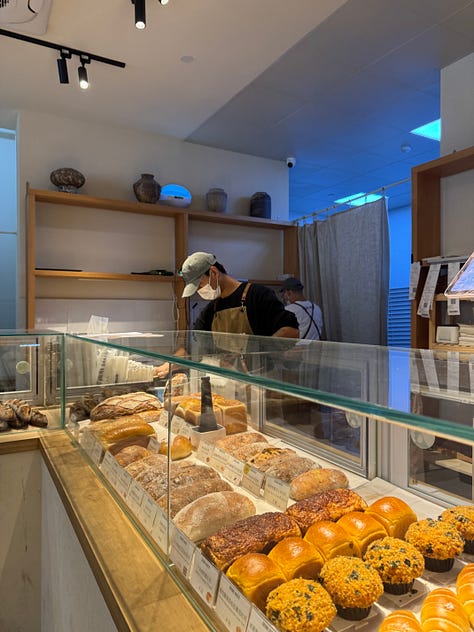



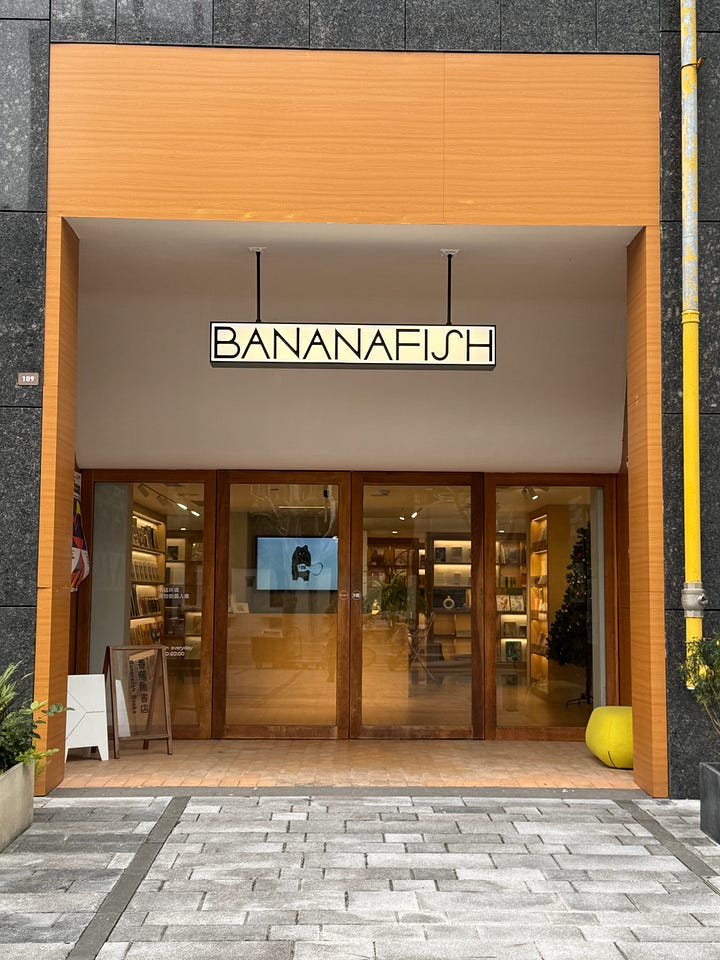

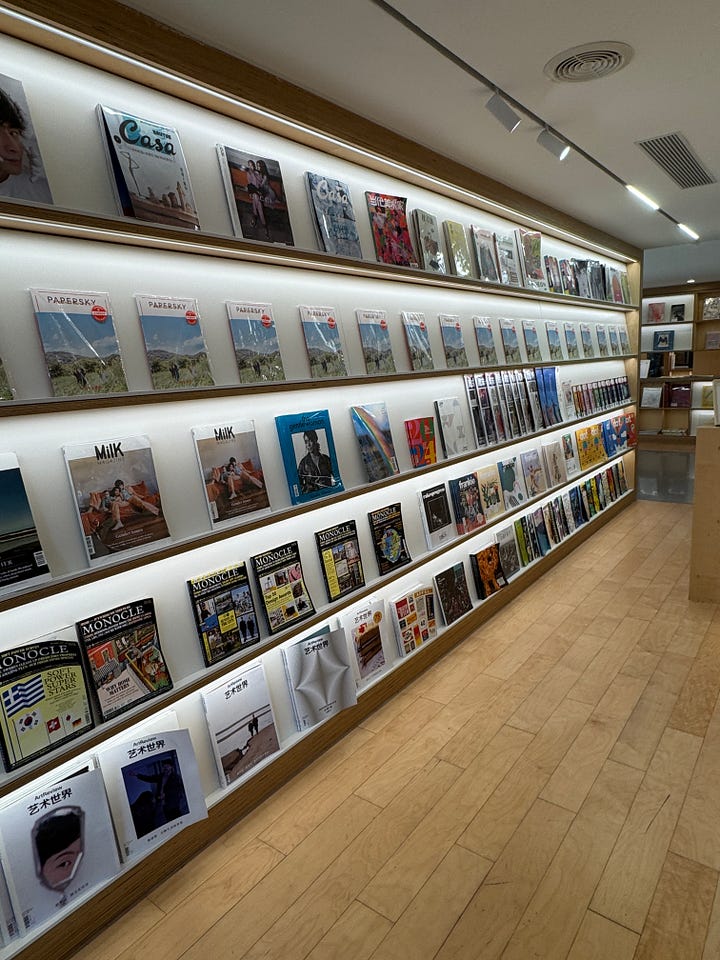

Reflecting on my trip, Xinjiang’s north has revealed a side of China I had never seen before, a vastness of breathtaking beauty and rich culture. For a tropical girl, I would brave the cold again in a heartbeat to immerse such landscapes. And after a year of non-stop travel (work and volunteering) in 2024, this Xinjiang family trip has been the break I needed.
Just as winter allows nature to hibernate, I’m reminded to take time off to reflect on nature’s cycles. To understand that growth takes time, and rest is part of the cycle. it’s an invitation to pause, to understand what thrived, what withered, and step into the year with grounded intention. In time, as the seasons shift to spring, the flowers will bloom, and the landscapes will come alive again.

